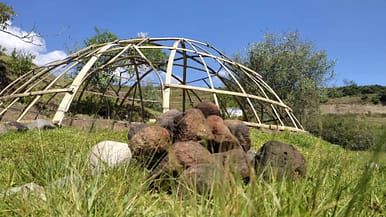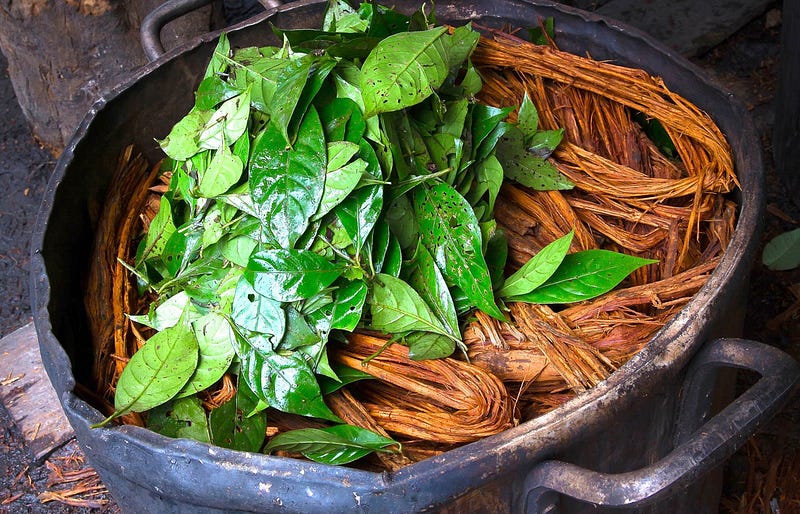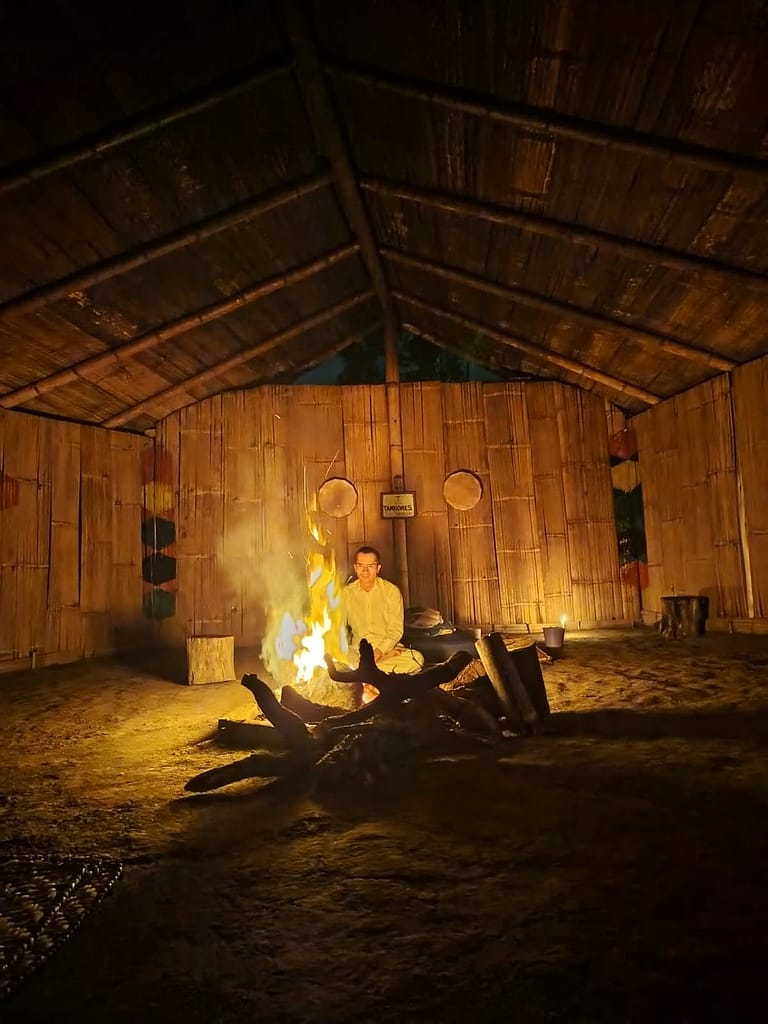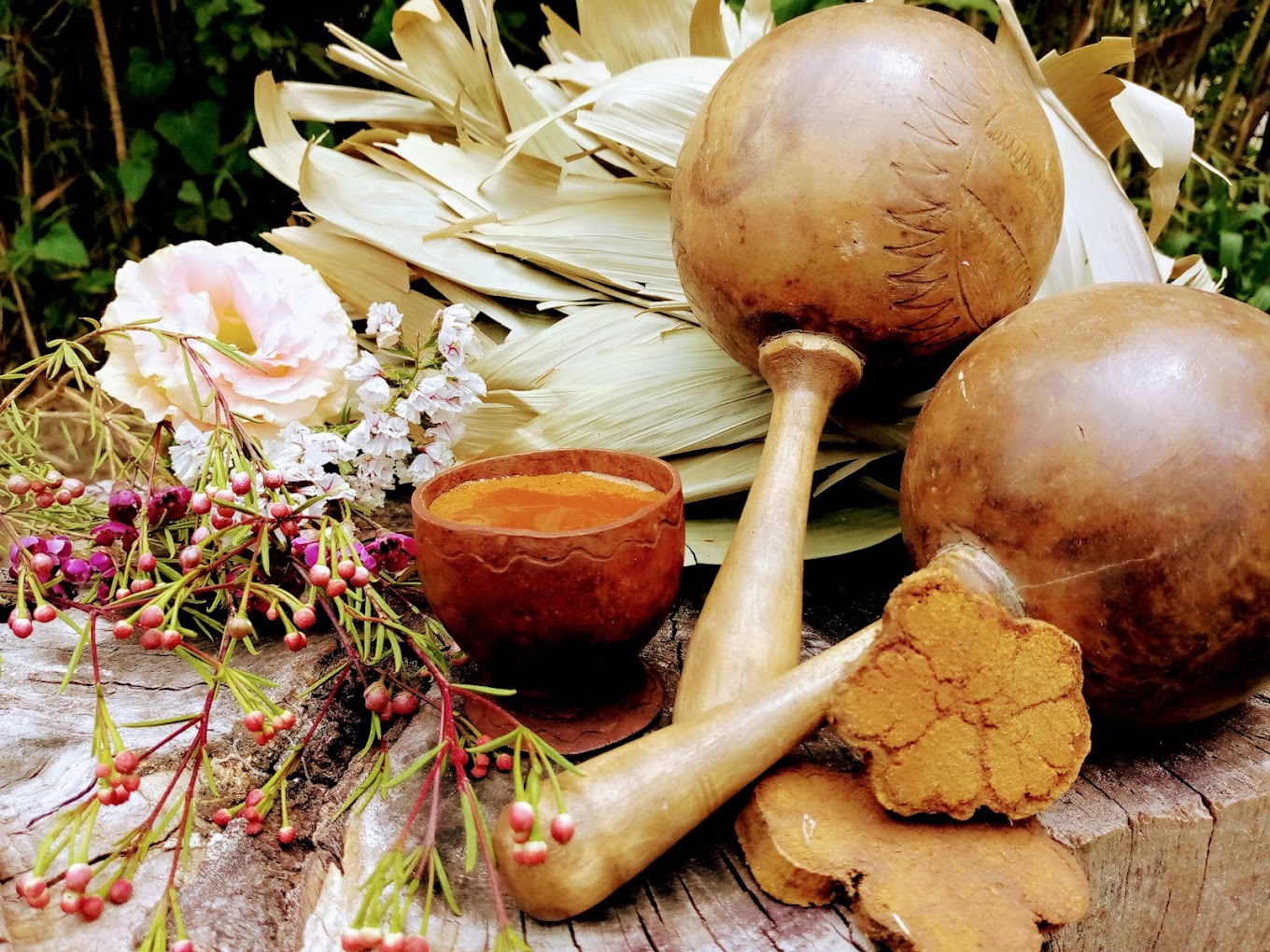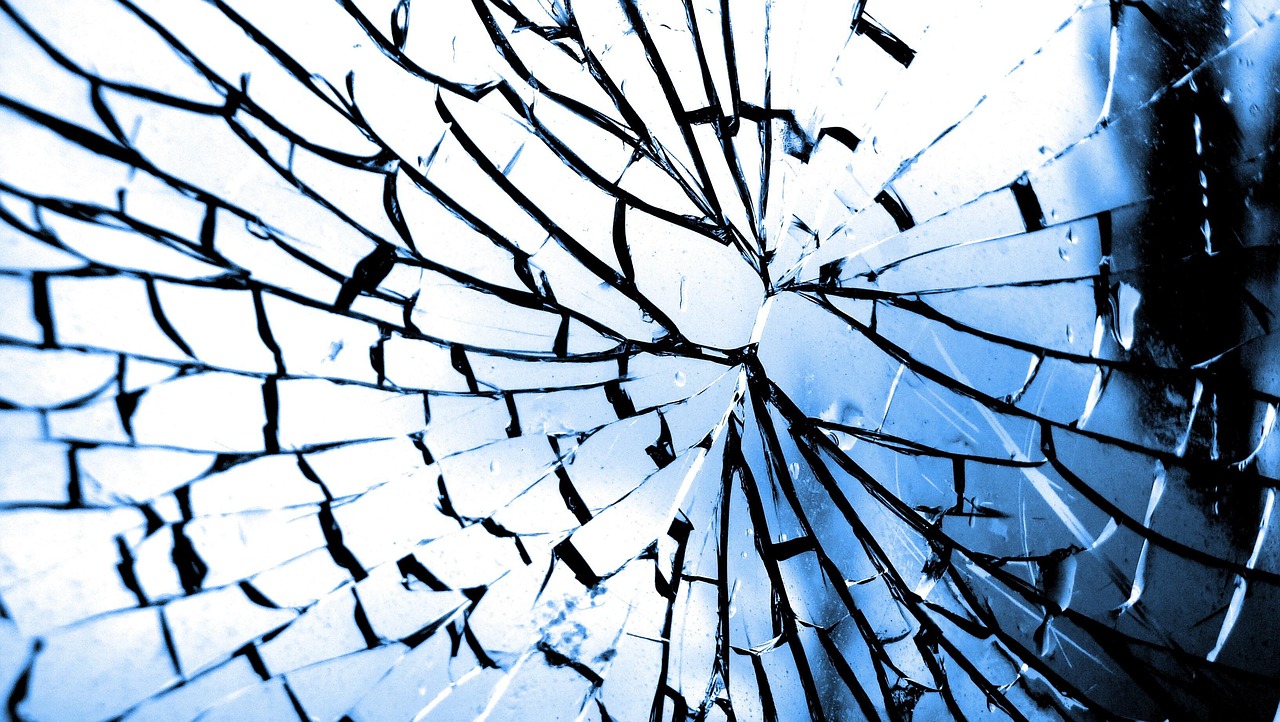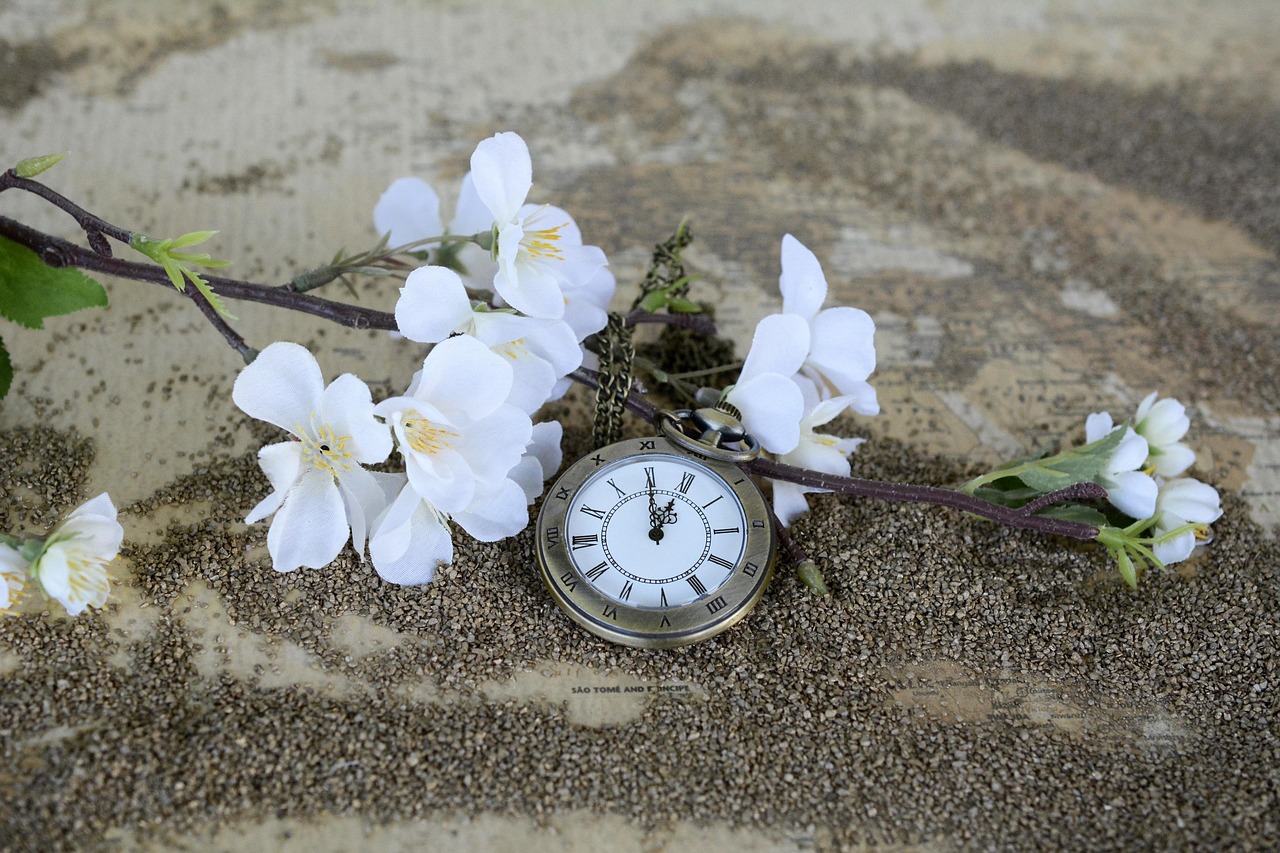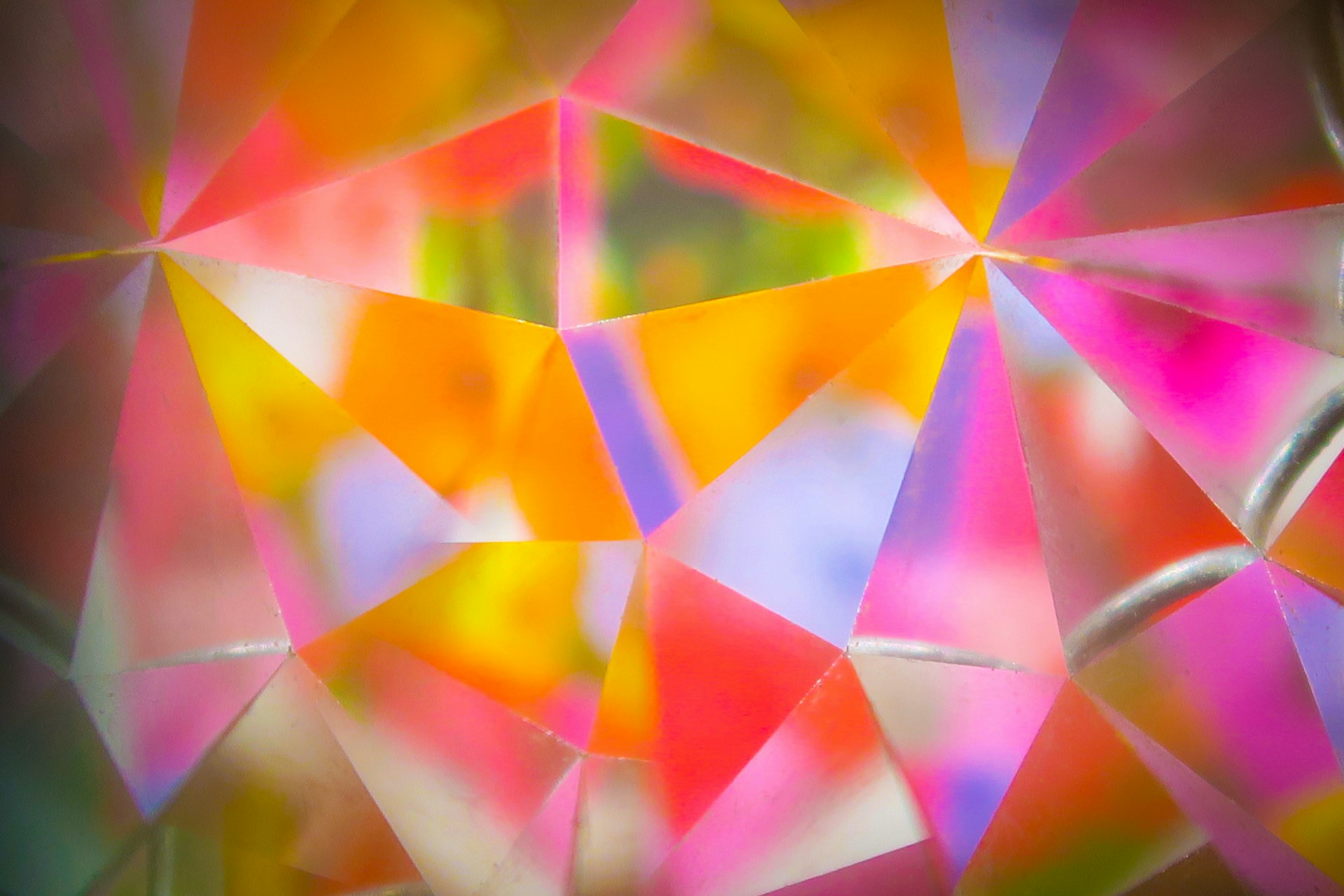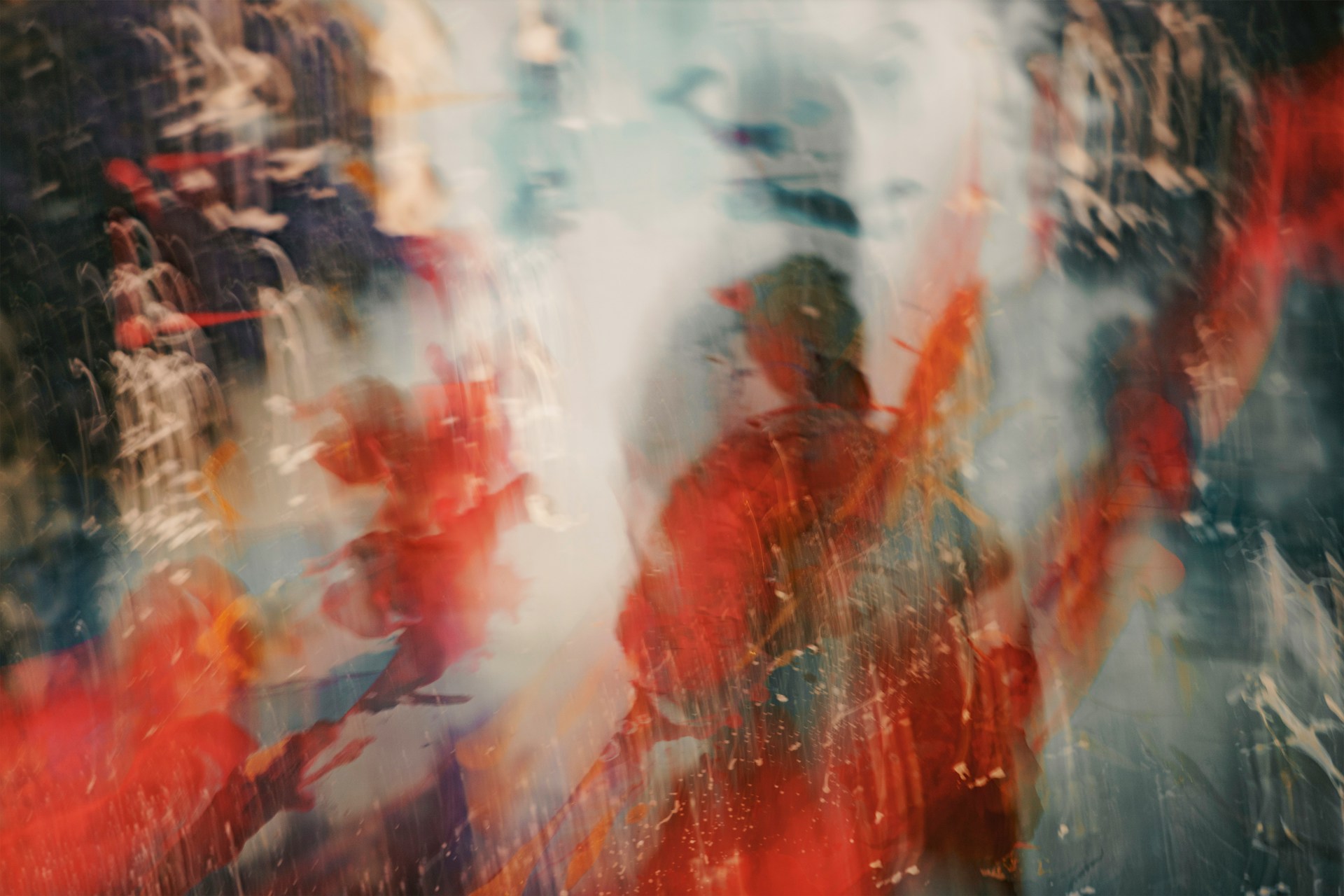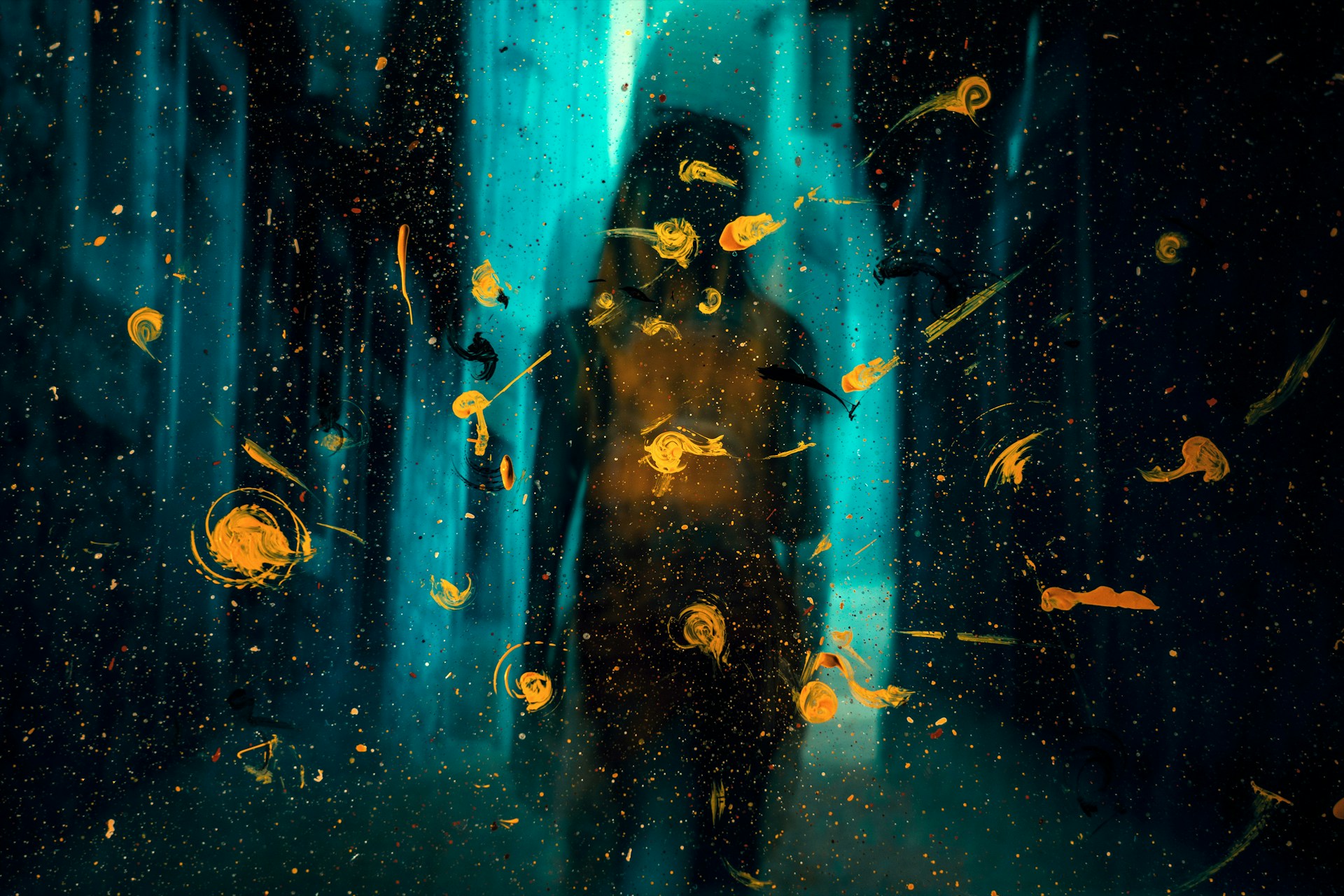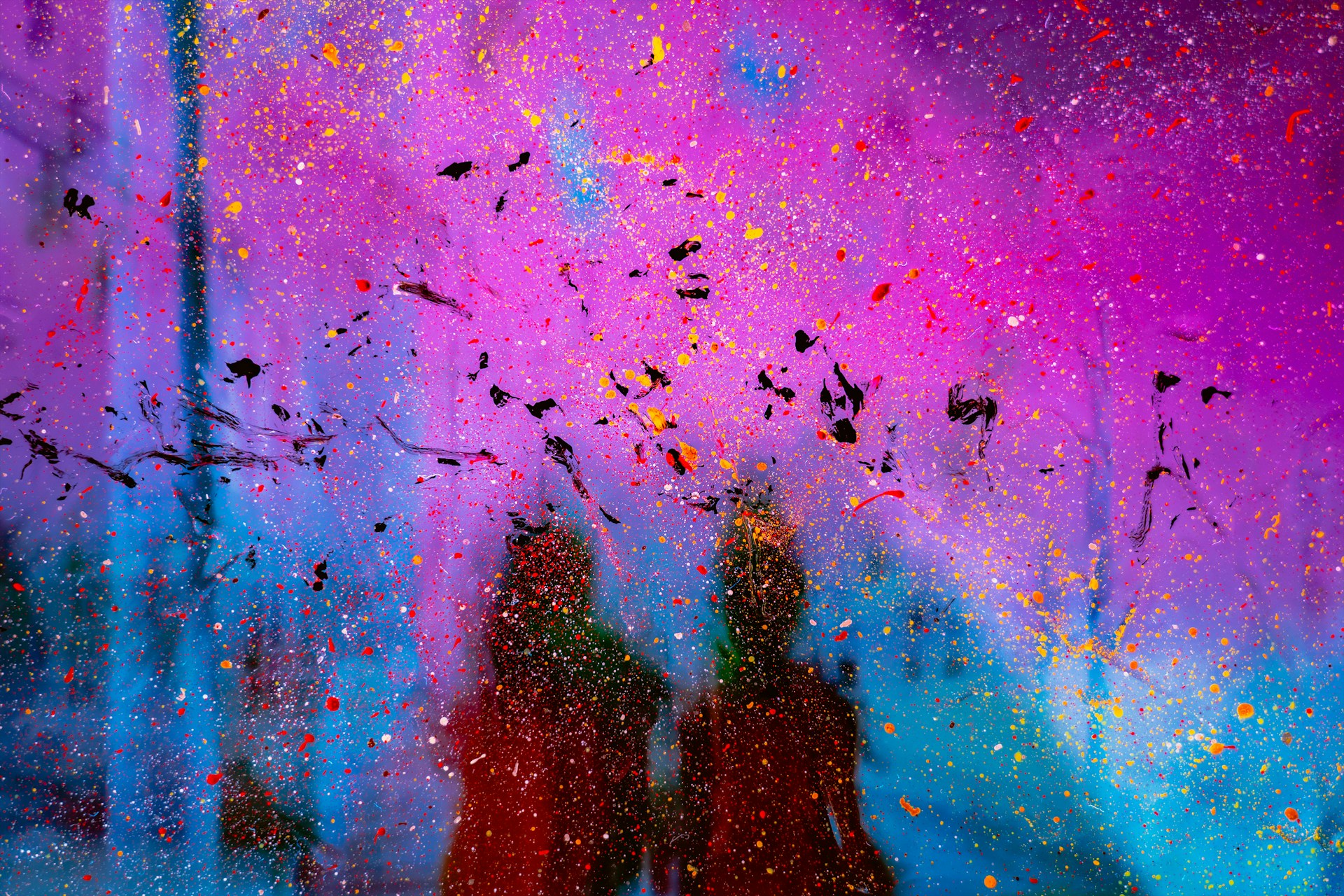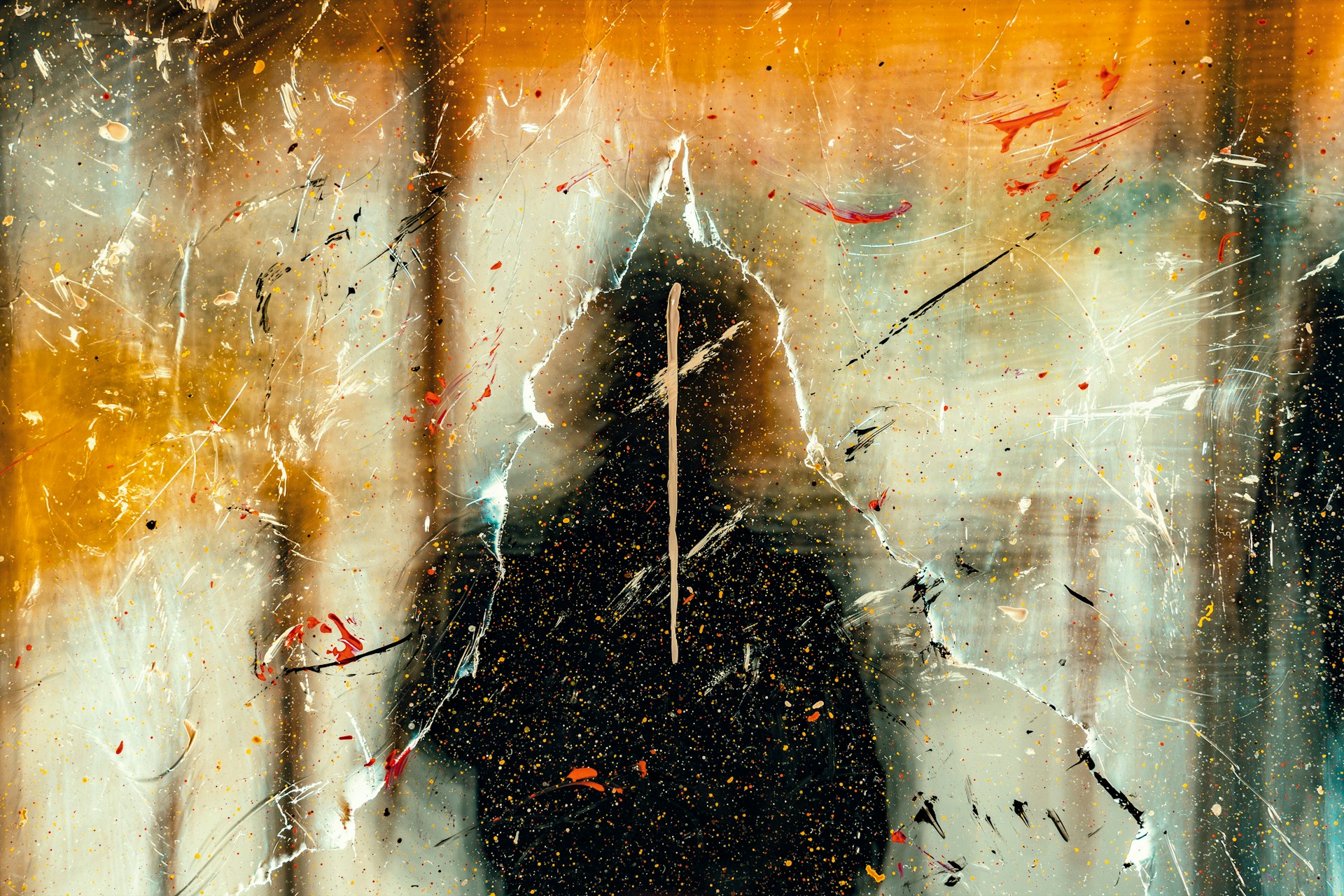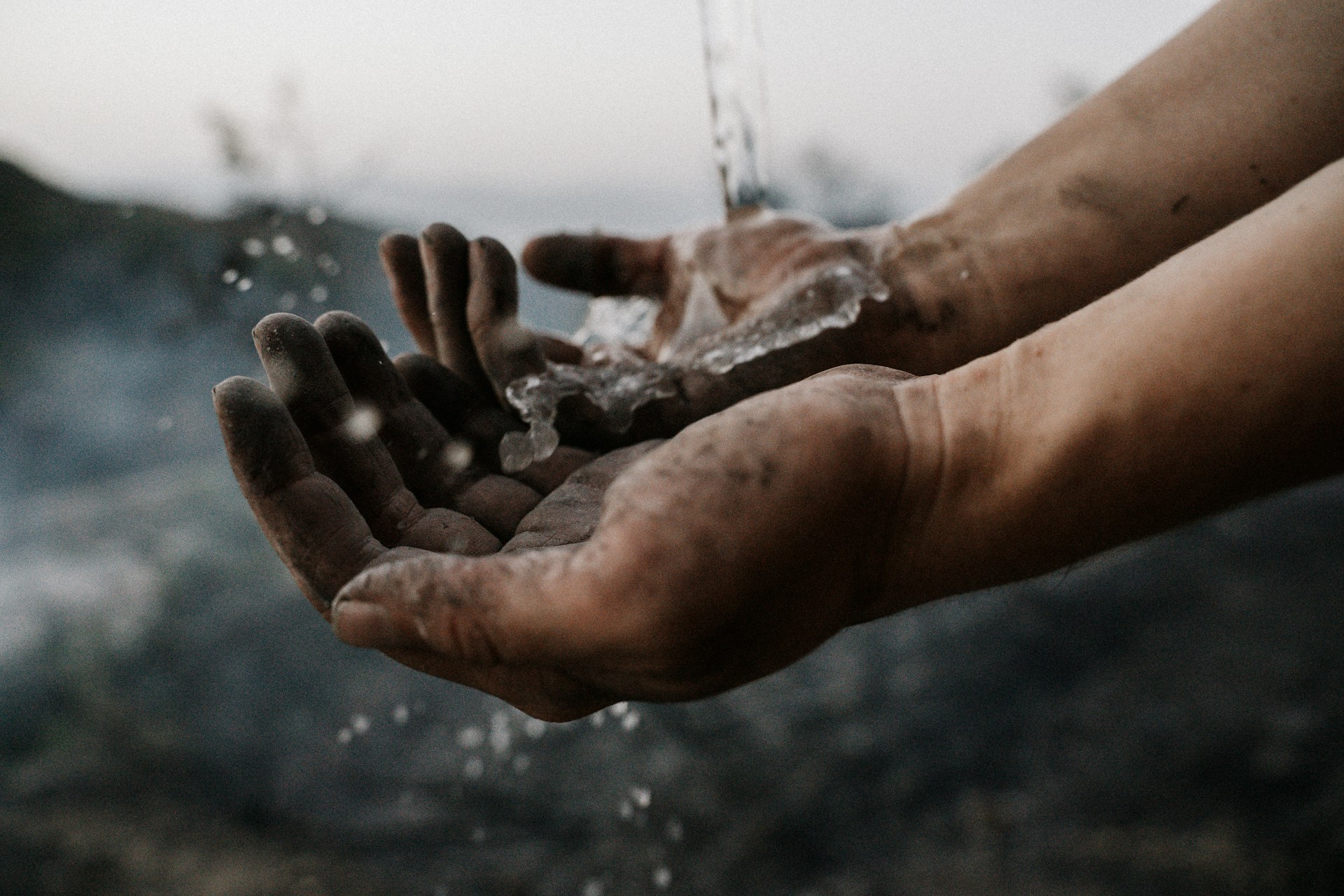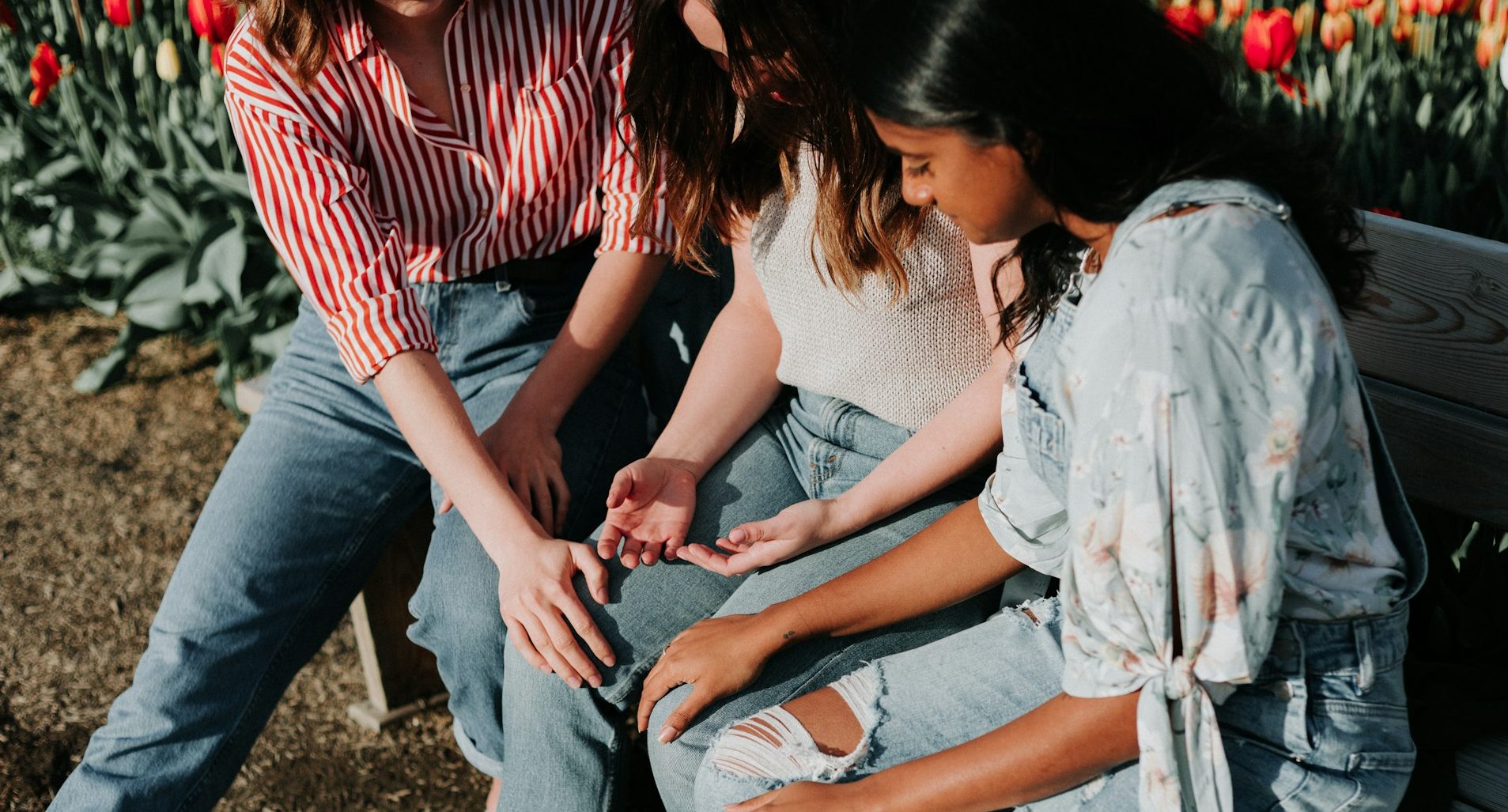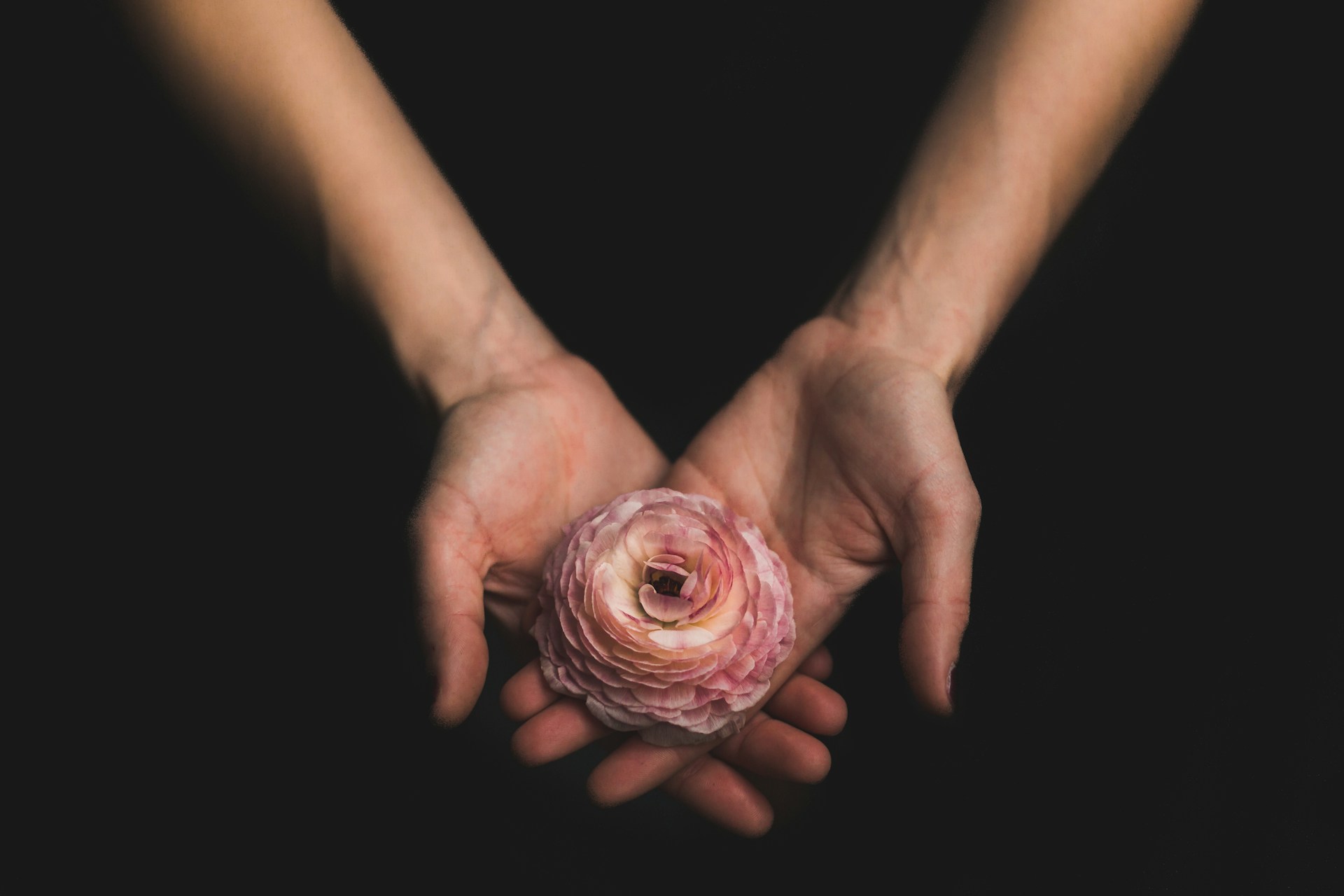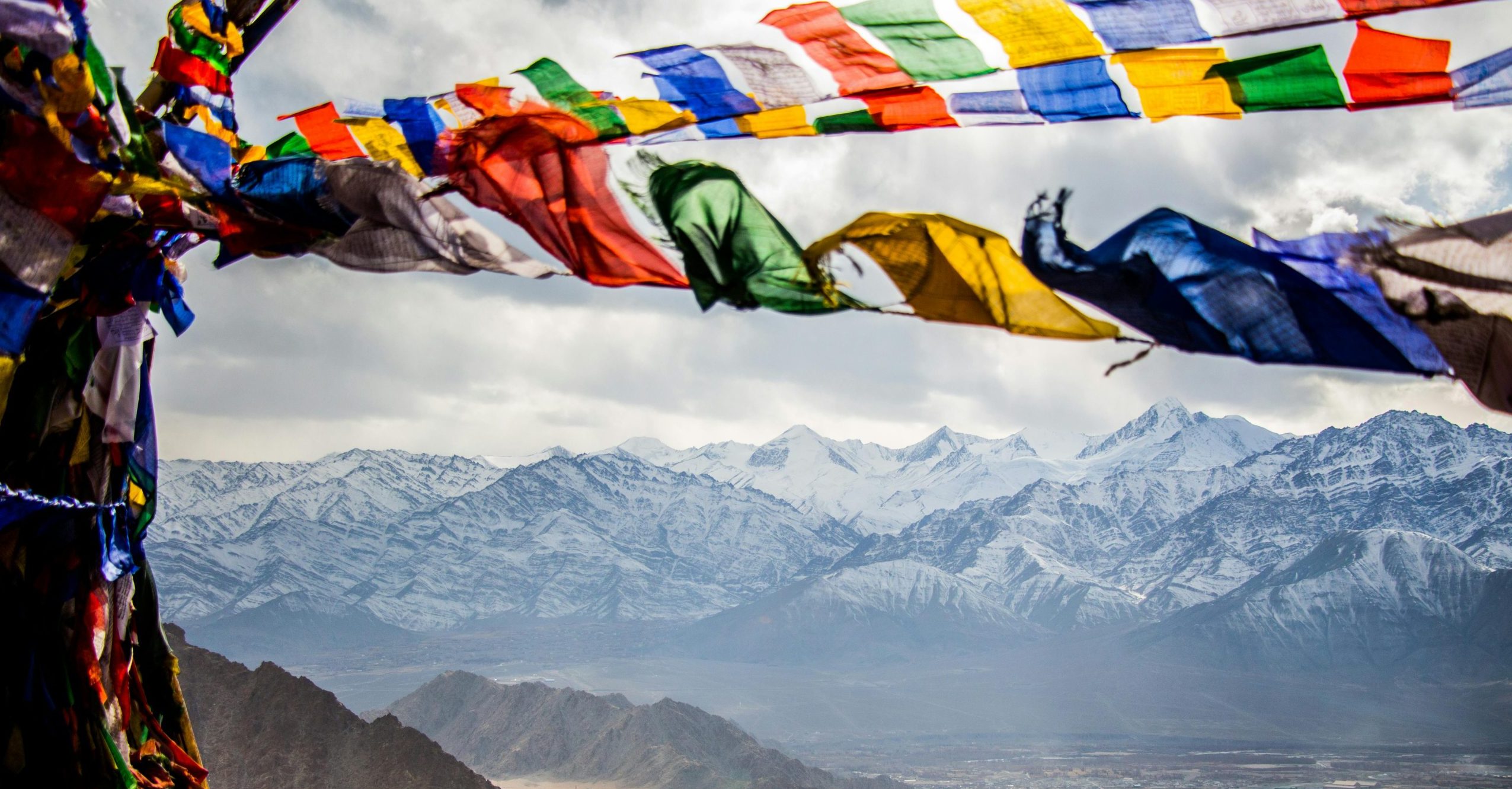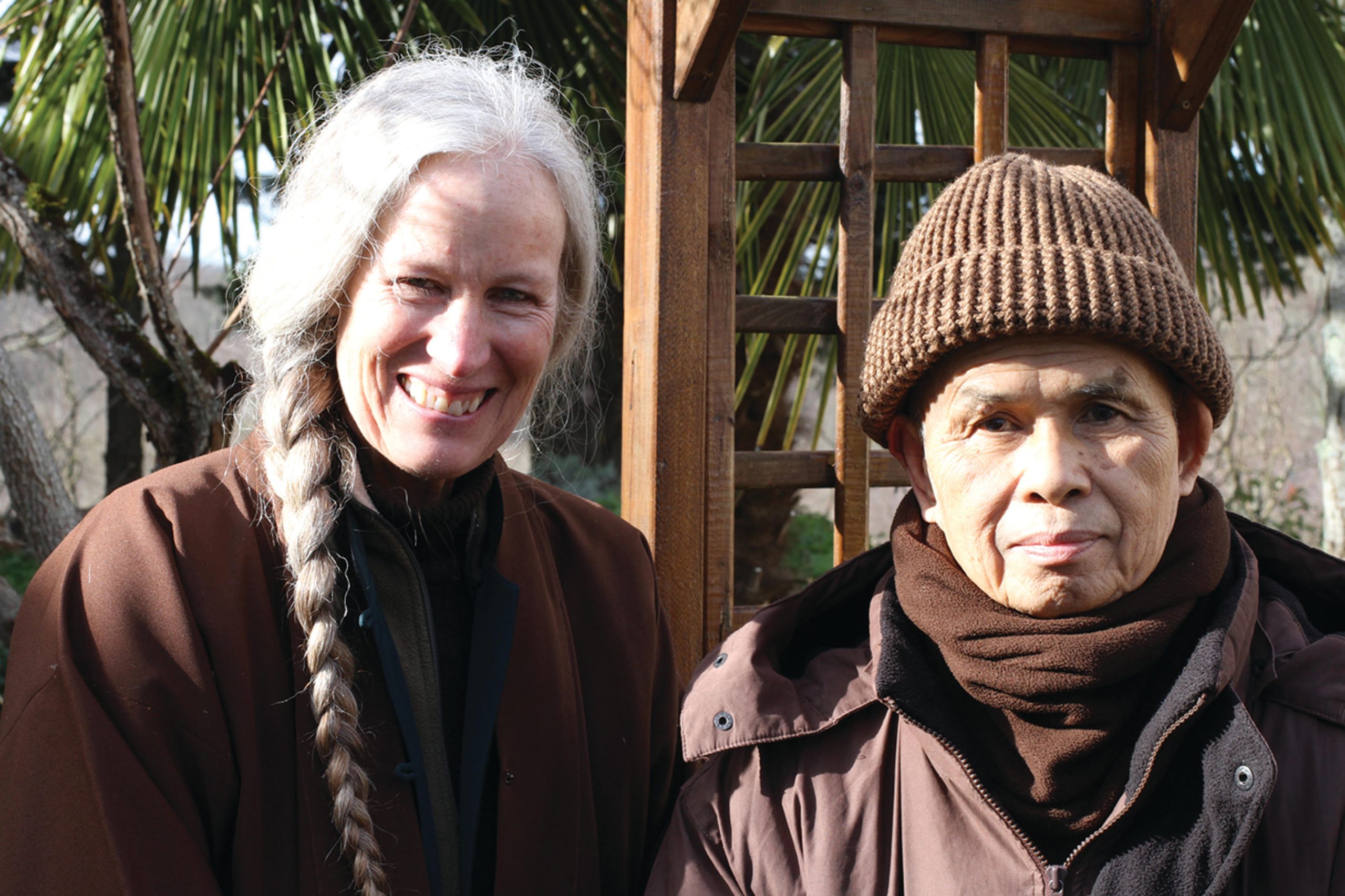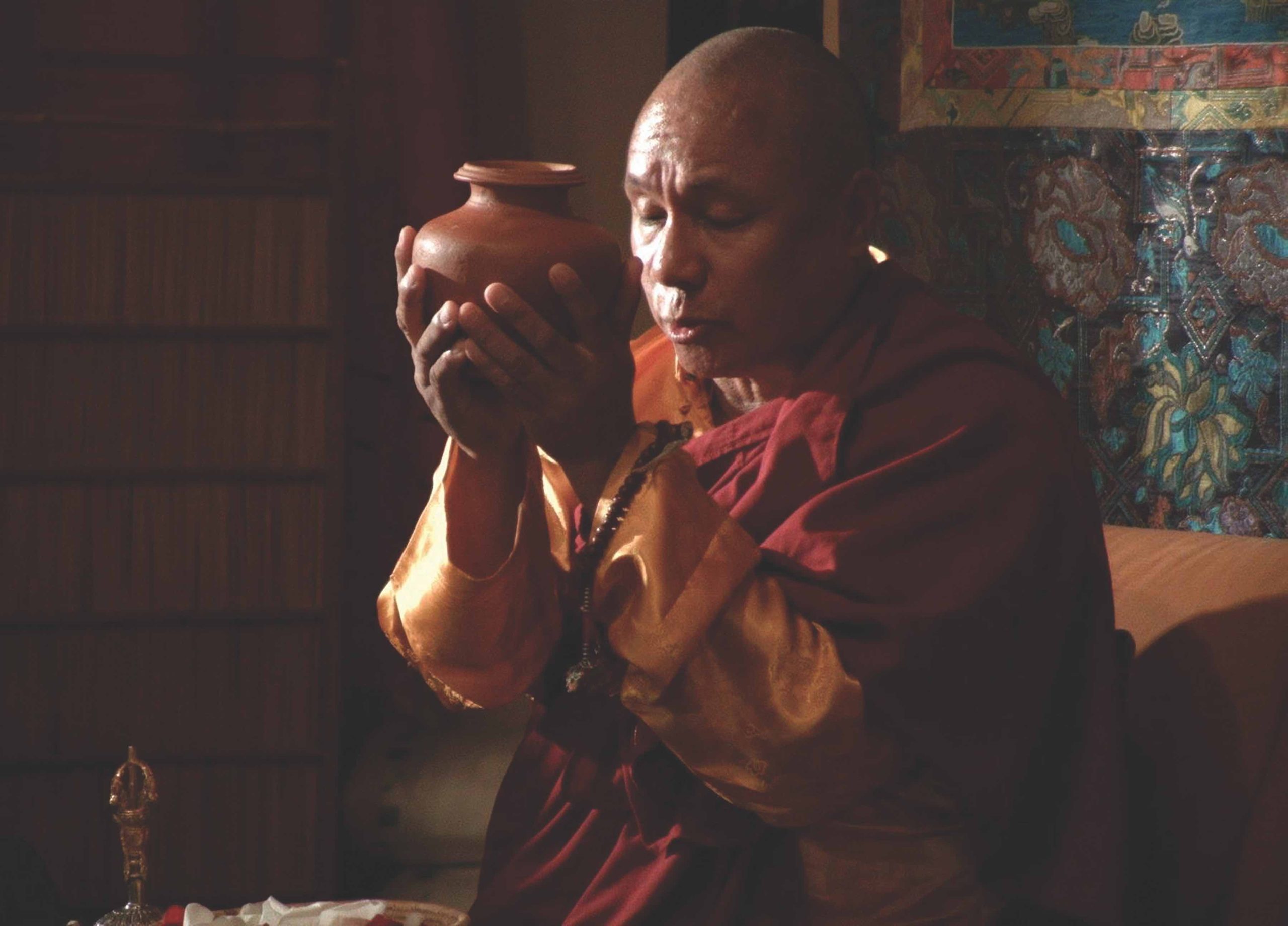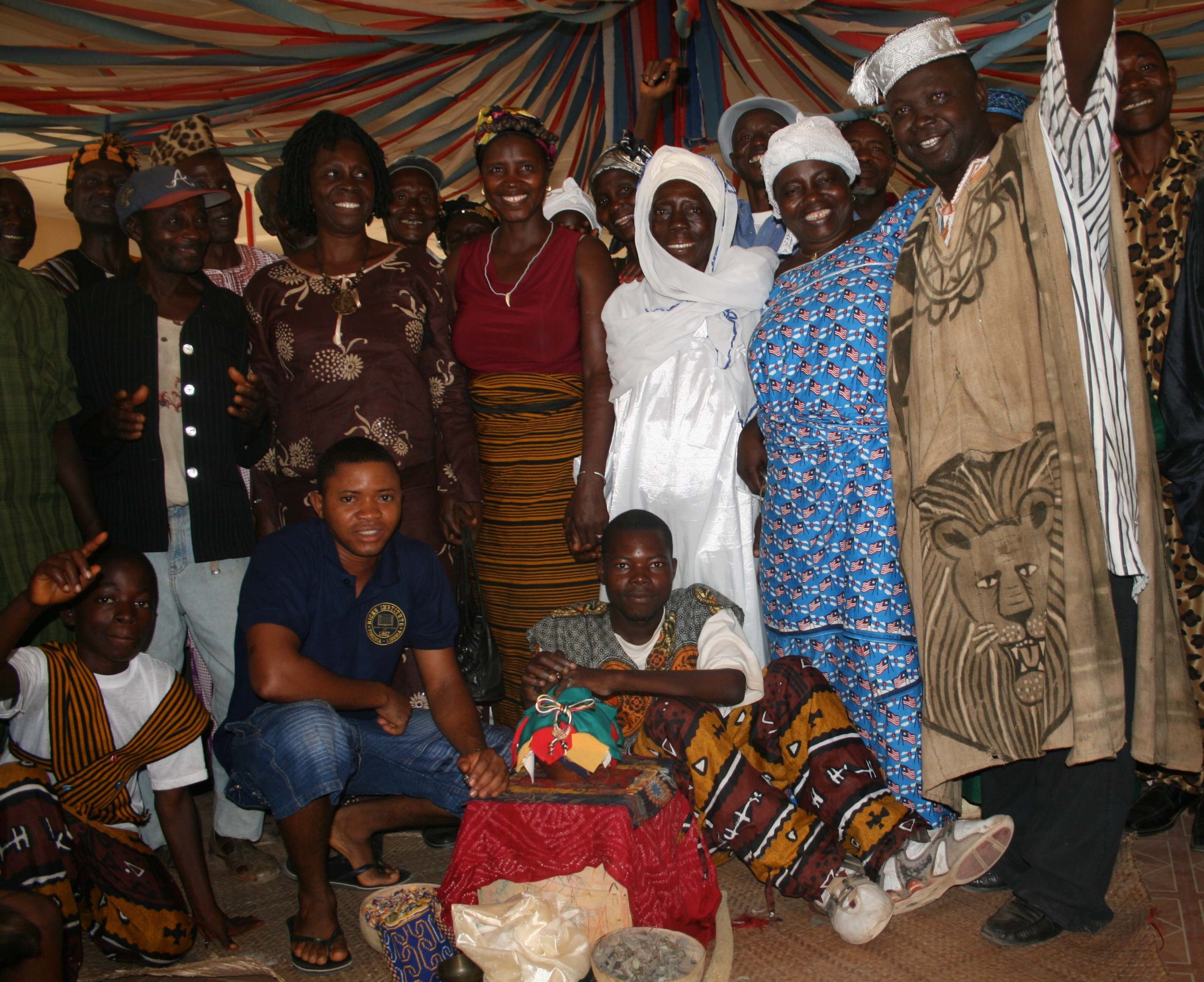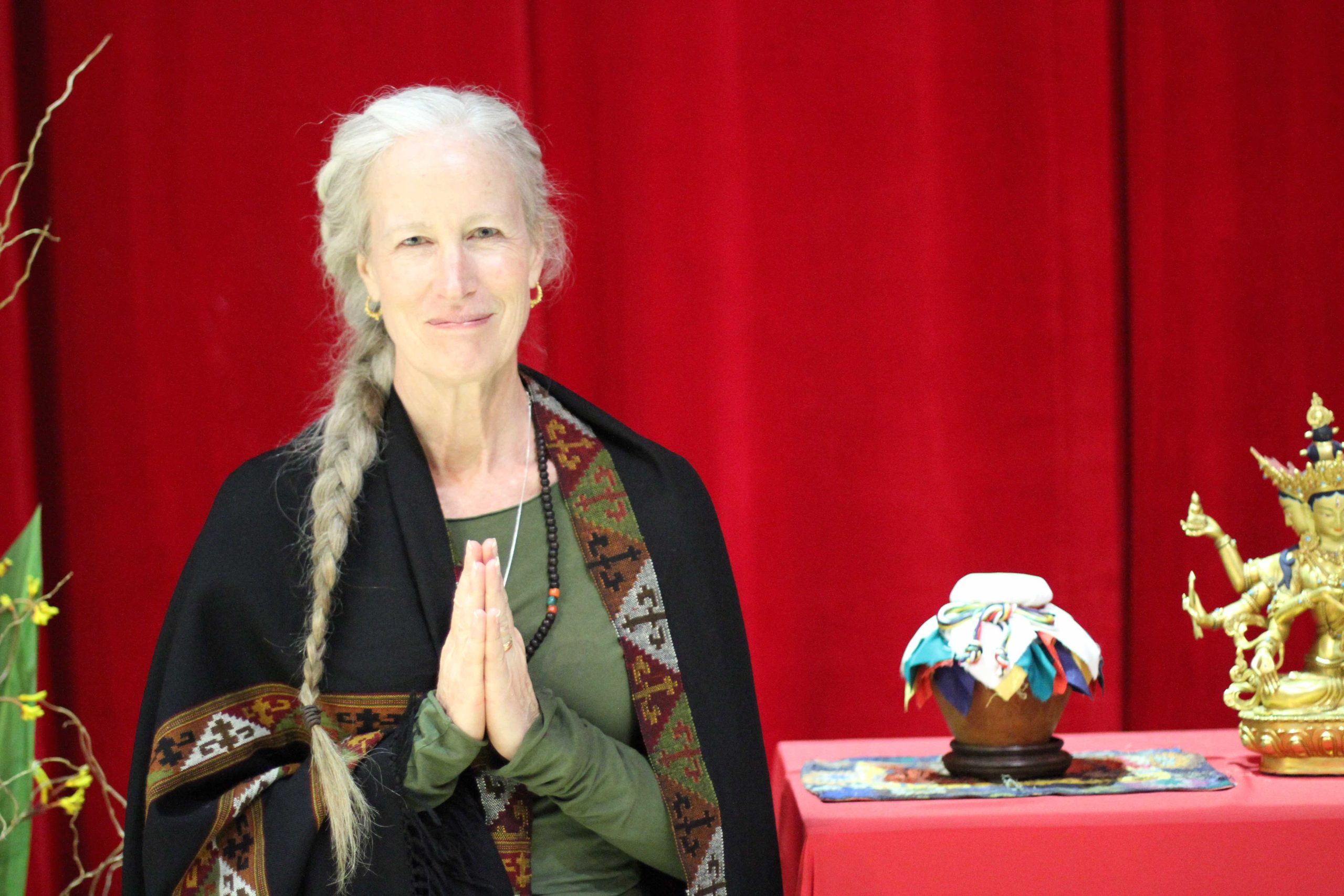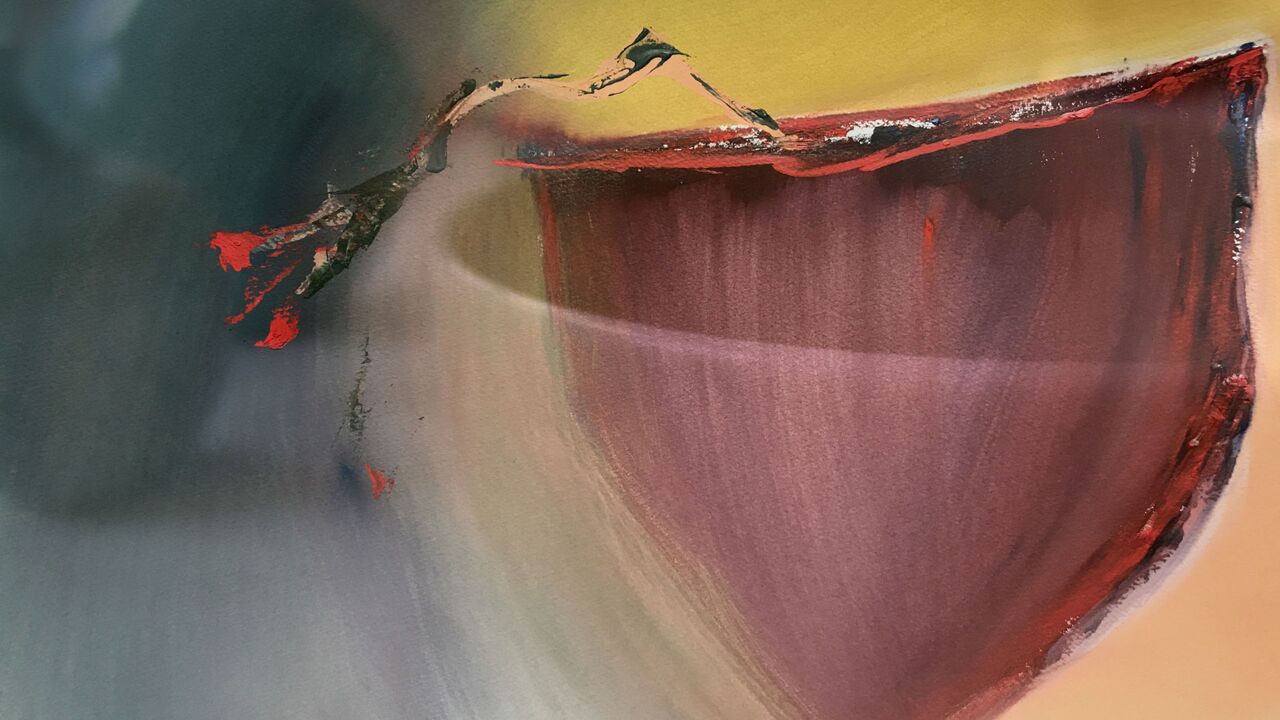Thorns and Candy
Thorns and Candy
featured image | fszalai
Author’s note: What follows is a written conversation with the Colombian shaman Juliet Goméz and her partner Hernando Ruiz a few days after I had participated in their ayahuasca ceremony in Ecuador. The “flashbacks” I describe became so strong that it took me over two years to compile this piece.
HANNES
Dear Juliet & Hernando,
I will be writing in English, although the true poetry of the world is written and heard in all languages at once, a glossolalia that transcends the differences of languages and speaks directly to the heart.
One week has passed since we met, and I’m slowly coming back to normal—a new normal, indeed, and I agree that the experience has truly changed my life. Here in Mexico City, I keep having ayahuasca dreams and I encounter many similar patterns in my sensual experience, my daily rhythm, especially my thoughts. Sometimes, I wish never to have tried ayahuasca, to go back to the old normal; but there is also a new light that slowly unfolds.
What keeps returning and surprised me a lot is a terrifying darkness that surrounds all my memories of our experience. Although I felt very warm in your good company, as soon as the drug hit I found myself in an amazing techno club that, however, slowly turned into a laboratory for experiments on humans, a concentration camp, with medieval torture instruments: the jungle is hell, really really hell! And in my eternal suffering, I cursed you for bringing me into this, and I thought that you wanted to kill me for real.
In the end, you didn’t kill me, so in a way you saved my life. But I keep wondering whether this extreme suffering was a necessary aspect of the process. In the European context—with which I am more familiar—one may speak of catharsis as a spiritual cleansing through suffering, but I’m unsure whether such a concept is applicable here. In India, for example, there are similar concepts, too, but more central is eternal bliss, a state in which the mind transcends the difference between joy and suffering. To put my question more baldly: Must one go through suffering to gain eternal bliss? Or, as the writer Kafka put it: Does one have to suffer torture to finally shout out the truth?
No longer curses but best wishes,
Hannes
JULIET
Hi Hannes, thanks for writing.
There is nothing that we, as humans, can evoke in anyone. It is just the power of medicine that is expressed on different levels for each person. We must bear in mind that we have a long history, life after life, that has left its mark on the universe.
That record speaks of all our past mistakes, cruelty, violence, darkness. Maybe we forget it now, but the universe has the full recording of all those acts, individual and collective, which have become our karma, that is, our debts.
Ayahuasca is the Liana of the Resurrected. It is the thread that catches us from all the dark and deep lakes where we have been for ages and ages.
Human beings cannot imagine where they have been, life after life.
There are thousands of jails, in different states of consciousness, where we have sown evil. We will never find it outside ourselves.
With what you wrote to us, we understand that what you experienced under the influence of ayahuasca was a small moment in your own evil and shadow. What you sowed in the past.
There is no need to be afraid of this, or curse. It is better to thank – because little by little the light undresses you inside, with the opportunity to realize and do new things in the present. The thorns are the steps to ascend the stem, then reach the soft petals and pistils of the rose. This is divine knowledge: climbing with courage, until you reach the rose. Nothing is free, everything has a cost.
True happiness is not a human emotion that brings you pleasure, well-being or laughter. It is an elevated state of consciousness, which cannot be reached without knowing the thorns of the rose. Because even from the plants with the most thorns, beautiful flowers sprout.
It does not matter if the road has thorns, stones, pain, obstacles, difficulty. We must live it with intensity, since it is the narrow path that leads us to the light. But it is not suffering. It is only the path, with different nuances, colors and flavors: bitter and sweet.
As an initial treatment, we recommend people to approach the medicine of yagé (ayahuasca) at least seven times. We have in mind here the seven energy bodies, which is where all our shadow hides.
You have already seen and understood that medicine is not for the curious, but for all those who want to enter the university of higher spiritual studies, where nothing is written. Everything has to be felt on the skin.
Yagé medicine gives us wisdom about ourselves, but we must first pay a high and courageous price.
With patience, courage, dedication, respect, we can all achieve it.
Yagé medicine is liquid God. Once it enters our body, it never leaves. It stays in the form of consciousness, in your blood, your thought, your energy, your heart, your word.
That is why we understand that you were not mad at us. Perhaps you were just very far away and forgotten by God, due to ideas, concepts, theories or customs.
But you should always remember this:
“On the tree of life, we are just the leaves.
The power of the trunk and branches does not belong to us.”
A hug!
Juliet
Ceremonial Preparations at Sol Sanación
HANNES
Thanks for your soothing words. I can feel the light right now, and I remember that even in the process, at some point, I got in sync with the liquid god and with your help I discovered ways to open up rather than trying to control—the thorns never disappeared, but they somehow grew into the backyard.
There is a brilliant film called The Congress where almost everyone is high on psychedelic drugs and all humanity turns into a dystopian utopia in rainbow colors. Only the protagonist still cares about “reality,” and I never understood her because the wild reality out there feels so much more real than “reality” itself—and so much more on ayahuasca where every glimpse, every sound, every movement of my tongue or toe opened a new world for me—and still, there came the moment where I just wanted to return to my love and our little child: here, in Quito, Guanguiltagua; this reality, not any other, not for any price in the entire universe.
Infinite different layers of reality appeared on top of each other, inside each other, in countless feedback loops and endless spirals, which at every instant spiraled up themselves anew. I understood that subtle movements of my body and my mind could lead to very different avenues or regions of pure light where the masters of this sacred world reside, and that this life in chaos is not limited to drinking ayahuasca but simply goes beyond the so-called normal, sober mind.
My mistake was to forget that the physical effect of ayahuasca over time would disappear and once again I got afraid of being unable to return. I was afraid of becoming insane, and you saved me once again, which has some sense of irony because I’m writing on a book called Divine Madness: how could a title come any closer to what I witnessed with my body, mind, and soul?
You will be aware that drugs or sacred medicines are often associated with so-called hallucinations, but especially in the case of ayahuasca it is clear to me that—to the contrary—one witnesses the sacred truth of Being (ser) far beyond “reality,” which has been imposed to us by socio-political ideologies. As I see it, truth is not actually a world but rather a chaos of synaesthetic feelings, sensations, memories, and thoughts that constantly escape our human urge to control. In order not to get lost in it, humans have invented many theories and customs.
What do you believe? How is your own experience with ayahuasca?
Thanks,
Hannes
JULIET/HERNANDO
Hello Hannes,
It is very important to continue living human life in its absolute normality, without wanting to isolate ourselves from it. Many people seek extrasensory experiences in order not to live. This is a serious mistake.
It is better to follow the path of the balanced human being:
“With the heart in the sky and the feet on the ground.”
It is a balance that is difficult to understand and practice, but we can tell you that it can be achieved and—since you know us—we don’t look like mad people, haha!
Certainly, it is not a question of taking yagé medicine all your life, rather, it depends on what we are looking for.
To that sensory experience you had, we say: “Candy experiences.”
We call it that because Mother Nature, for the first time in our lives, enthralls us with this endless range of colors, sensations, worlds, universes, etc., but little by little that must mature.
The natural and correct view is that experiences with medicine are rather introspective. May you abandon the vast universe, to know yourself.
Knowing more about ourselves and all those things that we must do, and also those that we must abandon, so that the mission of being is finally fulfilled, in the human body.
It is a long way to go…
The title of your book is very appropriate: “Divine Madness.”
It is beautiful, because precisely, you have to go through that divine madness, get drunk, and then return to sobriety in order to regain your sanity.
It is a constant taking and letting go.
That permanent impulse to control is produced by fear and separation.
Fear, because we do not want to feel or experience many things, not only under the influence of ayahuasca but also in everyday human life.
And separation, because by distancing ourselves from the divine source or God, we believe that we are in control of everything, forgetting that that place is occupied by the Big Boss of everything: that there is nothing to control.
Yagé medicine leads us to remember our forgotten nature, and the truth is implicit in this.
Truth
Love
God
Light
These are synonyms.
They are not words that mean something different. They refer to the same thing.
That is why for us it is clear that you do not have to believe in God. You only have to practice it. Day by day, second by second; in thought, word, feeling, and act.
In my case, yagé is everything I write to you and more.
From the very beginning, it led me to remember my nature.
Step by step, without explanations. (This is not so good for intellectuals.)
Only through the heart, little by little, have I unraveled the fabric of my life.
I have never stopped being human, and I have never tried to evade the challenges that this entails.
In the case of Hernando, it has been the same.
First, a lot of candy (lights, colors, fractals, rainbows, energy, portals, etc., etc.); then the experiences became more concrete, human, and familiar for both of us. Very specific.
We tell you: “The Tasks of Yagé Medicine.”
This speaks of a healthy process with the medicines.
Because we know people who have been taking yagé for 10 or 20 years and have not managed to get past the “candy,” they do not know anything about themselves.
A hug from the Ilaló volcano
Juliet and Hernando
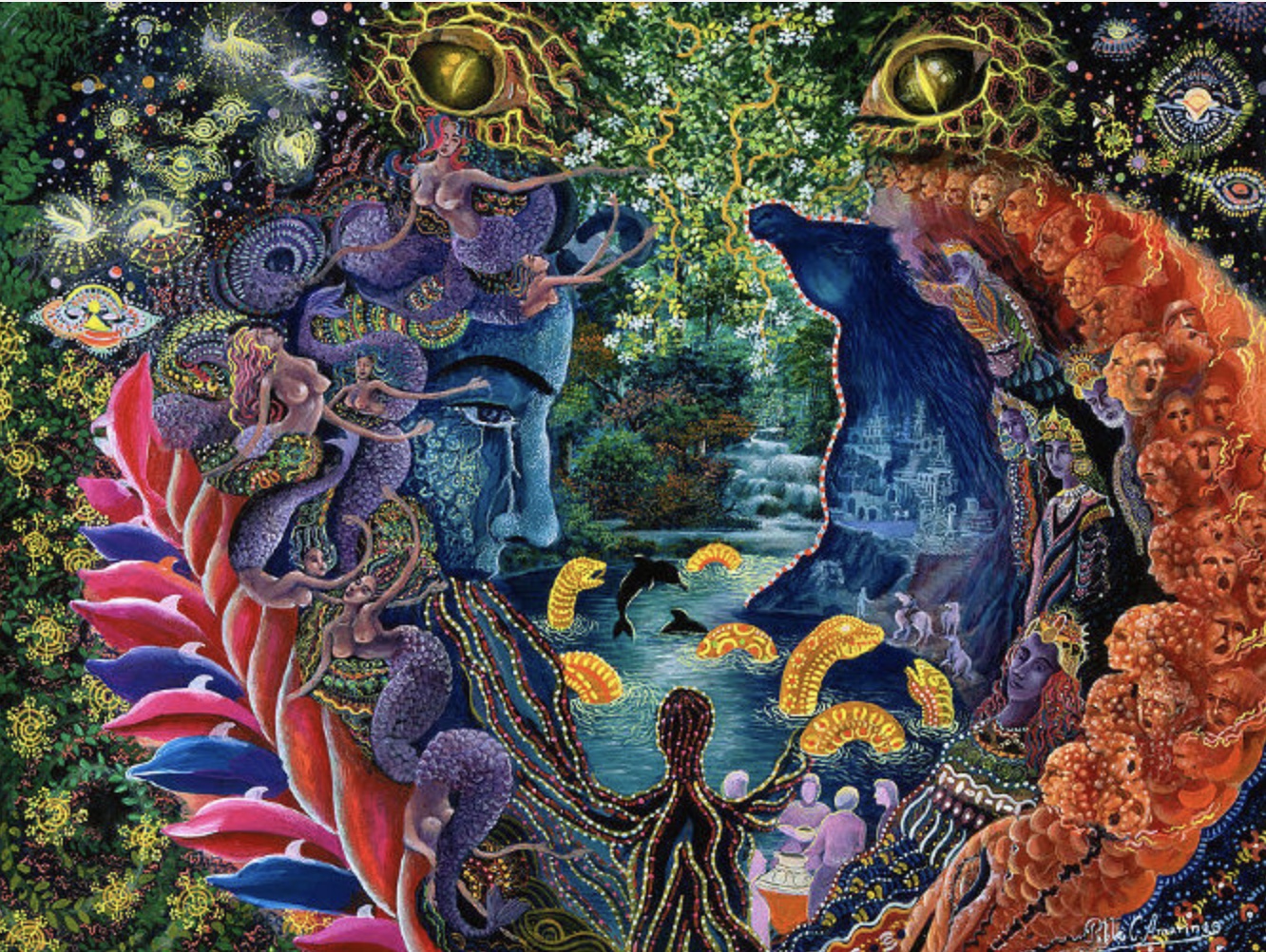
HANNES
Hello Juliet and Hernando,
Thanks for taking the time for all these.
True, it’s not so good for intellectuals and, goddamn, I’m a philosopher, haha! But when I was recovering under the warm sunlight (sol sol, luz luz) and I was staring at the giant tree at Ilaló still spiraling about itself and sometimes staring back at me (!), I attained a strong conviction that I have to go this one step further than philosophy and mere intellectual discourse. All around the world there are unspoken practices which are sometimes called the “mystical”; your personal journey through the “sweets” of ayahuasca and your return to concrete everyday experience especially reminded me of Zen Buddhism: there is a saying that before the practice of Zen, a mountain is a mountain, and after several years of practice, a mountain is no longer a mountain, but at the end of the journey, a mountain is a mountain again.
Your conviction to truth/love/God/light is so strong, there is no comparison to any academic in the world, and your guidance of the ceremony throughout the night requires a strong sense of details and a skill that impressed me a lot; I truly loved Juliet’s performances, the use of different media including electronics. In my view, one can also see the whole ceremony as a genuine work of art—a true Gesamtkunstwerk, to make a joke about European opera.
What impressed me, too, is that you seem to be managing the entire “temple” on your own, which in English we call a grassroots project. When my art collective was still back in Athens, Greece, we were running a grassroots art space that hosted concerts, exhibitions, talks as well as workshops and ceremonies not very different from yours. When I was entirely engaged in my work, I often found it quite ridiculous to still label what we do as “art” or “philosophy” or “politics” or “religion” (we had something like a temple, too) but one sometimes has to keep these labels for the public, not least because of funding opportunities. After this, how do you feel about your label of a company for “mental health”? The price we paid is quite ok for visitors but seems a ridiculously small amount if one considers your hard work and the material required for the whole ceremony. Or do you feel closer to the label of the “temple”? Is there any difference for you?
Thanks and hugs
Hannes
JULIET
How great that you asked me.
Sol Sanación is a project from Heaven placed and inspired in my heart through yagé medicine. I never imagined having a healing center, it was not among my human plans. But God, always wise and silent, has a divine purpose for each person. Some find out about it, others don’t.
Without a doubt, in my case, the medicine was responsible for helping me recover that ancestral memory and leaving it as an indelible tattoo on my heart. At first, I thought that Sol Sanación was only a place where we offer our services, then we recognized that it is also we (Hernando and Juliet), as individuals, in a process of transformation, and that in the same way, spaces must go through a similar process. No space, company or temple can be transformed if the individuals that constitute it do not transform themselves.
Thus, we began a whole way of the cross (via crucis), but in the good sense of the word.
Before I met my husband, Sol Sanación already existed (2010 in Colombia). He came from working alone, with a lot of experience, but without a fixed place. It is very different from starting something new, because it was already about institutionalizing and professionalizing what we did, without losing the essence.
This task was not easy at the beginning, but little by little, this approach of maintaining the ancestral was born, but adjusted to human life: paying rent, public services, food, clothing, maintenance, and above all, CHARGING for our work. From the beginning, it was all very clear to me.
We always had to look for a place in the countryside that suited our needs. We have invested a lot of work in adapting to places that are not ours, we had to leave orchards, constructions, gardens and so on, in all the places we had rented.
Many tears shed, but we had to keep going.
In 2016, I had a vision that we had to leave Colombia for Ecuador; I wrote it in a notebook (as I always do), and in 2019 we managed to trust only in the voice of God and leave.
We sold our motorcycle, some household items, and the rest we gave to other families (bedding, kitchen items, etc.).
We only left with our clothes and our two dogs. We set off to a country where we didn’t know anyone, without any friends or family, and without enough money. We set off to begin a life that only God knew clearly. We did not.
The mission was to make an offering at the volcano Imbabura.
After many difficulties and abuses from Ecuadorians towards us, we finally achieved it! From that day on, many things began to unfold within us.
Sol Sanación Temple is a project from Heaven that must be given form on Earth. (If any psychiatrists listened to us, they’d tie us up… hahaha…)
That’s why it has been difficult, but we are not tired, because we know that it must be achieved.
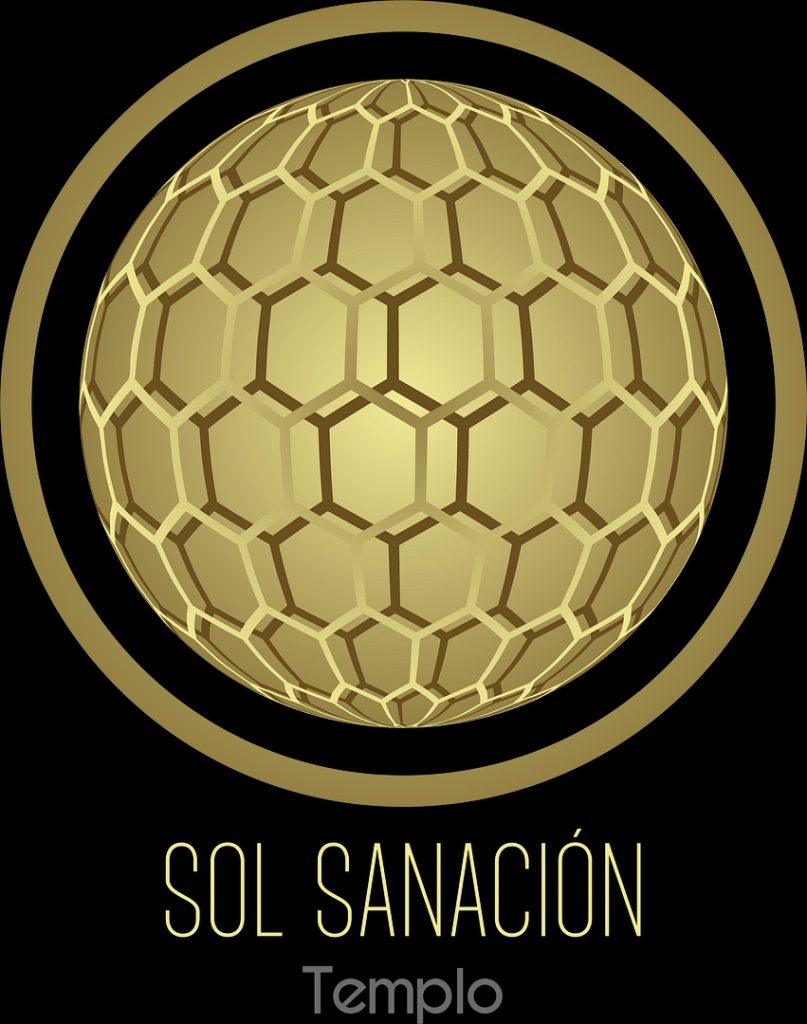 The logo of Sol Sanación represents the synchronization, meeting and order of all planets. The sun ahead of everything, generating order. And the mesh of hexagons that covers it represents the energetic molecular structure of yagé and San Pedro. (It can be verified only under the influence of the medicine.)
The logo of Sol Sanación represents the synchronization, meeting and order of all planets. The sun ahead of everything, generating order. And the mesh of hexagons that covers it represents the energetic molecular structure of yagé and San Pedro. (It can be verified only under the influence of the medicine.)
It comes to my heart in an orderly and clear way how I should do each thing, with the help of Hernando.
In the transformation process that I spoke about initially, the value is also very clear.
We have clarity of price, cost, and value.
An encounter with the sacred medicine of yagé is invaluable, because who could pay for a deeper understanding? Or a vast experience throughout the universe, discovering millions of truths?
However, we understood that humanly, we as teachers deserve a life in dignity through the exercise of our profession, and it is not frowned on by the spiritual world that we prosper with our work.
Moreover, this project aims to promulgate and preserve yagé medicine as a spiritual heritage of humanity. It is increasingly difficult to access the plant, since misuse, trafficking, and excessive cooking, plus harvesting without reforestation, are making it disappear from the jungles.
For all this infrastructure to function and be sustained over time, apart from doing things correctly, we must charge a fair value that covers all the needs of the place.
Now our view is very clear. All those difficult situations we have gone through are the thorns of the rose, indispensable to reach the petals.
There are three basic principles on which Sol Sanación is based: good birth, good living, good dying. And from these three principles opens the entire range of spiritual values and principles that every human being must give birth to in their hearts, to exercise the great gift of life on this earth.
A temple is the symbol of life itself, but that life inspired by the spirit, since the beginning of time. It is that life for which Sol Sanación has the mission of inspiring humanity.
We could not fit medicine into any human political dimension, but it is part of an organized structure in the Spiritual Kingdom. She is part of a hierarchical order, where she is the highest Queen in the world of plants. The others are no less, each one fulfills a beautiful function, but she is at the head, and this is already very transcendental.
However, it is clear that a shaman must actively participate in all aspects of life, without deviating from his purpose. The mango does not want to be a pineapple and the rose does not want to be a melon. Everything in its place, exercising its natural role. That is why we have the ability to lead a group of businessmen, executives, parents, young people, older adults, farmers, merchants, religious people, doctors, teachers, nurses, psychologists or children.
The light gathers and unites.
Darkness separates, divides, feels “different” or “special.”
Ancestral Medicine must break all those walls of ice, created by the human mind, and manage to melt them to find the essence in the eyes and heart of each person, until we can speak an intuitive language, where everything is known, everything is seen, everything is felt…
A hug
Juliet
Translated from Spanish by Hannes Schumacher
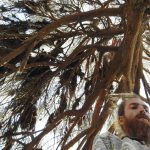
About Hannes Schumacher

About Juliet Gómez
Juliet Gómez was born in Colombia and she is the founder of Sol Sanación in Quito, Ecuador. She is a Reiki master and gem therapist with over 15 years of experience and a tireless spiritual seeker, inspired by the Sacred Medicine of Ayahuasca. In nature she encounters the purest expression of wisdom and the only means for learning essential shamanism. Based on this, she accompanies, leads and assists all processes at Sol Sanación, using simple, direct and didactic language as nature has told her.
The Mythology of Abuse
The Mythology of Abuse
Part I: Remembering and Naming the Truth
Some pieces ask to be written. Others insist. This one insisted.
The child within has insisted before, many times throughout my life. I’ve put her off. Focused on other injustices. Tended to other wounds. But she waits. My righteous inner child. The one who looks me in the eye and says, “If you don’t speak, who will?”
Yes, others speak. But not nearly enough. And not always like this.
This story is not just about me. It’s about a pattern. A mythology. One that distorts, denies, and displaces the majority of childhood sexual abuse. One that insists we only pay attention when the story is dramatic, the perpetrator a stranger, the memory vivid and linear.
But many of us live in the in-between. In the blurry memories. The subtle transgressions. The silence of trusted rooms. We oscillate between functional and dysfunctional freeze. We wonder: did it happen? Was it real? Why does it still live in my body?
We have a serious issue on our hands—one that affects far more than the category of “survivors.” One that shapes families, cultures, our collective nervous system.
For most of my life, speaking out was met with resistance. Anger. Institutional protocols. Surface-level concern for my performance, not my pain. The response was almost always: “That’s unfortunate,” followed by, “Now carry on.”
Still, my inner child insists.
This essay is for her. And for all of us. It is not a graphic account, but it is truthful. It explores how childhood sexual abuse occurs, why it persists, and what healing might require. It draws on personal memory, professional practice, and cultural critique. If you carry a story like this, read gently. Pause as needed. You are not alone.
And if you think this doesn’t apply to you, stay. Because the conditions that allow abuse affect us all.

The Violation Beneath the Surface
We like clean narratives. Monsters in vans. Clerical predators. Pedophile rings unraveled in primetime exposés. One-time events with clear beginnings and ends.
But most abuse doesn’t look like that.
It is quiet. Confusing. Repetitive. It happens in families, communities, under the gaze of people who should have known. It comes as boundary violations, emotional grooming, inappropriate touch disguised as affection. It thrives in ambiguity, where a child learns to doubt their own perception.
Sometimes, it is committed by women.
Sometimes, the violator is another child or adolescent reenacting harm done to them.
We need to tell these stories, too—not to collapse all distinctions, but to expand what harm can look like and how it hides, to pierce the veil of spectacle, break the silence of taboo, and name the epidemic we keep projecting as isolated outbreaks
Estimates suggest 1 in 4 girls and 1 in 13 boys in the U.S. experience sexual abuse before 18. The CDC reports over 40 million American adults are survivors. Experts agree this is an undercount. Disclosure is rare. Denial is common. Around 67% of victims don’t disclose in childhood. Many never do. Rates are even lower for boys, gender-nonconforming kids, and children of color. Factor in racial and economic inequities, and the underreporting isn’t just a gap—it’s a chasm.
Over 90% of victims know their abuser: parents, relatives, coaches, clergy, teachers, neighbors, or older children. Clergy abuse, while less common overall, accounts for a significant portion of institutional harm. Stranger danger and pedophile rings exist, but are rare. Wartime sexual violence is also real, but statistically represents a smaller share of global childhood sexual abuse.
Yet these more visible forms dominate the narrative—and that distortion undermines prevention. When we focus on spectacle, we miss what’s ordinary. Survivors go unseen. Silence grows from unsafety fed by fear, shame and discomfort, then amplified by proximity, and protected by status. Ironically, these are the very conditions that make abuse possible in the first place.
And the harm doesn’t stop in childhood. Survivors of early sexual trauma are at far greater risk for autoimmune disease, chronic pain, addiction, depression—even cancer.
The numbers are undercounted, but still overwhelming. What we lack isn’t data. It’s the cultural will to face it.
Cultural silence around children’s sexual development—combined with adult discomfort, religious shame, and refusal to acknowledge children as sovereign, intuitive beings—leaves a dangerous vacuum. In that vacuum, violations occur not just through what’s done, but through what’s withheld:
- Sexualization without guidance
- Disregard for bodily autonomy
- Denial of agency and awareness
These are not neutral omissions. They are betrayals. And they lay the groundwork for deeper harm—making it harder to recognize abuse when it happens, and even harder to speak it.
The abuse itself was one thing. The invalidation afterward was another. The silence from those who suspected. The denial from those who knew. The systems that responded with cold procedures instead of presence. That was harder to metabolize.
And yet…
Even when we’re not believed, something in us knows. The body knows. Healing often begins not with language, but with the felt recognition that what happened mattered.
I’ve seen this in myself. In clients. In community.
The pain is often not in the violation alone, but in the years of disconnection that follow. The belief that we are alone. That our needs are too much. That what we felt wasn’t real.
Every inner child I’ve worked with—healing from sexual abuse—has first needed the same things: a safe hug. To be seen. Heard. Believed. Protected.
When those needs go unmet, the nervous system adapts. Dissociation becomes survival. Spiritual bypass becomes identity. It’s easier to live in the clouds when your body feels like a prison.
But once safety is re-established (through presence, patience, and attunement), something begins to shift. Survivors often express their experience in layers, as the story evolves in how it remains held in the body. The body softens. Awareness grows. Over time, the nervous system begins to repair.
No client has ever shared their truth, processed it, and been done. This kind of wound doesn’t disappear—it scars. That’s true for individuals and culture. And as someone who carries a few scars, I can tell you: they don’t vanish. But with care, time, and community, they do fade.
When we begin to rest, eat, move, and express—something shifts.
We remember.
And with that remembrance, we slowly return to ourselves.

Part II: Cultural Mythologies and Systemic Betrayal
The stories we allow shape what we believe is possible—and what we deny.
Abuse is not rare. It is systemic. Cultural. Hidden in plain sight.
Myths center on individual pathology: the dangerous stranger, the rare tragedy. These headline stories are not the whole truth. Most violations occur in homes, schools, churches—systems that claim to care.
We fixate on elite villains because it’s easier than confronting ordinary people failing to protect their own.
I experienced this in graduate school. I attempted to embody and integrate the very frameworks we were studying—bringing my personal abuse story into a “coming out” paper that examined the codification of sexual trauma through the lens of performance theory. The response was not discernment, but judgment. My trauma was not engaged as material worthy of theoretical consideration. Instead, the critique focused on my failure to “perform” intellectual rigor.
Adding insult, the same professor who dismissed my effort enthusiastically supported another student’s decision to strip for the summer as research. Performative inquiry was celebrated. Vulnerable storytelling, even when academically rigorous, was met with grading rubrics and silence.
I now understand that for some, lived experience is only acceptable when properly distanced, abstracted, or packaged as spectacle. Institutions that market themselves as radical often cannot tolerate the intimacy of their own analysis when it is lived rather than performed.
This is not about one professor. It’s about our cultural inability to hold truth when it becomes intimate.
We live in a society where the body is either commodified or controlled. Christian doctrine and capitalism have left us ill-equipped to raise safe, sovereign children. Conservatives cloak repression in morality. Liberals outsource care to policy and data.
Children aren’t safe in a culture that sees them as pathology, purity, or projection. They’re safe when we honor their autonomy, meet their development with attuned presence, and confront our own histories.
Silence is not safety. Denial is not dignity. Institutions built on spectacle will fail to hold the unspeakable—unless we demand more.
Abuse is not an aberration. It’s a mirror of our power structures. Healing requires more than policy. It demands cultural reckoning and communal care.
We are not just protecting children. We’re unlearning what made us unsafe.
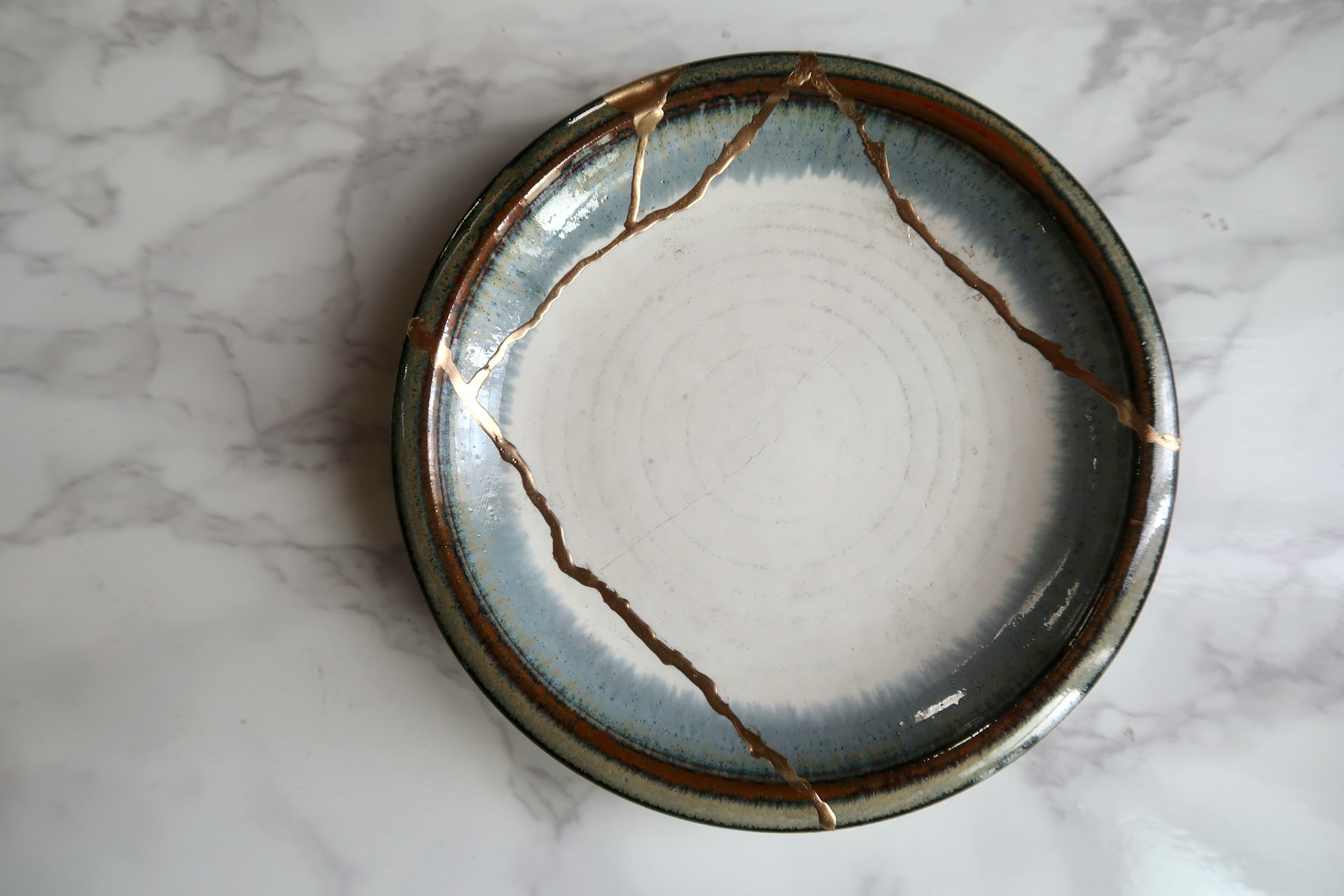
Part III: Healing and Integration
Healing from childhood sexual abuse is not linear. It doesn’t unfold through logic or will alone. It unfolds in the body—but not in isolation.
We are individual beings, but also part of a communal body. The boundary between the two is an illusion—measurable only by presence, resonance, and relationship.
To truly heal, we return to ourselves and to each other.
And the body remembers.
Most survivors I’ve worked with, including myself, have needed one thing first: to be believed. Before insight. Before forgiveness. Before reframing.
Because abuse is dissociative, we lose soundness in our own experience. We need a felt sense of being seen, heard, and held.
This is the foundation. Without it, healing becomes performance.
What I needed wasn’t correction or analysis. I needed someone to say:
“That was abuse. It was not okay. It wasn’t your fault. And it hurt you.”
“You are loved.
You are safe now.
We’ll keep listening.
As often as you need.
In all the ways you need.”
Sometimes, that someone was my husband. Sometimes, a skilled guide. Sometimes, a part of me finally strong enough to speak.
My own healing has arrived in waves: naming the harm in trusted spaces, recognizing how trauma reshaped my body and beliefs, and learning that the denial of what happened was often more damaging than the acts themselves. The invalidation, the silence, was the echo that stayed.
Somatic self-inquiry changed everything—especially Mary Shutan’s Body Deva Method. It taught me that healing begins not with mental insight, but with space for the body to speak. What I thought was self-blame turned out to be sorrow. What I called numbness was protection. The body doesn’t lie—but it speaks in layers.
To help clients access this work, I first introduced Deb Dana’s Polyvagal practices. What I found was that Polyvagal Theory didn’t just support the Body Deva process—it validated it. It gave language to what we were already experiencing: healing is not cognitive or isolated. It is physical. It is relational. We heal through the body, in the presence of others.
The third pillar, Marshall Rosenberg’s Nonviolent Communication, offers a way to speak truth without retraumatizing. Survivors are often deeply attuned to harm—their own and others’. We need language that honors both autonomy and connection. When rooted in body awareness and relational safety, NVC becomes more than a script. It becomes authentic, attuned, alive.
This is what HETA—the Harmonized Embodied Transformation Approach—is designed to do. It’s a living system of practice that honors humane embodied trauma alchemy: a slow transmutation, where unspoken truth, when met with presence, becomes clarity and connection. HETA is not a theory. Not a set of coping strategies. Not a mode of control. It is a way of being—one that helps us reclaim the parts of ourselves that went dormant. To remember that safety is possible again. And to return to the body’s most natural path to repair: play.
Because without play, healing becomes vigilance. Joy feels dangerous. But play is the nervous system’s language of trust.
And through play, we remember:
Connection, when safe, is sacred.
And so we rebuild. Not by erasing the past, but by holding it differently.
You don’t have to remember everything.
You don’t have to fix anything right now.
You begin by listening to your body, one breath at a time.
And in doing so, you begin to return.
To yourself.
To a world that is slowly learning how to hold what it once refused to see.
This is the truth we must honor now—not one of myth or silence, but of restoration.
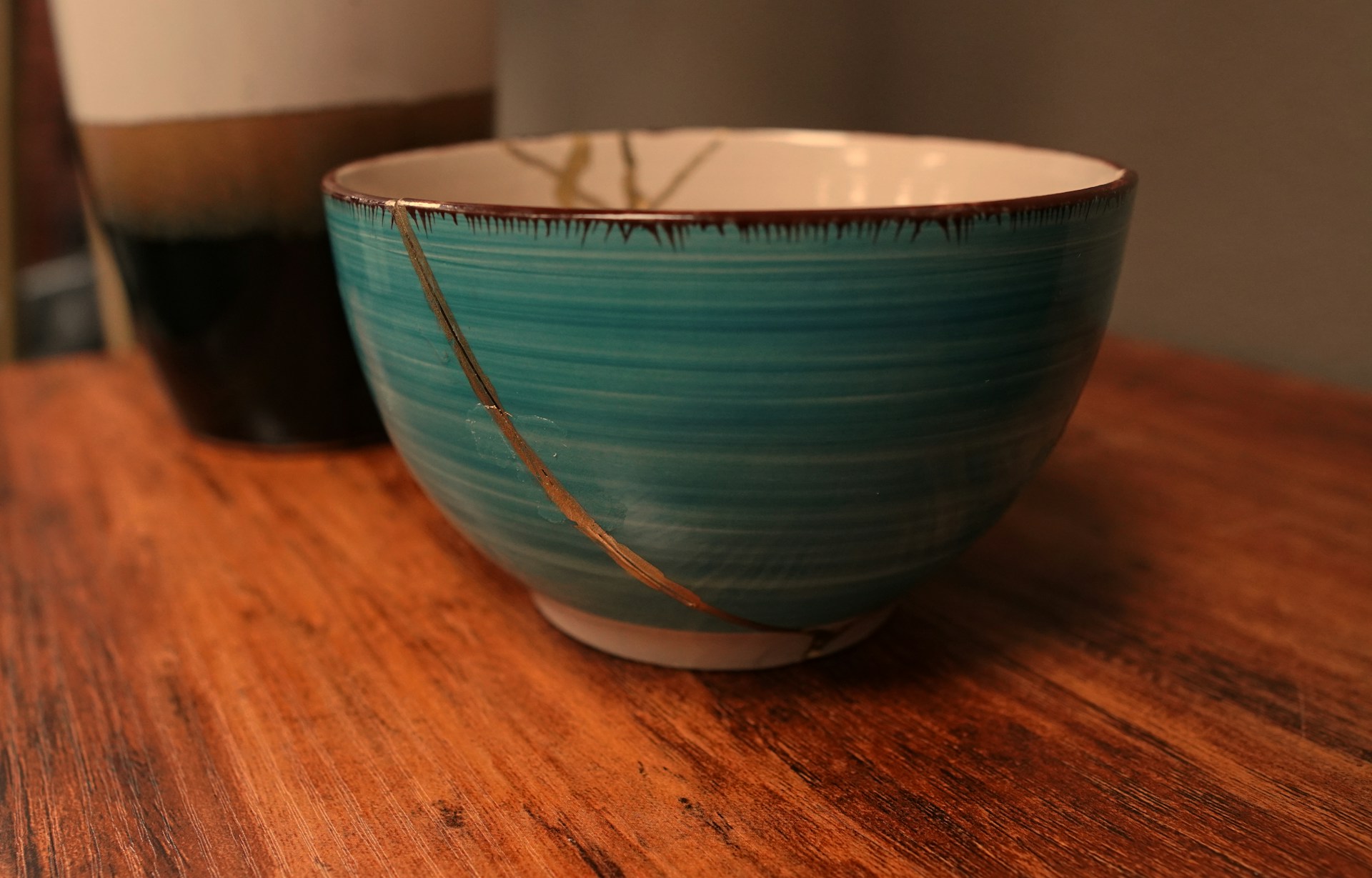
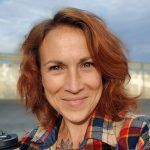
About Abigail Testaberg
As co-founder of MagiCo, Abigail builds on the belief that science is magic explained. Her work integrates Polyvagal awareness, Body Deva somatic inquiry, and Nonviolent Communication—alongside digestive health and sacred medicine guideship when appropriate—to support healing, self-discovery, and embodied empowerment through principles of non-control. She guides individuals, families, and communities through frameworks like HETA and HOLISTIC180, offered not as protocols but as invitations to remember the body, repair connection, and orient toward what is life-giving. Her clients include parents of neurodivergent children, survivors of systemic harm, and those navigating collapse or emergence. Abigail lives off-grid in Mexico with her partner and children, where she tends land, stories, and the practice of becoming more human—together. She witnesses, writes, and guides with a commitment to honesty, nuance, and non-performative care.
Passing Time
Passing Time
featured image | Annette
The silent dark is broken by the padding of feet, drawing me slowly out of the depths of dreaming. The bedroom door opens a fraction, letting in a thin rectangle of light, then closes, drawing out the light once again. Something else has slipped in with the light. I strain my ears, listening for clues, but there’s only a sixth sense of another presence. Then comes a sigh, softer than the gentlest breeze, and a small sleepy body slips in beside me. Inside the covers, a cold foot presses on my belly.
On winter mornings the darkness lingers. I expect my children to wake with the light, later each morning, until the solstice, but that isn’t what happens. Instead they wake early, 6am, 5am, sometimes even 4am, and shuffle around the house in the cold, waiting for the sun, expecting breakfast and stories and warm fires from me. Every winter I tell them they mustn’t wake so early. Tell them it isn’t fair. Tell them I won’t. But I always do.
They try. For minutes at a time they hold back their restless energy and lie in bed, searching their senses for morning clues. They listen for the stillness before dawn, the distant rush of cars, birds stirring, a change in the feel of things. . . They listen until the exquisite pain of anticipation propels them out of bed and into the new day.

This morning though, I am given a reprieve. My son’s breath is steady, his mouth open, sleep has claimed him once again. It’s still dark and will be for hours yet. But I’m awake now and restless. I need the toilet. My arm is going numb where his head lies, cutting off my circulation. For a moment I wonder about that, how much heavier we become in sleep. How much there is inside our heads. How much we don’t use. I think about weight too, how there are different kinds of weight. The sort we measure on a scale, and the other sort. The heaviness that some people carry around them – their shadows filled with the past. I’m restless, but I’m putting off the inevitable. Whoever heard of waking a sleeping child? My oldest daughter cries out and I tense, but it’s quiet again. A passing fear.
There’s nothing heavy about my children, no shadows weighing them down, and I wish I could always keep it this way. I wish I could ward off the troubles of life, but we all have our own journeys to make. As Kahlil Gibran wrote so beautifully in The Prophet, ‘Your children are not your children. They are the sons and daughters of life’s longing for itself. . . You are the bows from which your children as living arrows are sent forth…’
 I am the bow, but not the archer. I’m not the maker of a destiny but the enabler. And what a responsibility that is. To be stable and strong for them. To give my children gladness, to teach them empathy and compassion and confidence. To show them how to find their way into the flow of life. To help them become truly human.
I am the bow, but not the archer. I’m not the maker of a destiny but the enabler. And what a responsibility that is. To be stable and strong for them. To give my children gladness, to teach them empathy and compassion and confidence. To show them how to find their way into the flow of life. To help them become truly human.
Or is it my children who are teaching me what I need to know? In so many ways they’re already wiser than me. I tell time by my children, counting the moments I still have. They tell time by embracing life. Days, months, years, slip through my fingers, while they fill each moment with themselves. I reach back into the past, strain forward into the future. They live in the now. Naturally. Easily. The way all wisdom traditions tell us we should.
I’m lying here awake, feeling the weight of my own shadows, my mind flitting from one thought to the next. I plan dinner, write a shopping list in my head, worry about the bills, panic about outfits for the school fancy dress ball, nudge my husband until he stops snoring and feel guilty because I’m not up already, using this rare solitary time for something more useful. But what sweet comfort, to be sandwiched gently between my husband and my son on this cold morning, feeling my son’s breath warm upon my cheek. How could I possibly regret anything so precious?
It’s no good though, my arm is hurting and I have to move it. I try to do this gently, hoping I can slip it out from under my son’s head without disturbing him. But he wakes and smiles at me, a face so clear I can see it in the almost dark.
‘Best mum,’ he says.
Then.
‘Mummy, let’s talk about mysteries.’
He’s sitting up, eyes bright, mind spinning with possibilities and I’m amazed at how smooth his transition is between sleeping and waking. I’m slow, dragging myself out of unconsciousness, grasping uselessly at my dreams which slip effortlessly away, tantalisingly out of reach. My brain stays fuddled, but he’s bright. He’s here. Now. And I want him to always be like that.
‘Mysteries?’
‘You know. . . Infinite space, imaginary numbers . . . What’s underneath a whirlpool? Inside a blackhole?
I think about blackholes. How scary they sound, the way they absorb energy, their appetite insatiable. Humanity is like that, sucking up the earth’s energy. There are individuals too, who deplete others of their life energy, sucking, sucking, trying to fill the empty space inside themselves. The more they suck the hungrier they are, that’s the irony of it. But for every vampire there is someone who radiates positive energy. Someone to whom others gravitate.
‘Mum,’ says my son, nudging me.
‘Most galaxies,’ I tell him, ‘have a supermassive black hole in their centre, a bit like a giant plug hole. Some of them are as big as billions of suns put together.’
His eyes are wide with wonder.
‘Is that as big as infinity?’ he asks.
‘No, infinity is bigger than anything.’
‘Like families,’ he says.
‘Families?’ I ask, puzzled, then wait while he thinks, loving the little furrow on his forehead and the faraway look in his eyes.
‘The way they go on forever, both ways. . . grandma and great grandma and us.’ He takes a breath. ‘And then we’ll have kids. . . and so will they. . .’
Slowly it’s dawning on me, the beautiful thing that my son has achieved. He’s connected space and time with infinity.
‘Yes!’ I say. ‘Yes, that’s exactly it.’
I clamour about in my memory for more wonders to feed my insatiable son.
‘As the stars and planets get closer to a blackhole they speed up, faster and faster, and time speeds up too, until a year is only twenty or thirty days. Imagine that, you’d have a birthday every few weeks.’
He laughs out loud at this but I can see his mind at work, calculating the present potential.
‘And there’s a theory that these supermassive black holes shoot out jets of matter, sometimes millions of light years long.’
‘Why?’ he asks.
‘I don’t know. Perhaps they throw up the bits they don’t want. Or maybe they recycle all the old negative energy and spit out fresh clean matter. Isn’t that a lovely thought.’
My son is quiet, he’s storing it, a special sweet to savour. He’ll want more, but I’ve reached the limits of my black hole knowledge and my daughters are waking. The stillness is being taken over by activity: lights flicking on and off, the toilet flushing, someone blowing their nose. It’s time to get up. Reluctantly I leave the warmth of my bed for the shock of a cold toilet seat. Then fumble about in the dark looking for slippers, woolly socks and a jacket. The chores are about to begin: breakfast, packed lunches, teeth, faces, clean undies, shoe laces. . . But first there’s the frosty trip outside for wood, the grass frozen solid, crunching under my feet, as I breathe steamy dragon breaths and ignore my shivering for long enough to stand staring up at the Milky Way, wondering at the universe once again after all these years of forgetting. . .
Another gift from my children.
All day
I hold them close.
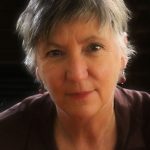
About Rosie Dub
Dr Rosie Dub is a novelist (Gathering Storm and Flight), mentor, teacher, developmental editor and facilitator of Centre for Story (www.centreforstory.com), a platform for reimagining the world through story. Rosie has taught creative writing for many years in both the UK and Australia. She currently teaches on the MA in Writing program at Swinburne University in Melbourne. Rosie’s PhD research explored how purpose of story as a developmental tool. She shares her ongoing research in her Alchemy of Story workshop series and her twice monthly Alchemy of Story substack newsletter which explores how story forms us, how it frees us and how we can create our own transformational stories that help to reimagine our world. Rosie lives in Hobart, Tasmania.
The Fractured Fractal | Meaning Making in the Psychedelic Multiverse
The Fractured Fractal | Meaning Making in the Psychedelic Multiverse
This expansive essay explores the multiverse as both scientific theory and cultural metaphor, weaving together threads from quantum mechanics, psychedelic neuroscience, religious cosmology, and pop culture. Pick argues that the multiverse—a model of infinite, interconnected realities—mirrors the fragmented yet richly pluralistic nature of modern consciousness in the age of digital hyperconnectivity.
featured image | Daniele Levis Pelusi
Perhaps best known as a mind-bending premise within the big comic book film franchises, the multiverse is central to scores of storylines on- and off-screen, including Meow Wolf’s immersive arts funhouses across the southwest. The multiverse is, well, everywhere. Over the past few decades, the idea has evolved from a heady fictional concept to a valid cosmology supported by a number of scientific theories, including the many-worlds interpretation of quantum mechanics. In other words, the conceit that cleverly links many popular narratives may also describe the actual fabric of reality, presenting a dazzling vision of worlds without end that is at once exhilarating and bewildering. Somewhere in between, the multiverse serves as a versatile metaphor for our intensely hyperconnected, digitized lives, and also shares a certain curious resonance with what leading research reveals about the efficacy of visionary and altered states to increase neural plasticity and catalyze adaptive change. Whether or not it describes something real about the nature of the cosmos, the multiverse idea expresses something compelling about the human mind’s ability to expand beyond ordinary confines, forming new connections and exploring creative alternatives to previously intractable problems—all undoubtedly useful capacities for navigating our turbulent, “post-truth” times.
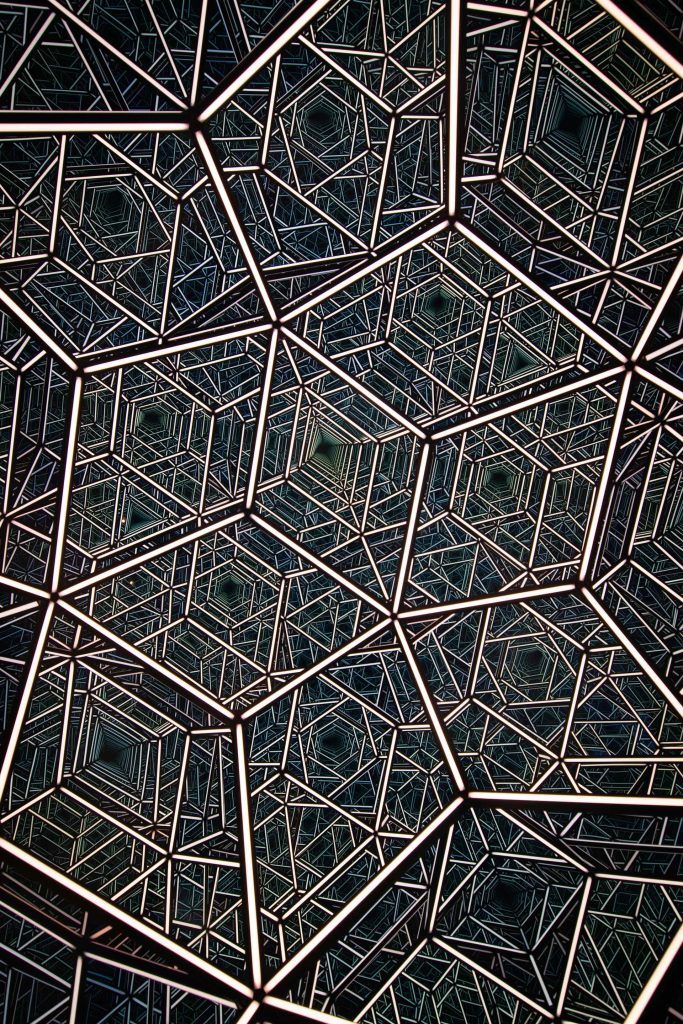
By multiverse I mean the concept of numerous, interconnected universes comprising something approaching the complete set of all possible worlds. This is distinct from the trusted sci-fi and fantasy trope of finite parallel dimensions or alternate realities, such as the Upside Down of Stranger Things, the literalized afterlife world of The Good Place, or the virtual-reality metaverse of Ready Player One. By contrast, the multiverse encompasses a dizzying array of branching universes that together form a vast intersecting web. In some versions, notably theories of the quantum multiverse, a new universe is brought into existence with every diversion in events, or with every quantum measurement, resulting in a fractal propagation of uncountable alternatives made manifest. The multiverse is therefore truly multi, an infinitude of possible realities, a garden of endlessly forking paths.
This Borges reference isn’t incidental—in several short fictions, including “The Library of Babel” and “The Garden of Forking Paths,” the acclaimed author describes infinite universes where “time forks, perpetually, into countless futures,” a vision that not only bears striking resemblance to the multiverse, but predates theoretical formulations of the idea by more than a decade. The history is interesting, because rather than originating as a serious scientific concept later filched for popular storytelling purposes, it’s kind of the other way around. It wasn’t until the 1990s that the word multiverse became associated with the various multiple-universe hypotheses that emerged as a more serious subject of scientific inquiry following discoveries of the accelerating expansion of the visible universe. At any rate, the fictional and scientific notions of the multiverse eventually converged, as multiverses sometimes do, to form the multivalent concept in popular use today as both mind-bending premise and useful metaphor, from the irreverent excesses of Rick & Morty to the heady maximalism of Everything Everywhere All At Once.
***
“Who are you,” the Ancient One inquires as Dr. Strange careens through a cosmic phantasmagoria of cascading dimensions, “in this vast multiverse?” The question comes about thirty minutes into 2016’s Doctor Strange, the first movie to introduce the multiverse idea to the Marvel Cinematic Universe, and there’s no mistaking what’s happening—though energetically rather than pharmacologically altered, dude is tripping. That’s the thing about depictions of infinite worlds: from scientific cosmologies to satirical sitcoms, visions of the multiverse are routinely and almost universally described as “psychedelic.” This might just seem like a superficial convention for conjuring up colorful wacky multiplicity, but it actually reveals a much deeper intuition about the multiverse as a metaphor for uniquely mutable human imagination and experience.
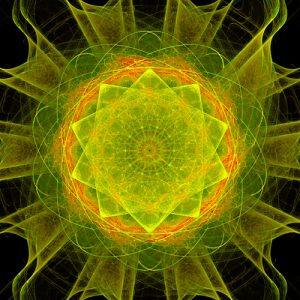 Psychedelic here typically refers to depictions of swirling, kaleidoscopic imagery comprising vivid polychromatic and geometric configurations that may initially appear chaotic but gradually deepen to reveal the formation of a larger, complexly-ordered whole encompassing all constituent parts in a harmonious patterning that is often suggestively self-similar at any scale, and therefore endless, as in a fractal, mosaic, or mandala matrix. When animated, such imagery is frequently rendered with a pulsing periodicity, as if it were alive, and shown to reveal or maintain its deep patterning across warping surrealistic transpositions of both time and space. In addition to sharing these qualities, Dr. Strange’s trip is illustrative because his journey across vast regions of telescoping spacetime isn’t simply a cosmic carnival ride, but a radical reorientation to the nature of reality and his own existence, whereby his supposed individuality is subsumed within the interconnected totality of the multiverse. Several times fragmented and reassembled, Strange tumbles through the black hole of his own pupil and appears reflected within the crystalline panes of jeweled galactic apertures as the Ancient One explains that “at the root of existence, mind and matter meet [and] thoughts shape reality,” giving rise to worlds without end.
Psychedelic here typically refers to depictions of swirling, kaleidoscopic imagery comprising vivid polychromatic and geometric configurations that may initially appear chaotic but gradually deepen to reveal the formation of a larger, complexly-ordered whole encompassing all constituent parts in a harmonious patterning that is often suggestively self-similar at any scale, and therefore endless, as in a fractal, mosaic, or mandala matrix. When animated, such imagery is frequently rendered with a pulsing periodicity, as if it were alive, and shown to reveal or maintain its deep patterning across warping surrealistic transpositions of both time and space. In addition to sharing these qualities, Dr. Strange’s trip is illustrative because his journey across vast regions of telescoping spacetime isn’t simply a cosmic carnival ride, but a radical reorientation to the nature of reality and his own existence, whereby his supposed individuality is subsumed within the interconnected totality of the multiverse. Several times fragmented and reassembled, Strange tumbles through the black hole of his own pupil and appears reflected within the crystalline panes of jeweled galactic apertures as the Ancient One explains that “at the root of existence, mind and matter meet [and] thoughts shape reality,” giving rise to worlds without end.
Such descriptions, then, actually are psychedelic, in that they recognizably correspond to both the visual and phenomenological contents of experiential reports with psychedelic substances and related meditative, mystical and non-ordinary states, as well as with the work of renowned psychedelic artists like Alex Grey and Pablo Amaringo. As with Doctor Strange, depictions of psychedelic experiences frequently feature human subjects fluidly interpenetrating, dissolving into, or otherwise merging with higher-ordered visionary realms that appear to overflow with multidimensional significance. While controversial, innovations in generative AI are further amplifying possibilities for hallucinogenic imagery, including the mutating fantasias of several recent psych rock music videos, which immerse the viewer in mind-bending excursions that can perhaps only be described as psychedelic. This isn’t to say that all trips are created equal, nor that they are even primarily visual or visionary. Heavenly or hellish, the subjective perceptual alterations occasioned by psychedelic experiences are astonishingly variable and unpredictable, such that one of the most conspicuous shared features of these depictions is multiplicity itself.
***
However nuanced the quantum multiverse and its related scientific theories may be, the basic idea is actually very, very old. Infinite worlds cosmologies of varying complexity can be found in the multiform dharmic traditions of the Indian subcontinent, including Hinduism and Buddhism, as well as the Atomist and Stoic philosophies of ancient Greece. Much like the assertions of modern physics, these cosmologies all emphasize a distinction between the fundamental components of reality and its perceived appearance. Perhaps the most elaborated pre-modern conception of the multiverse is that of the Avataṃsaka Sūtra, one of the principal works of East Asian Buddhism. A massive multi-volume compilation that is itself fractal in nature, the ‘Flower Ornament Scripture’ describes a vast “infinity of infinities” in which the pores of every enlightening being’s body contain “untold multitudes of buddha-lands filled with buddhas,” who likewise themselves contain a molecular multitude of worlds encompassing “courses of eons, as many eons as atoms in the untold buddha-lands in the succession of worlds.” Extending endlessly in both space and time, throughout the ten directions, it’s buddhas all the way down.
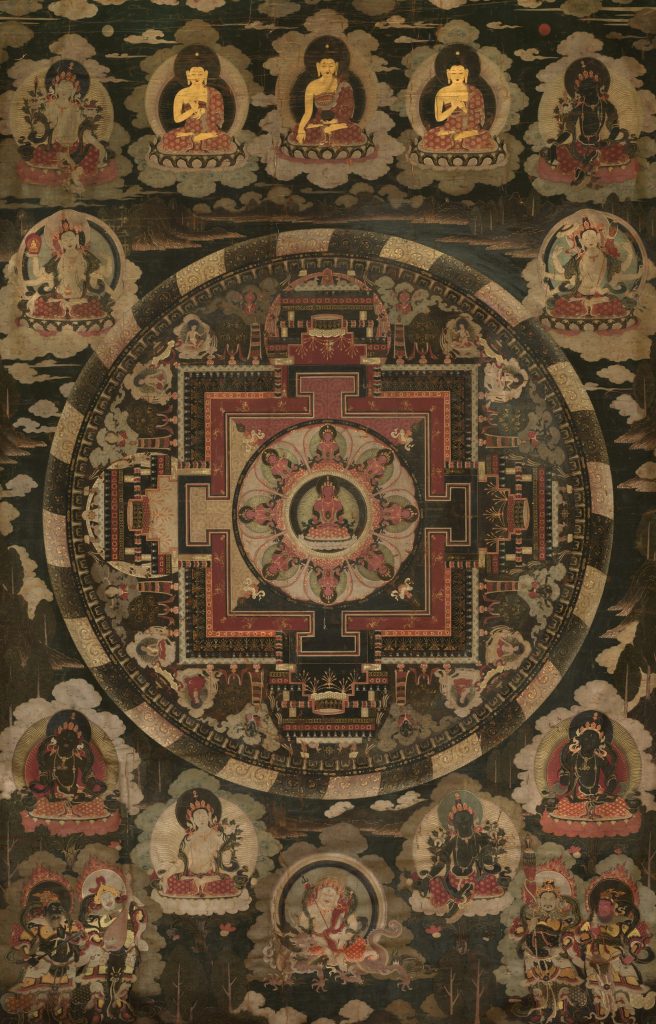
All infinite worlds cosmologies share something of this profound visionary potential, which can stretch our stargazing wonderment to the very limits, shrinking our narrow self-concern and enlarging our sense of possibility until it approaches the infinite. In their kaleidoscopic intricacy, the Avataṃsaka Sūtra’s inspired contemplations ultimately present the multiverse as a concept to carry us beyond conceptual thinking—as a gateway, a wormhole, a finger pointing. For most of us I suspect that the multiverse models of modern physics are similarly evocative, their branes, strings and manifolds taken less as intelligible descriptions of reality, and regarded instead with a kind of secularized awe that inclines toward the sublime. Physicist Brian Greene, who adheres closely to the theoretical science when describing nine types of multiverse in his popular 2011 book The Hidden Reality, affirms that such concepts require us “to abandon comfortable modes of thought and embrace unanticipated realms of reality.” However well we grasp the mathematical or explanatory validity of these theories, they nonetheless convey something appreciable, and essential, about the potentials and limits of human knowledge and perception.
In this way the multiverse idea can also be understood as a metaphor for things we know we can’t fully know, including all the ways that complex systems tend to be deeply interconnected, richly pluralistic, and subject to a variety of causes, conditions and possible outcomes. The presence of infinite possibilities is perhaps the most obvious reason why multiverse narratives are so ubiquitous: they invite our “what if?” speculations along not just one forking path, as is the case with alternate timeline classics like It’s a Wonderful Life and Sliding Doors, but across a tantalizing array of concurrent realities. By finding expression for every potential, multiverse narratives simultaneously indulge and assuage our doubts and fears in the midst of a rapidly-changing, politically-fractious, pandemic-destabilized world. The multiverse is itself an “infinity of infinities,” after all, and therefore provides an apt metaphor for the pervasive tangle of interdependent systems that shape our everyday experience yet elude our full comprehension.
This is perhaps nowhere more immediate than on the internet, where our direct experience is one of endless worlds within worlds, hyperlinked and fractal-dense, the next dimension only a click away. Scrolling even briefly through social media, we encounter a dizzying variety of viewpoints, every post a portal or attention-warping wormhole, a multiversal hall of mirrors. We take this kind of scattershot interdimensional travel for granted, yet research finds that mental health disorders, identity diffusion, and suicidality are all steadily increasing, particularly among young people, in what neuroscientist Adam Gazzaley describes as a growing global cognition crisis resulting at least in part from the fact that “our brains simply have not kept pace with the rapid changes in our environment—specifically the introduction and ubiquity of information technology.” The dopamine casino quality of the internet stimulates a fracturing of cognition that leads to measurable deficits in everything from attention and memory to creative thinking and empathic concern. In other words, these technologies tend to heighten our experience of reality as a disorienting expanse of possibilities that approaches both the infinite and the unknowable—a reality that our nervous systems increasingly struggle to make sense of.
***
In describing our hyperlinked world this way, I’ve also more or less outlined our current sociopolitical landscape. This is no accident—the internet-driven fracturing of cognition has profoundly destabilized both individual and collective meaning making processes. Speaking presciently in 1998, Terence McKenna described it like this:
“Technology, or the historical momentum of things, is creating such a bewildering social milieu that the monkey mind cannot find a simple story, a simple creation myth or redemption myth, to lay over the crazy contradictory patchwork of profane techno-consumerist, post-McLuhanist, electronic, pre-apocalyptic existence. And so into that dimension of anxiety, created by this inability to parse reality, rushes a bewildering variety of squirrelly notions.”
By “squirrely notions” he of course means conspiracies, cult beliefs and crackpot theories of all kinds, which McKenna also calls “epistemological cartoons.” Robert Anton Wilson more broadly refers to all worldviews as the belief systems or “reality tunnels” that enable each of us to organize and make sense of our world. The idea that we inhabit our own self-created universes isn’t new, but neuroscience now provides insight into the ways that our ordinary perception is a kind of “controlled hallucination,” a necessarily simplistic and incomplete map of reality based largely on perceptual predictions. Aldous Huxley famously describes ordinary consciousness as a “reducing valve” by which our brains selectively filter information and sense data to help ensure survival. In mistaking our mental models for reality, our limited worldviews become the totality of our individual and shared worlds, such that “from family to nation, every human group is a society of island universes.”
For all its connective magic, the internet exacerbates the fact that we functionally inhabit island universes. What this often feels like in real time is a continual inundation by myriad alternate realities and conflicting value systems that challenge any stable sense of what’s really real. Amidst this flood of possibilities, dogmatic worldviews tend to become very seductive—especially those centered around solidified personal identity—until we find ourselves beset at every turn by embattled positions and entrenched views. This phenomenon isn’t restricted to any one side of the political spectrum, and the surreal overlap in shared reasoning styles has become more apparent than ever, as Julian Walker insightfully outlines in analyzing the many strange congruities between the alt-right and New Age. Amplified by technology, this constant information overload has radically undermined cultural meaning making processes, replacing shared maps of reality with a paradoxical climate of acute paranoia, tyrannical certitude and outright magical thinking. Squirrely notions abound.
The result of all this destabilization is our current cultural pressure cooker, in which political division is no longer even superficially limited to issues of governance or red/blue affiliation, but is characterized instead by what Peter Limberg and Conor Barnes call memetic tribes, a type of ideological affinity group that “directly or indirectly seeks to impose its distinct map of reality—along with its moral imperatives—on others.” The social fabric is no longer made up of parallel island universes, but is instead largely defined by warring worlds vying to control the narrative and decide what our core social facts will be. These circumstances aren’t merely a reaction to increasing complexity, but have often been deliberately engineered, utilizing technologies and political tactics that take advantage of multiversal multiplicity to further destabilize reality for monetary or political gain.
The upside here (there is an upside, right?) is that our core social facts are no longer solely determined by a hegemonic consensus reality structured around capitalism, racism, patriarchy, colonialism, militarism and the rest. Those particular reality tunnels are still with us, and they’re still vying for ascendency as aggressively as ever, but they no longer hold the same monolithic sway. Engaged in an information exchange of unprecedented richness and diversity, a growing plurality of voices is offering innovative alternatives for social organization and cohesion. The abundance of multiversal possibility is profoundly double-edged, however, at once liberating (“It could be different”) and overwhelming (“It could be anything”). What we believe matters, and at a time when numerous planetary crises dispel any illusion of our separateness and challenge us with novel opportunities for unity and cooperation, we’re confronted instead with a vehement and divisive backlash that threatens to undermine democratic process itself.
This is often the immediate reaction to difficult realities, when destabilization leads to entrenchment and proliferating choice leads to inertia rather than action. Life in the multiverse can be a bit of a shitshow, in other words, as is expertly dramatized by many popular narratives. The directors of Everything Everywhere All At Once, for instance, overtly embrace the multiverse in search of storytelling “that can hold it all together” amidst a global meaning-making crisis in which cultural narratives no longer unify us. Making sense of reality in a “post-truth” world can be a formidable task, after all. So what can tales from the psychedelic multiverse teach us about navigating the garden of forking paths?
***
As clinical research over the past decade has helped bring psychedelics into the mainstream, demonstrating tremendous potential for their use as therapeutic medicines, it’s notable that a certain straightforward presentation of positive benefits is becoming something of a litany, as in this typical example from Newsweek: “people who take these substances have reported powerful mystical experiences that are often characterized by a sense of unity or oneness, a profoundly positive mood, a sense of ineffability, and transcendence of time and space.” While unity can be a significant feature of psychedelic experience, mainstream media descriptions commonly favor oneness and bliss over variability and multiplicity. Doing so can omit compelling insights about the brain and consciousness that have emerged from recent psychedelic research.
Robin Carhart-Harris’ entropic brain theory, for instance, posits that the default mode network, which normally regulates the brain’s ordered functioning and maintains an active sense of self, is temporarily disinhibited by psychedelic substances. The resulting increase in brain entropy and neural plasticity allows for higher information exchange, creative linkage and depth of experience, such that “the brain operates with greater flexibility and interconnectedness.” Carhart-Harris and renowned neuroscientist Karl Friston have expanded the entropic theory into what they call the REBUS/anarchic brain model, which proposes that in so doing, psychedelics can decrease hierarchical brain functioning and significantly relax the pathologic beliefs and assumptions that underlie mental suffering.
In Carhart-Harris’ work, entropy is synonymous with uncertainty, which our brains normally suppress when employing the heavily filtered, predictive processing that creates and maintains our island universes. By increasing the entropy of spontaneous brain activity, psychedelics can engender a more expansive conscious experience, relaxing the constraining influence of the entrenched, habitual views that shape many of the brain’s predictions. That this is possible does not mean that it’s inevitable, however, nor that it’s always pleasant—like early pioneers in the field, contemporary researchers continue to affirm the importance of set and setting, proper integration, and the value of ceremonial and therapeutic contexts for psychedelic use. “Psychedelic” is a neologism that means “mind-manifesting,” after all, and what’s being manifested appears to be the brain/mind’s potential to “spontaneously transition between states with greater freedom—and in a less predictable way,” such that access to the mind’s contents and capacities is radically enhanced. We might even say that the mind becomes more multiversal, more capable of engaging our dynamic and disorienting world with assurance rather than apprehension.
This may seem counterintuitive, given that multiversal complexity has just been suggested as a potential culprit in our ongoing meaning making crisis. But while perhaps more prevalent than ever before, complexity has always been with us. The issue isn’t necessarily the deluge of information itself, but our limited ability to make sense of an apparently chaotic expanse of seemingly contradictory or unresolvable potentialities, especially when exacerbated by the internet-intensified vortex that now shapes reality.
Our brains attempt to solve this problem by adopting simplistic stories or reality tunnels, in large part because the default mode network prioritizes the mental construct of a separate, individual self, which then serves as the central reference point for all conscious experience. Filtered this way, our picture of reality is, well, essentially a selfie, hyperfocused on organizing the limited set of past experiences, present beliefs and future expectations that defines our self-identity. This ordering principle has powerful adaptive advantages, but exerts excessive control on the brain, constraining perception and cognition. By catalyzing high-entropy mental states, however, psychedelics can heighten the brain/mind’s integrative and connective capacities to more readily accommodate multiplicity and uncertainty. As Michael Pollan explains, “the increase in entropy allows a thousand mental states to bloom, many of them bizarre and senseless, but some number of them revelatory, imaginative, and, at least potentially, transformative.”
In practical terms we might imagine something like a recent encounter I had walking down Denver’s East Colfax Avenue late one night, where I passed a barefoot young man splayed in a vacant doorway, underdressed for the season, the orange lighter and charred glass stem on the cracked sidewalk before him his only evident possessions, his nowhere stare not really seeing me, his mumbled request for change perfunctory, almost an afterthought. It’s one among many similar encounters in the space of a quarter hour, and on an ordinary night I might simply filter him out as “homeless” or “addict” or “mentally ill” without ever really seeing him, either. Just like that, we other—whether willfully or habitually, we all too easily ignore, dismiss, overlook, exclude. With a little more openness, however, I might instead recognize the evident suffering he’s carrying and the humanity we share, might even see that he could very well be my student or my son, could even be, down some darker timeline, me. And just like that, the moment flowers in a multiverse of possible worlds—the one where I befriend him; the one where I condemn him; the one where I report him; the one where I join him; the one where I suppress my feelings and do nothing; the one where the something I do is write about it. But more open still, and my habit of self-concern might further relax, dissolving my armor of individuation and enabling me to more deeply feel, and even to act upon, the kernel of care that has briefly burst open within me. Recognizing that we inhabit radically different worlds, my frames of reference fall away, welcoming a moment more immediate, crystalline, and maybe even shared. What then, among our multiverse of possibilities? Tomorrow never knows.
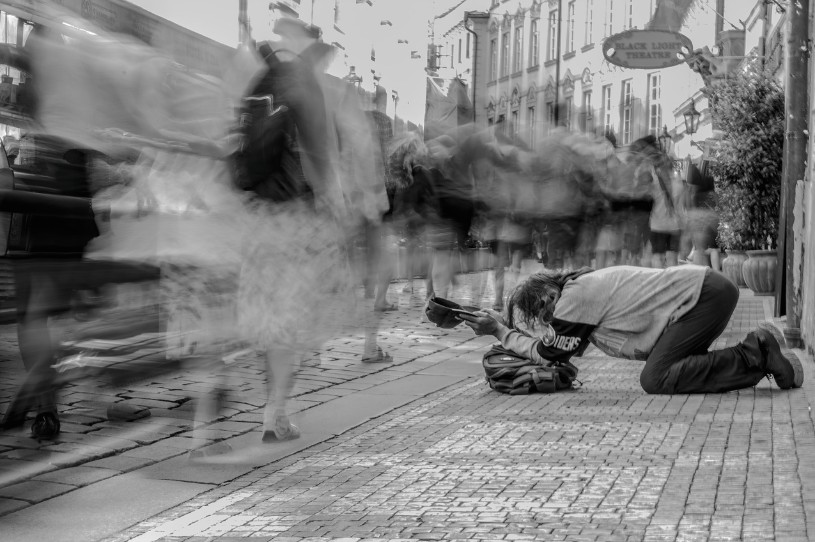
The prospect that greater cognitive flexibility can support deeper feelings of empathy and interconnectedness certainly resonates with recent research and reports of altered and mystical states, where experiences of transcendence, interfusion and universal love are not only prevalent, but often appear to occasion enduring functional changes. As entropic brain theory indicates, however, cognitive flexibility of this kind arises during states of increased ambiguity and generative disorder, which can be acutely distressing. Friston and Carhart-Harris acknowledge these risks by noting that “poorly integrated experiences could leave individuals awash in uncertainty and eager for solace in tenuous, or, worse, delusional beliefs that serve to stop-gap uncertainty.” Thing is, as we’ve already established, that’s precisely the state in which we find our current social order—as a simultaneously hyperconnected and haphazardly fragmented pressure cooker on overdrive.
It might seem contradictory to suggest that mental health can be improved by introducing still more cognitive disorder, even if only temporarily and in a regulated therapeutic setting. But again, as recent research indicates, the problem isn’t overload or uncertainty itself, but our brains’ limited tolerance of indeterminacy. The issue, in other words, isn’t too little order, but too much. All fundamentalisms and extremisms adhere to the brittle certainties of dualistic and dogmatic thinking, adopting highly controlled limits to impose an atrophied but internally coherent picture of reality. This includes cultic, conspiratorial and purity-centric beliefs across the spectrum—worldviews that have proliferated amidst the overwhelming irruption of multiplicity over the past few decades. It’s the planetary equivalent of a bad trip that has so far gone unintegrated, and resembles a phase of the psychedelic experience that Andrew Gallimore likens to channel surfing, when the brain begins to “move in a disorderly fashion through an expanded number of different patterns of neural activity … [as if] fumbling with the dial attempting to retune itself.” By loosening the default mode network’s habitual patterns, psychedelics not only subvert the brain’s tendency towards egocentric and ideological rigidity, but free the mind to discover new forms of meaning. And without both individual and collective expansions of meaning-making, we risk remaining stuck trying to solve problems with the same thinking that created them, or worse, remaining adrift in a relativistic limbo of perpetual distraction and inaction, as many multiverse narratives are inclined to warn us against.
***
In the 2016 film, after Dr. Strange is awakened to the vastness of the multiverse, he quickly masters the associated mystic arts and begins manipulating both space and time with the aid of energetic mandalas and other geometric sigils. It’s a superhero movie, after all, but one that playfully engages its many psychedelic tropes. For the 2022 sequel, In the Multiverse of Madness, Strange is able to freely travel between dimensions with the help of young hero America Chavez. Aside from one scene in which the two briefly traverse more than a dozen bizarre universes, however, the events of film mainly take place in a handful of recognizable alternate realities that conform to a conventional earth, heaven and hell schema. The film does explore some basic “what if?” themes, but the allure of infinite possibilities is unambiguously presented as treacherous. Instead, the multiverse idea primarily supplies a conceit for the combination of Marvel properties, serving up a facsimile of multiversal complexity that offers little meaning beyond its own increasingly entangled, self-referential spectacle—a problem openly criticized in later films.
Embracing both spectacle and complexity, the long-running animated series Rick and Morty gleefully exploits the multiverse idea to explore the storytelling possibilities and philosophical implications of infinite worlds. The show follows sociopathic mad scientist Rick and his earnest, anxious grandson Morty, who together form “a dialectic of damaged maleness,” as they cast about on interdimensional misadventures involving knotty sci-fi premises such as a love affair with a planet-wide assimilating hive-mind, an extraterrestrial counseling institute that materializes couples’ perceptions of one another, and a trans-dimensional city-state inhabited entirely by Ricks and Mortys from countless alternate realities. The show’s commitment to its story lines yields entertaining and mind-bending results, but for all the anarchic, parodic, and often cringey fun viewers might find, the characters (especially male) are generally not ok. Rick self-medicates while fiercely defending a narcissistic, nihilistic worldview, Morty bungles his own naive attempts at moral integrity with frequently catastrophic results, and his petulant father Jerry oscillates between withering self-doubt and willful denial. Prolonged exposure to multiversal relativism and the apparent absurdity of existence not only deteriorates everyone’s mental health, but often leads to further entrenchment within existing self-centered beliefs and other coping mechanisms. Rick and Morty cares deeply about investigating the possibility that nothing matters, and makes great effort to establish plausible deniability about this paradox, which lies at the show’s (sarcastically beating, dark matter-powered) heart. But for all its enthusiastic flash and cynical recoil, the show typically resolves with the family achieving domestic ceasefire and returning to the couch to watch TV together—less an integration of multiplicity than a retreat into familiarity.
As metaphor for our contemporary cultural cacophony, these multiverses pull few punches. Both the MCU and the world of Rick and Morty affirm the deleterious effects of information overload, existential uncertainty and a superabundance of possibility, so it’s no surprise that mental health and the pervasive cognition crisis are key themes. The “madness” of the Doctor Strange sequel refers to Wanda’s and Strange’s slipping sanity amidst the overwhelm of alternate realities, where they witness versions of themselves succumbing to brutality and destruction. For Marvel’s mystical superheroes, as for mad scientist Rick, these narratives emphasize the chaotic and reality-destabilizing consequences of such power, rather than simply its corrupting influence. These are essentially cautionary tales, though our protagonists manage to escape a more unpleasant fate by acquiescing to the strictures and conventions of their native timelines, presumably wiser in the knowledge that the nature of reality exceeds their understanding or control. That’s true enough, and an important starting point for sense-making, but beyond warning us away from similar folly, both story worlds fail to provide helpful strategies for skillfully navigating the continued encroachment of multiversal complexity into our everyday lives.

Other multiverse narratives take a different approach, however, mapping the same dangers but offering decidedly different responses. The multiverse idea is an essential connective element in the concept and design of Meow Wolf’s hugely popular immersive arts projects, including permanent installations in Santa Fe, Las Vegas and Denver, where visitors can choose to wander freely or attempt to follow each location’s unique puzzle-like narrative. Convergence Station in Denver, for instance, centers around the story of four worlds that have become entangled with ours in a mysterious cosmic event. Beset by psychic aftershocks, citizens’ memories are so scrambled that the exchange of “mems” forms the basis of the convergence’s economy. This sci-fi premise—perfect for a multi-level psychedelic labyrinth—supports an interactive narrative that unfolds like an elaborate scavenger hunt. Here, too, fragmentation and complexity are part of the story, but visitors are invited to creatively engage through spontaneous, childlike play, recalling lost memories or making new ones, and, like the convergence’s citizenry, actively piecing together or inventing one’s own meanings as part of the experience. Once inside, eyes alight, confusion gives way to a heightened state in which seemingly disparate worlds begin to cohere into something greater than the sum of their parts. Rather than shrink from ambiguity and overload, Meow Wolf prescribes full-scale exploratory immersion.
And then there’s Everything Everywhere All At Once, the acclaimed 2022 film whose title perfectly describes both the multiverse, by any conception, and the world for which the multiverse has become metaphor—the world we live in, where multiplicity is unavoidable and unfathomable in about equal measure. This multi-genre gonzo epic has been labeled sci-fi action comedy, though the London Review of Books perhaps more accurately describes the film as a “philosophical soap opera.” It’s a uniquely wild ride, by turns exhaustive and exhausting, where the multiverse also importantly serves, as Anne Anlin Cheng highlights, as metaphor for the immigrant Asian American experience, and by extension for the “the dislocations and personality splits” of many identities. Like Rick and Morty, the film takes the possibility that nothing matters as one of its central concerns, at once a psychological, generational and existential challenge depicted most vividly in the experience of teenage daughter Joy, but present in every character’s sense of failure and missed opportunity. There are fight scenes and goofball antics and poignant interludes, all tethered together with a head-spinning music-video momentum that blurs cosmic as the film progresses, coalescing in a googly-eyed psychedelia that contains multitudes.
As manifest in an alternate persona, Joy’s fractured mind simultaneously experiences all universes as a library of infinite possibilities, which she draws from at will while waging a destructive campaign to confirm that existence is meaningless, and thereby essentially becoming the interdimensional equivalent of a haute couture internet troll. By attempting to help her daughter, Joy’s mother Evelyn experiences a similar rupture, and is eventually tempted by the same nihilistic allure. Rather than succumb to or retreat from engulfing multiplicity, however, Evelyn instead heeds the wisdom of her soft-spoken husband Waymond, who urges her to choose to see the good side of things, and to please be kind, despite the confusion and uncertainty we all experience.
This advice, so easily mistaken for wispy sentimental cliché, takes on a refreshing concreteness amidst the absurdist maximalism of the film. Rather than dismissively filter out Waymond’s loving plea, Evelyn experiences it anew, rich with resonant meaning, and is inspired to use the full expanse of multiversal possibility as a source of transforming power, creatively remedying the suffering of her adversaries by pacifying them with sudden happiness. It is fanciful and ridiculous and sublime—a kind of psychedelic kung fu that transmutes aggression into delight through spontaneous acts of creative love. Not surprisingly, exercising this newfound skill is a little more workaday back in our familiar timeline, as we see when Evelyn and Joy reconcile. “So awkward,” Joy groans after they embrace, but it’s clear that their relationship has deepened, not only in Evelyn’s acceptance of Joy’s sexuality, but in their surrender to a love that is freely chosen, despite everything.
***
In this way, the prospect that nothing matters is transformed from a nihilistic rejection of meaning into an affirmation of possibility, not the dead end of a fruitless search, but a liberatory beginning from which to create purpose and value. Rather than retreat within the brittle certainties of prescriptive beliefs, this multiversal awareness accepts uncertainty as the necessary starting point for an expansive curiosity that welcomes the world in, eager to learn as much as possible while appreciating that the full grandeur and mystery of the cosmos may forever exceed our understanding.
Well sure, easier said than done. Because again and again, our brains default to ordered patterns that maintain an active sense of self by constraining perception and cognition within fixed modes of filtered, predictive processing. Flashes of novelty or insight may disrupt these patterns, but familiar habits of thinking and behavior soon reassert control as the autocratic rulers of our island universes. This may especially be true of many psychopathologies and trauma responses, which Friston and Carhart-Harris propose are developed through “the entrenchment of pathologic thoughts and behaviors, plus aberrant beliefs held at a high level.” Such beliefs often exert undue influence on the self-identity or ego structure, and can be very difficult to access and alter. Research confirms that a variety of therapies, that a variety of therapies, meditation practices and other modalities can relax these default patterns and facilitate enduring changes over time. And occasionally the measured pace of these methods may benefit from the support of powerful catalysts that can, given the right conditions, reliably occasion states of heightened plasticity conducive to embodied, revelatory insight.
This returns us to psychedelics, which have the ability to temporarily destabilize and reconstitute consciousness in ways that can measurably retain healthier and more harmonious brain functioning, as well as expanded connectivity, openness and alignment. The classic psychedelics are not only proving to be remarkably effective in treating PTSD, addiction, and other disorders, but demonstrate tremendous potential in helping people of all kinds deepen our inherent human capacities for self-awareness and self-authorship. By relaxing rigidly held beliefs and assumptions, psychedelics can free the mind to synthesize and integrate new forms of meaning as part of a holistic healing process. This is partly why many indigenous traditions regard psychedelics as medicine: because they view the healing of physical and mental symptoms to be inseparable from addressing underlying psychological and spiritual constrictions, both personal and collective.
Whether with a rush or a gentle nudge, these medicines offer admittance into states of being beyond ordinary confines, where the separateness of self and other gives way to an interconnected totality that is continuous with the living planet, the cosmos, the infinite. And then, when the world’s endless forms return, they do so not as isolated and conflicting rivals, but as part and parcel of a witnessed and welcoming whole, a coherent manifold chaos whose order and inexplicable rhythm is ever-evolving.
As conjecture and metaphor, the multiverse represents the idea that myriad complex, even apparently contradictory systems—whether thought worlds, or actual worlds, or something in between—can not only functionally co-exist, but can interconnect in diverse, multifaceted relationships whose dynamic cohesion and recursive density may only be evident at certain scales. A multiversal awareness therefore includes a high tolerance for ambiguity and a contextual appreciation for the simultaneous presence of both boundless potentials and bounded perception, of possibilities and limits. Because cognitive flexibility of this kind is developed experientially, it’s doubtful that “non-hallucinogenic” drug derivatives will offer the enduring, transformative impact of the classic psychedelics, as some researchers hope. The trip is a feature, in other words, not a bug. And why should we expect otherwise? Change is hard because our brains are adept at encoding protective patterns, plus preserving the hardwired propensities and reward cycles that many technologies now deliberately and addictively exploit. For good or ill, the hyper-connected multiverse of our ever-accelerating, data-driven world is revealing reality itself to be vertiginously multiple and endlessly alternate, challenging our deepest adaptive abilities. As versatile catalysts, psychedelics may offer uniquely effective pathways for expanding and restabilizing both individual and collective meaning-making capacities.
This doesn’t mean that we should start dosing the drinking water or reviving the acid tests, however—research supports a measured enthusiasm informed by the importance of context and integration, especially as provided by ceremonial and therapeutic approaches. Additionally, Brian Pace and Neşe Devenot make the case that “conservative, hierarchy-based ideologies are able to assimilate psychedelic experiences of interconnection,” suggesting that temporarily increased cognitive flexibility does not inevitably lead to specific progressive values or beliefs. That’s the multiverse for you. Psychedelics aren’t a universal panacea—as ever, we have before us the hard work of healing, all down the line of our ancestors and on up into the branching world tree of our as-yet unmapped possibilities, which bloom forth in interlocking geometries of infinite depth and resonance, only to recede again as faintly whispered invitations for our hearts to follow as we seek pathways toward greater freedom, pathways beyond fear.
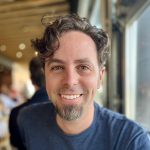
About Austin R. Pick
Austin R. Pick was born in North Carolina and has traveled widely while cultivating a commitment to contemplative practice and a love of the world’s wild places. Austin’s writing has appeared in The Arrow, The Stockholm Review of Literature, Epiphany, Tahoma Literary Review, Pleiades, Metazen, Adbusters Magazine and elsewhere. He holds a Master’s in Contemplative Religions from Naropa University, where he was a founding member of the Naropa Center for Psychedelic Studies. He lives in Colorado, and his website is fudomouth.net.
Flesh and Blood | On the Sacraments of Survival
Flesh and Blood | On the Sacraments of Survival
featured image | by Elisabeth Jurenka
It is good knowing that glasses
are to drink from;
the bad thing is not to know
what thirst is for.1
– Antonio Machado,
Translated by Robert Bly
A lifetime ago, at the invitation of an elder and friend, alongside some twenty others, I made a vow. It contained a commitment to go out into the wilderness for four days and nights at a time, once a year for four years and sit. Once in a frozen forest, once in a summer swarm, once at the edge of the ocean, and once in a charred ravine. Feeding the four directions of our telluric turning. In the name of those who would come after us, we pledged to sink into the ground and surrender to being smoked by time.
The instructions were succinct: we were to sit down and stay still, fixed and grounded. To fast. It seems strange terminology, given the slowness imposed and required. “To fast” means “to abstain from food,” but deeper down we find its roots, which mean “to hold, to guard firmly” from the proto-Germanic fastanan.2 Eventually, the word came to mean “to hold oneself to observance,” which is what we were tasked with – to fasten ourselves to the firmament of place, without rest, reassurance, movement or ministration; without food or water.
Previously a stranger to such traditions, I eventually came to digest the words of the late Dagara ritualist Malidoma Somé, who wrote “the emptier your stomach is, the easier it will be for you to learn. Other things within us are better nurtured when the body is not fed.”3 A little more kindred following the four prostrations, I lay these considerations down as a small piece of what I might have learned out there, so that together we might feast on an empty stomach.
These endeavors amounted to a kind of initiation. But, if you asked us, years later, to deliberate and decide what we were initiated into, you’d have a hung jury. Whether or not we were initiated into anything remains a mystery, but it is that mystery and a willingness to feed it, to ensure that it continues to have a place at the edges of our days, that requires me to leave so much of what happened out there out there. Perhaps, you might understand that much of what is sacred is also secret, that for the holy to be heard, a silent surrender might be a prerequisite. While everything in this world belongs, not all of it belongs to everyone or all at once. This is a kind of mercy that honours the original understanding of hierarchy as “a sacred order.”
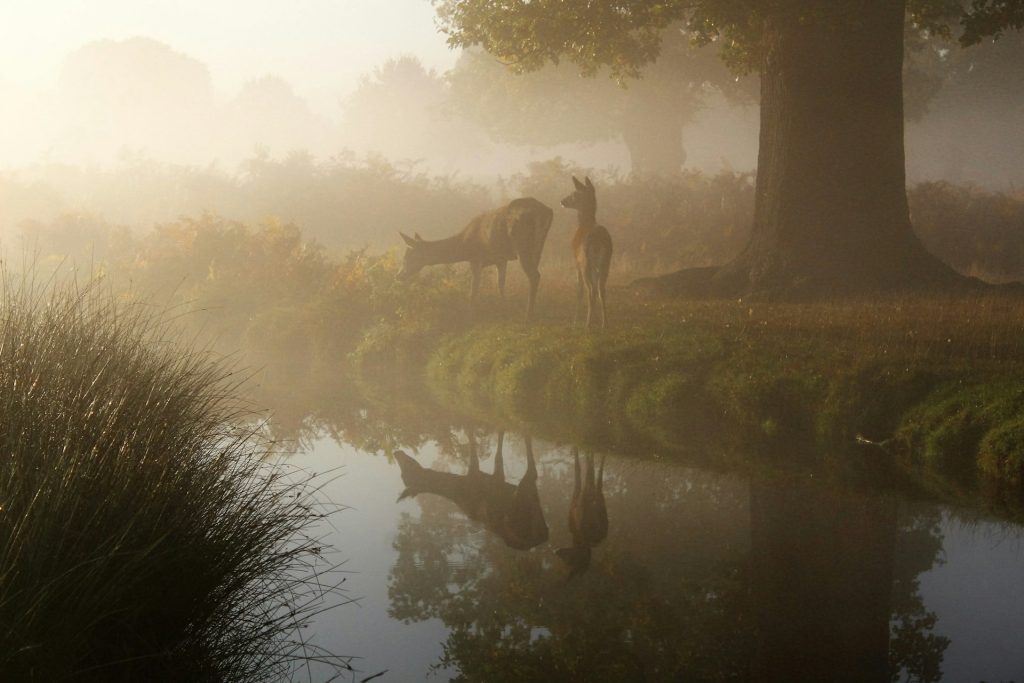
Such matters, such katabatic undertakings, can prod people into deeper relationships with the underworld, with their mortality, their kin and their nourishment. They can remind us how food and water are the sustaining sentient bodies of all animate beings. While this might not be a recurring reality when you sit down to eat a meal, we can still apprentice such relationships, in part, by knowing what it costs us to abstain from them. In our time, this inquiry also wonders what happens when we refuse to fast, when our will to survive forbids and forsakes the abstention.
Hunger and Thirst
We can say with a degree of fidelity that close to all of our human ancestors’ days were defined by their relationships to sustenance, by working with those who nourish, by working for them and being worked by them. The elements, animals, plants, soils, and spirits. Humans have often deified their relationships with each, to both divine and disastrous degrees. In our age, food and water are either the foundation for life’s prolongation or the primary factor in its subversion. They can nourish or they can neutralize.
Today, though, it is often only the presence of sustenance that gets acknowledged. The absence of such things is almost exclusively spoken of as poverty. But what if this contemporary poverty arises not from sustenance’s presence, but from having forgotten what is absent in that recognition?
During the time-out-of-time that accompanied such intense fasting, my father’s voice echoed around me, recalling his peasant childhood some seventy years previous. “I remember hunger,” he once confessed. An affliction that I, myself, never encountered up until the end of my youth. And while the way he spoke in such moments might have ciphered the memory of an Old Country insecurity, those endless hours of fasting and invocation invited not a feeling, but a form, a figure. A Hunger. The chalk outline of my desire, subsumed by the prayer-tie perimeter surrounding those days, etched a familiar forgetting, as well as its unlikely re-cognition.
What we refer to as scarcity today was forever a factor in the lives of our dead. A lack of food and water. For them and for the countless peasants whose dirt-drenched fingerprints continue to forge kinship between people and place, it is often the scarcity of sustenance that determines life’s trajectory. Not simply a fear that “there won’t be enough,” but a lived understanding and relationship to limit, one that can proffer prayers on the lips, preceding each sip, each taste, each morsel as a communion. Gratitude, in other words.
I’m reminded of the stereotypes of elder generations of Europeans and Africans who apparently rarely bathed throughout their lives and imagine that their silty skin and scents didn’t emerge from a shortage of water. Instead, their lack of cleanliness arose from a godliness that most of us, today, have forgotten. That is, to ensure they could continue to draw from the deep well of religious reverence that fed what sustained them, they largely withdrew from the ability to soak, submerge or siphon. Not because the elixir of life was in short supply, but because they held it in such high and holy regard.
In myriad cultures, past and present, local and lineal foods (both as plants and animals) are revered as deities, just as their wellsprings, rivers, and mountains often are. I wonder about our ancestors, the ones young enough to be considered “ours,” constantly sensing those consecrated presences nearby. At times, I dream about our Old Ones, perhaps seeding, husbanding, and harvesting their food or water, and whether they approached the former, just as they might have the latter, as aware, divine and even kindred – as Flesh and Blood.
Contending with all that I had encountered out there on those long, dark nights of the soul, I felt Hunger and Thirst enter into me, not as the mere absence of food and water, but as presences, as specters. I asked myself then, as I ask you now, what if Hunger and Thirst are names of the numinous? What if they are Gods whom we’ve ghosted? What if our inability to recognize these apparent afflictions, these telluric needs as deities and the sustaining sentiences of our days subverts our relationships to food and water, to Flesh and Blood? And what if any achieved and enduring kinship with our nourishment demands such fastidious remembrance, such material and memorial offerings? What is the cost of gluttony, of surplus, of unquestioned excess, if not a mortgage (i.e. “death pledge”) that starves the world in order to feed only the human?
A Recipe
If you’re lucky, as I sometimes was, after the second full day, your ideas about dying slowly and defiantly give way to your dying. A softness descends, while a subtle strength persists. Appetite is all but an afterthought now. Hunger and Thirst satiate. It’s a strange dynamic. And as the days turn to hours into minutes, your mind exhausts itself. If you’re lucky.
You ask for forgiveness for cursing the scorching sun, the swarming mosquitoes, the icy ground and yourself for signing up. You pray that your life continues until all that’s left to do is to pray that life continues, with or without you. You feel tears thick as cream inching up out of your eyes, wondering how close you are to the last drops. Somehow, you sense that those liquid oblations are worth more to the world than what remains of your raisin frame. So you wait and you pray and for a very long time, this is the afterlife.
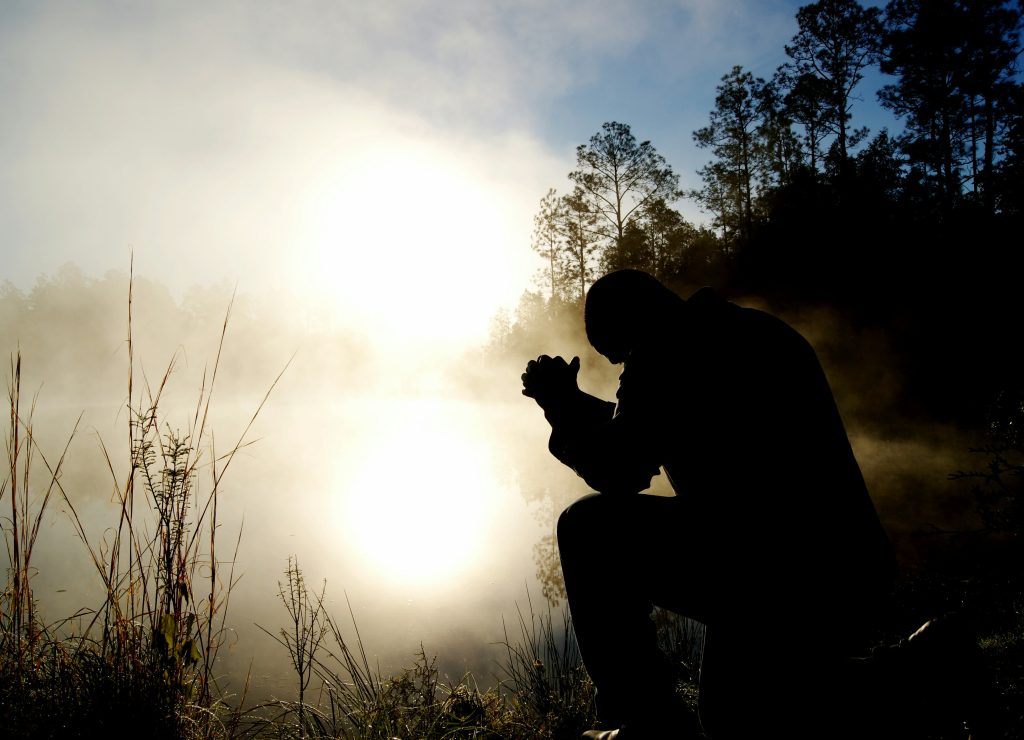
And then, the end. Like a candle flame flickering through the veil between worlds, a voice, one that’s been whispering your name over prayer beads and bells all this time, quietly announces itself. With utmost tenderness, you are lifted and led back, cleaved open, to a circle of your still-dying companions.
Alongside them, you can barely hold the freshly-carved spoon to the trembling and anointed threshold of your mouth. Despite your pain and prostration, and even despite your resolve, you will forget this moment. That wooden offering, sliced and shorn under lunar swell and supplication, bearing bone broth myrrh and mercy, about to baptize your body, comes with an uncanny caveat. As much as you will want to forget and as much as you certainly will, do what you can to remember this moment.
Without a lived memory of Hunger and Thirst in our days, without a lived relationship to the care and courtship required to conjure Flesh and Blood, neither are properly satiated.
When nourishment is known only by our need to feed, we squander an understanding of what goes unfed and the banquet table of our times shrinks, losing another guest, another host, foreclosing on another house of hospitality.
To hold oneself to observance is to peer into the unseen, the unrequited, and the dismembered. This was the offering and the ask at the end of each fast – to gather in, to re-member. To break-fast on the final morning, with the estranged, simmering scent of animal stock in the air, a plea was offered up as a prayer, a feast rendered with the fat of memory. A grace offered up as the food:
Whatever you do, try not to forget…
[that Hunger and Thirst are the children of Death,
just as Flesh and Blood are the children of Life].
Let that linger. Let that disclaimed lineage in. It is yours, after all.
Perhaps, now, you can sense it. Maybe you can begin to feel it, to remember that the former are not the absence of the latter, but their twins, the rest of the story, and maybe even the roots of it.
We can be grateful that there are still people alive today who remember such things. We can be humbled by their willingness to act on the understanding of what can come to pass when those things are forgotten. These elders have learned that a deliberate and onerous reunion with Death and his kin is mandatory to temper what each of them can become when they are neglected and malnourished.
Modern Masks
In our age, Hunger and Thirst are routinely subsumed into systems of scarcity, disguised and seldom recognizable as such. These Gods fall famished and like anyone, go looking for ways to feed, which in their cases, are ways to starve.
We can ask if GMO and Terminator seeds and the rivers we turn into sewers aren’t a consequence of this rupture. Not a quick fix to our dilemmas, but their deepening. We can wonder about the modern micromyths of development that sell guilt and scarcity, in part, through images of bloated and starving children, elsewhere. Not the ritual feeding of Hunger and Thirst, but instead, the fetishization of their disappearance from our lives. All of this, as a way of concealing what’s been done to Flesh and Blood, typically in our names.
The solutions that modern institutions solicit too often spring from the poverty that prefaced the problems in question. And so I ask you whether or not we unknowingly unleash Hunger and Thirst onto the world as a result of what we’ve taken from Flesh and Blood, both at present and ancestrally. The phantasmagoric fallout, in other words. And what have we taken from them, you might ask? Their twins, of course, but more emphatically, their kinship, their wholeness and their diets – this last word which signifies both our daily bread and our abstention from it. The segregation of Flesh from Hunger and Blood from Thirst is mirrored in the global food system. The consequence is clear: many must fast, so that a few can fatten.
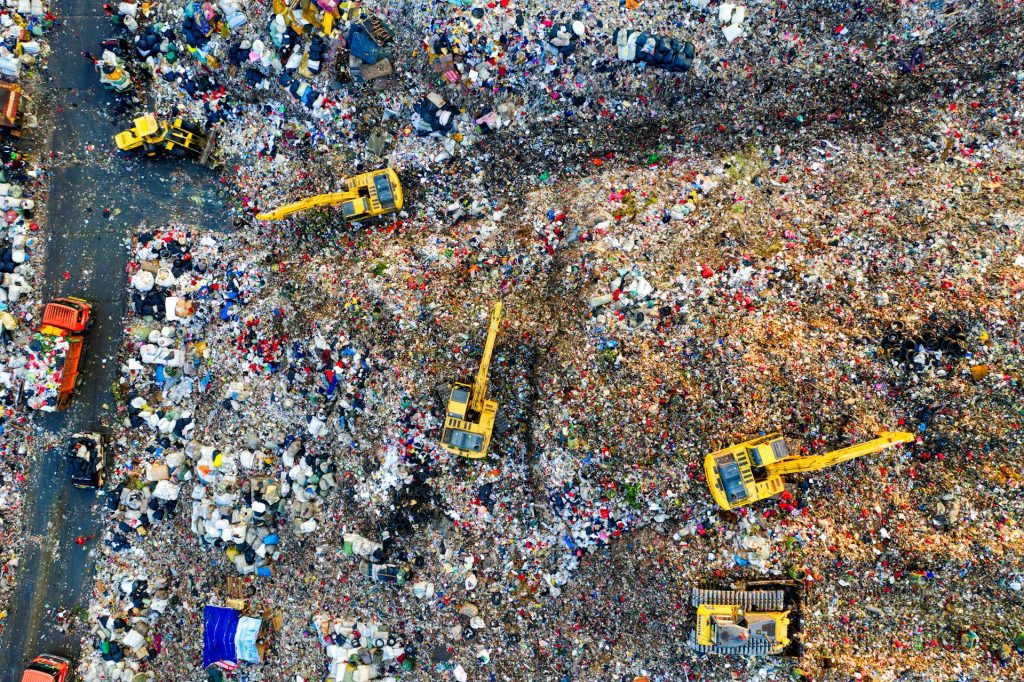
Could it be, then, that the supermarket invitation to rabid gluttony and the access to it has vilified a capacity to fast – to hold oneself to observance, to be a faithful witness to the times? Could it be that in the threads of ancestral memories, ones that stitch Hunger and Thirst throughout, we have decried what were previously and properly deities in the lives of our people? What if the globalized food systems, the plumbing, the irrigation, the slaughter factories, the supply chains, and the mechanization of each are all consequences of this – not the deification of Hunger and Thirst, but their demonization and exile (as a result of being entered into the oasis of manufactured abundance)? What if Hunger and Thirst were cast as monsters only upon our ability to outlive, to outgrow, and to outrun them, no matter how fleeting that flight may be? And what if our ability and willingness to fast, to go without, to limit ourselves, kept all of that at bay?
Scarcity and surplus seem to be complementary opposites, forces that serve each other in their equanimity. Gain too much of one and the other becomes necessary to reincarnate the true cost and value of each. Among privileged people, “modern” as it’s often said, who not only have access to food but the means to purchase it, how is it that our grace-making rituals have disappeared from our meals? How do the ways we eat and drink banish Hunger & Thirst?
How is it that the more food we produce and consume the less appreciative of it we become? At what point did “gratification” stop being a synonym for “gratitude?”
Within the contemporary calendar of modern peoples, praise typically begins in spring and ends with the sway of falling leaves. The touchdown of rain and snow is sometimes referred to as “inclement,” regardless of water’s millennial associations as the elixir of life. Only certain seasons are celebrated, disgracing or escaping others while ignoring their subsequent dilation, volatility and destruction. Like Flesh and Blood, like Hunger and Thirst, we could ask how our current climatic calamities are consequences of our forgetting to feed the sentient architectures of our broader ecologies.
The countless reasons that led us toward those fasts in the first place are still very much in the world today, more pronounced and perilous than they were when we began. These questions that I’ve courted and laid in front of you are, in part, an attempt to earn that privilege, retroactively. They are a testament wrapped up in a plea, a grace that tries to recall all of the meals that lacked one.
The First Ancestor
Among so many rooted peoples, past and present, the plants and animals of their sustenance are and were understood as forebears. As a friend of mine has proclaimed on occasion, “the thing that fed your first ancestor is your first ancestor.” Those who have nourished your life and your peoples’ lives are, in many places, known both as deities and ancestors. They are the royalty rooting your family tree, the progenitors of your very existence in the world. They are the inflection on the gratitude conjured from your tongue, if it is conjured. And so, what becomes of Life and Sustenance without a relationship to Death and Decay? How can we engage in the slow and sacred act of eating, of communion, of visceral regeneration if we’ve never learned to fast?
Down and into the lineage of language, we find the verb “to fast” as a synonym for the verb “to forbear,” which also means “to abstain, to do without, [and] to endure the absence of.”4 Paradoxically, “to forbear” also means “to which we have, or that which has been, borne forward.” To bear, to fast and to fasten ourselves to Hunger and Thirst, as much as we might to Flesh and Blood, is to witness forbearance in full view. It is to give pause to that which we feed on and to allow it to be fed for a time. It is to become nourishment for that which grants us our lives. It is to be on the receiving end of Death’s dominion rather than his supposed surrogate. This is the recipe we might prepare for Them, that we may be cooked, reduced and distilled in their crucible.
If Flesh and Blood in their endless incarnations are some of our earliest ancestors, then Hunger and Thirst are right there alongside them, requiring our reverence and our refrain. They are both the appearance of limits in our midst and our manner of honoring life. They are the roots and the fruits of all that constituted survival for our Old Ones. Likewise, language faithfully leads us by the ear, by the tongue, revealing to us how we might bear them in mind, how to carry them in our days
so that no one
goes
unfed.
Finally, in the bonehouse of the fast, with devoted allies and kin bearing witness, you sit prostrate on the platform of your dying days. Withered and worn, you raise the Gods to your mouth, pausing for prayer, the tears blessing the broth, the broth blessing the body, and a whisper:
Try as you may, you will forget this.
So, try as you might
to remember
this moment.
[1] Machado, Antonio. Times Alone : Selected Poems of Antonio Machado. , Translated by Robert Bly, 1st ed, Wesleyan University Press ; Distributed by Harper & Row, 1983. p 111
[2] “Fast” Barnhart, Robert K., and Sol Steinmetz. The Barnhart Dictionary of Etymology. H.W. Wilson Co., 1988. p 317
[3] Somé, Malidoma Patrice. Of Water and the Spirit : Ritual, Magic, and Initiation in the Life of an African Shaman. Putnam, 1994. p 205
[4] “Fast” Barnhart, Robert K., and Sol Steinmetz. The Barnhart Dictionary of Etymology. H.W. Wilson Co., 1988. p 317
Return to the table-of-contents for this Issue, What Water Can Teach Us
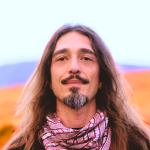
About Chris Christou
Chris Christou is a cultural ecologist, storyteller, and writer. He hosts the End of Tourism Podcast, a space for conversations with authors and activists on the themes of wanderlust, exile, and radical hospitality. In southern Mexico, Chris runs Oaxaca Profundo, a project that offers intercultural teachings and exchanges. A graduate scholar of the Orphan Wisdom School and the Universidad de la Tierra, his writing has been published in the Dark Mountain Project, Modern Farmer, Gods & Radicals, Liminal Journal and the Journal of Wild Culture. You can find and follow his work at chrischristou.substack.com and chrischristou.net.
'Fourth Person' | Collective Sensing
‘Fourth Person’ | Collective Sensing
featured image | by Priscilla Du Preez
Abstract
In the context of polycrisis and systemic collapse, the primary challenge we face is a widely shared sense of collective depression—a lack of agency in regard to the bigger picture. What does it take to serve evolutionary transformation in the face of this collapse? In our view, it takes a form of knowing which extends beyond the current constructs of first-, second-, and third-person knowing around which much of our current learning, knowledge, and leadership systems are organized. In this paper, we suggest fourth-person knowing as a distinct epistemology at the intersection of the other three, and we draw on our action research to illuminate five phenomena that point to and distinguish fourth-person knowing: (1) knowing that comes through me but is not of me; (2) knowing that shows up in my individual experience as a decentering of perception; (3) a heightened sense of potential, of possibilities that previously were experienced as unattainable now appear to be in reach; (4) sensing your own agency in helping the ‘universe’ (the larger field) to evolve; and (5) significant long-term impact in terms of practical results. It is our hope that by articulating fourth-person knowing, we can provide an epistemic basis upon which research and inquiry methodologies can be built, complementing first-, second-, and third-person forms of inquiry, methodologies based on deep sensing and presencing that support individuals and collectives to recognize, connect with, and manifest what is theirs to do in the wider context of this moment and the incipient patterns of emergence and movement making.
Keywords
fourth-person knowing, Theory U, social field, trans-subjectivity, self-transcending knowledge, presencing, awareness-based systems change
READ THE PAPER IN ITS ENTIRETY HERE
Reprinted from the Journal of Awareness-Based Systems Change, Volume 4 Issue 1
Scharmer, O., & Pomeroy, E. (2024). Fourth Person: The Knowing of the Field. Journal of Awareness-Based Systems Change, 4(1), 19–48. https://doi.org/10.47061/jasc.v4i1.7909
Introduction
The number one problem facing humanity today is not climate change, inequality, or war. It is not the proliferation of artificial intelligence (AI). Rather, it is our sense that we are powerless to change any of it. The old ways of knowing and acting in our world are no longer sufficient. Our systems are collapsing. If we are going to serve societal transformation in the face of this collapse, as we believe is fully possible, we need to draw on a new form of knowing—knowing for transformative action.
Our existing categories of knowing—first-person (subjective), second-person (intersubjective), and third-person (outside-objective)—upon which our systems of learning, knowledge creation, and leadership are based, are important but not sufficient to activate the deep shift and energy that are called for now. We need a quality of knowing that allows us to connect with and appreciate more deeply the dignity and interiority of the worlds that surround us and that we co-shape and co-enact moment to moment. It is the collective interior of the worlds co-arising in us in general, and the more subtle and emerging qualities of social systems in particular, that have remained in an epistemological blind spot if seen from the viewpoint of positivist approaches to science. And yet, deep in our own experience, many citizens, change makers, and leaders know that to meaningfully address the profound polycrisis of our time, we need to tap into a deeper source of knowing. That source of knowing already exists and in many ways underlies the actions of thousands, if not millions, of innovators and networked communities around the world. This deep collective awareness is a gateway to emerging future possibilities that depend on our presence and agency to manifest. We believe it is this very personal and yet collective-interior way of sensing and knowing that is at the core of our planetary moment and movement making and that we refer to and introduce here as fourth-person knowing.
In this paper, we unpack the fourth-person perspective, first making the case that it is a knowledge type sui generis, epistemologically distinct from the other three forms, and then drawing on our action research to illuminate its source, form, and nature. Fourth-person knowing can be thought of as an expression and extension of self-transcending knowledge, or “tacit knowledge prior to its embodiment in day-to-day practices,” which emphasizes “the ability to sense and presence the emerging opportunities, to see the coming-into-being of the new.” The extension here is to bring self-transcending knowing into the frame of person-perspective epistemologies (first-, second-, and third-person knowing), exploring the epistemic space where the boundary between these forms of knowing blurs, and where there is both overlap and differentiation between knower and known. One of our intentions in bringing self-transcending knowing into the fourth-person frame is to provide an epistemological basis upon which research and inquiry methodologies can be built in parallel to first-, second-, and third-person forms of inquiry—methodologies based on sensing and presencing.
The concept of presencing, and the Theory U approach that underpins it, is based on the assumption that human beings have the capacity for deep sensing. It is a capacity for sensing not only what is, through perspective-taking and tuning in to different perspectives, but also for sensing what isn’t yet, what is about to emerge. Sensing is really about embodied knowing. It is aesthetic, drawing on the Greek aisthesis: the knowing of all our senses. Presencing combines sensing with actualizing the emerging future.
Presencing is essentially an antidote to positivism, which separates mind and world. The core assumption underlying fourth-person knowing is that mind and world are not separate, but rather are intertwined in a co-shaping relationship. As such, presencing sits firmly in the blind spot of generative artificial intelligence (AI). AI excels at processing, ordering, and extrapolating from masses of existing data, and this is the place from which it projects the future. But AI cannot source from this deeper level of sensing, which we maintain is where the new comes into being. Presencing is therefore the source of knowing needed to address the deeper dimensions of the challenges we face. The more the capacity for deep sensing and presencing is developed and cultivated, the more easily skilled change makers, leaders, and other developmental professionals will be able to tune in to latent developmental possibilities that are neither empirically evident (yet) nor merely a subjective fiction in the eye of the beholder. They can be evidenced through a new category of cognitive practices that, in this article, we call fourth-person knowing.
A Blind Spot in Western Cognition
The fourth-person perspective addresses a type of knowing that is largely missing in today’s institutions of science, education, and societal decision-making. It is missing because it addresses a blind spot in Western cognitive epistemologies. Neurophenomenologist Francisco Varela described experience as being “at the very center of many traditions, but it has been obscured in the Western tradition, particularly in science…it is as if there’s a big blind spot.”
Varela developed a synthesis of the three approaches that he saw as addressing this blind spot—psychological introspection, phenomenology, and meditation—to draw out and formalize what was methodologically consistent across them. His intention was to build and support a science “which includes first-person, subjective experience as an explicit and active component.” Varela and his colleagues identified a framework and method for inquiring into first-person experience, what they called the core process of becoming aware, made up of the three gestures of suspension, redirection, and letting go. They maintained that these gestures can be, and need to be, cultivated through practice in order to build the capacity to access first-person experience such that it moves beyond impressionistic descriptions to “phenomenal descriptions that are rich and subtly interconnected enough in comparison to third-person accounts.”
The Theory U framework is grounded in the three gestures of becoming aware outlined by Varela and colleagues, but it extends their application from individual cognition to social systems. The resulting Matrix of Social Evolution is based on two axes: the shifts of awareness and consciousness that Varela described (suspension, redirection, letting go) on the vertical axis, and the different levels of social systems (micro, meso, macro, mundo) on the horizontal axis. As people or social entities go down the left side of the U (i.e., down the vertical axis of the Matrix of Social Evolution) in their process of cognition, the boundaries between first-, second-, and third-person knowing as discrete experiences begin to fade. The source of cognition shifts to a realm of interaction that blends subjective, objective, and intersubjective knowing, which we refer to as self-transcending, or trans-subjective, knowing. Trans-subjective knowing is the knowing of the collective interior. While it shows up in our subjective experience, it is not purely subjective knowing; nor is it purely objective or intersubjective. Rather, trans-subjective knowing incorporates and blurs the boundaries between all these perspectives to connect with a distinct form of knowing that is experienced as coming through us but is not of us.
Essential to the exploration of the collective interior is the concept of the social field. The social field can be thought of as the interiority of a social system. It is the web of relationships and interactions that give a social space or system its unique quality. The social field has a manifest dimension that includes visible results of the system and relational patterns, and it also has a source dimension from which the manifest qualities of the relational space arise. Elsewhere we have defined social fields as “the entirety of the social system with an emphasis on the source conditions that give rise to patterns of thinking, conversing and organizing, which in turn produce practical results.” We emphasize the source dimension as it has been largely overlooked in the consideration of social systems; in other words, it is the blind spot of Western cognition. As we move through the layers of interiority of the social system, through paradigms of thought, through the felt sense or quality of the space, we get to the source dimension where the layers above originate. Whereas the upper dimensions have a past/present quality—for example, carrying collective memory or having an in-the-moment felt quality or atmosphere—the source dimension has a future orientation, connecting with or even pulling toward that which is coming into being. This gives the source dimension of the social field a quality of being situated in a particular setting yet also connected to a more universal and cosmological set of forces. It is the knowing that arises at the source level of the collective interior that we consider to be fourth-person knowing.
Just as we can refine our capacity to discern, observe, and describe first-person experience in the way Varela describes, so can we build our capacity to access fourth-person knowing, the knowing of the field, through similar processes applied to the collective. Thus, the work of Varela and colleagues provides a foundation and point of departure. The key differentiator between our work and this foundation is that while Varela’s core unit of analysis was individual inner experience, our primary focus is the collective inner experience.
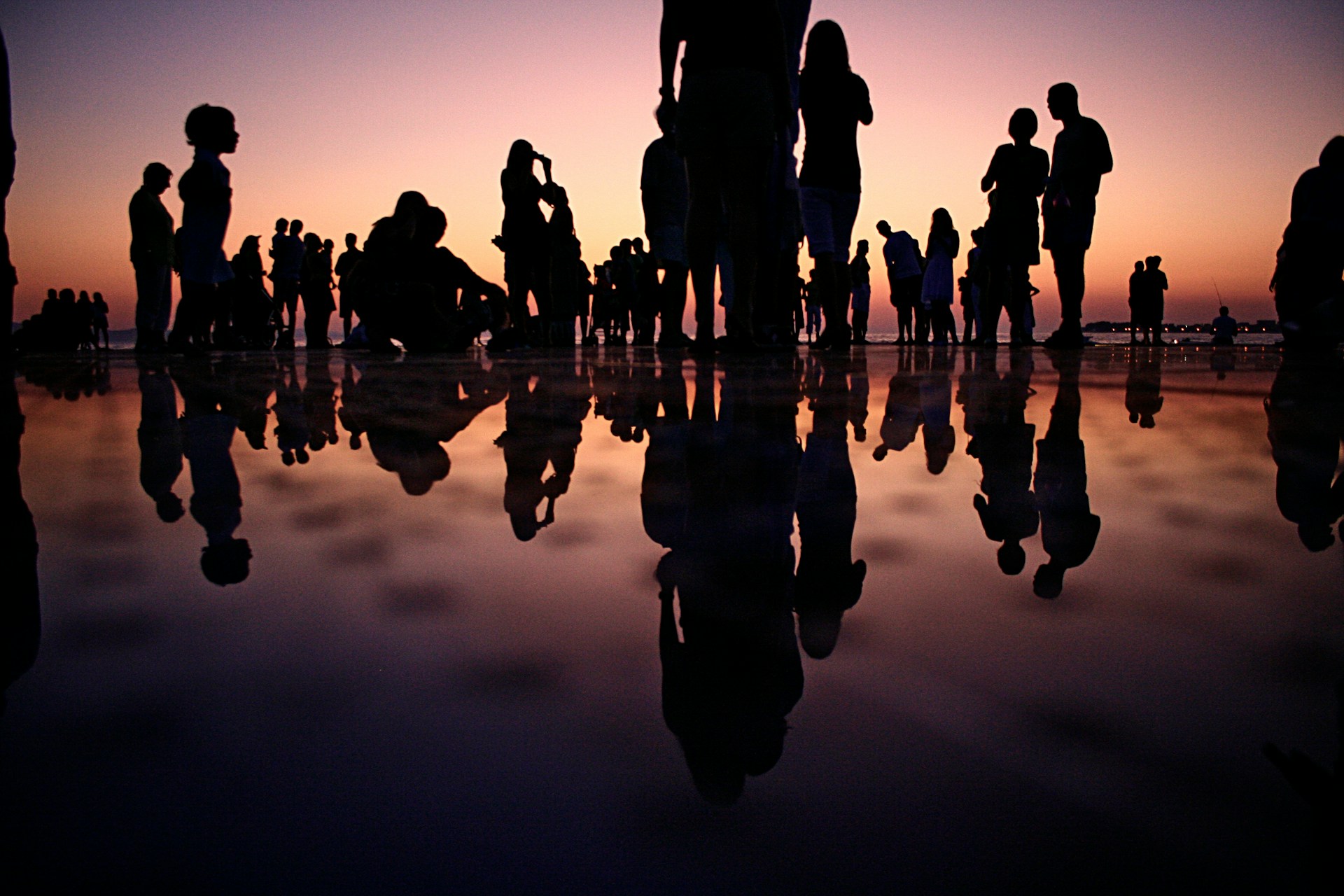
Fourth-Person Knowing: The Missing Perspective
Fourth-person knowing has a particular quality of being neither my knowing nor yours, neither solely outside nor inside me, but rather something beginning to articulate from a different source that operates beyond these distinctions. Returning to Varela and the redirection of attention described earlier, when the act of redirection from object to source is applied to collective inner experience, what is that source? We identify it as the presence of the social field. Because the social field becomes known to us through our interactions, we have an intimate relationship with it, but the field also takes on its own autonomous beingness.
The beingness of the field is reflected in various forms of non-Western, holistic, and integrated cosmologies and epistemologies such as Daoism and Indigenous Knowledge Systems. Maori scholars Johnson, Allport, and Boulton (2024) state, “Our worldview includes not only the interconnected ecological, social, psychological, or economic, but also the philosophical and spiritual, and the connection between the Atua (deities) and humanity.” The interconnection that gives rise to fourth-person knowing has been surfaced by Melanie Goodchild, Anishinaabe from Ketegunseebee First Nation, in her work on Relational Systems Thinking. In her dialogue with Haudonosaunee Elders, the source of knowing embedded in Indigenous knowledge systems surfaced repeatedly. Elder Dan Longboat shared, “The authority for our knowledge as Indigenous peoples has come from a place of spirit, not out of the minds of men and women.” That knowledge is communicated through an intimate relationship with the land, as Elder Rick Hill explains, “Knowledge is innately tied to the land, it’s right there, it’s waiting for us to pay attention to it, to guide us, through dreams, through visions, through practice, and maybe that’s our greatest strength, is getting people reconnected to the source of knowledge.”
Juxtaposing Western research paradigms with Indigenous paradigms, Goodchild cites Opaskwayak Cree scholar Shawn Wilson, who points out that while Western paradigms emphasize individuals as the source of knowledge, in an Indigenous paradigm “knowledge is seen as ‘belonging to the cosmos’ and we humans are only the ‘interpreters’ of that knowledge.” Thus, the source of knowledge extends beyond the human, to land and all life, and to the cosmos. It is this perspective we find reflects the concept of fourth-person knowing that we are attempting to articulate here. At its source level, the knowing of the social field is an expression of that which is unique and yet universal, or cosmological, and which, through our presence, attention, and intimate relationship with it, can manifest through us.
Fourth-person knowing shows up in our individual experience, but it is not of our making. Nor is it of a specific interaction or intersubjective experience—it is not something that exists only between us. Rather, it is something within, between, and beyond us simultaneously. It is reflective of Rosa’s concept of resonance at its deeper levels: that we can establish a connection to the call of the world through both our inner and outer action in an encounter that “transforms both sides, subject and the world experienced” (Rosa, 2018, p. 42).
Through our research process, we arrived at five phenomena we believe point to fourth-person knowing and distinguish it from existing epistemological forms, as follows:
- Fourth-person knowing is experienced as something that is looking at me but isn’t me, a beingness that is not me and yet does not manifest in my/our absence.
- Fourth-person knowing shows up in our individual experience as a distinct mode of decentering of perception, including a shift in the way we experience space, time, self, light, sensation, and warmth.
- Fourth-person knowing comes with a heightened sense of possibility, in which a future potential that was previously experienced as out of reach moves inside the horizon of what feels doable and possible.
- Fourth-person knowing tends to manifest with an enhanced co-presence of the whole and the individual, making possible the freedom to align individual and collective attention, intention, and agency.
- Fourth-person knowing tends to activate longer-term generative social fields that give rise to sustained and significant practical results.
It is our hope that by articulating and centering fourth-person knowing we can provide an epistemic basis for individuals and collectives to recognize, connect with, and manifest what is theirs to do—their “unique imprint”—within the wider pattern and movement arising in our current moment.
READ THE PAPER IN ITS ENTIRETY HERE
Reprinted from the Journal of Awareness-Based Systems Change, Volume 4 Issue 1
Scharmer, O., & Pomeroy, E. (2024). Fourth Person: The Knowing of the Field. Journal of Awareness-Based Systems Change, 4(1), 19–48. https://doi.org/10.47061/jasc.v4i1.7909
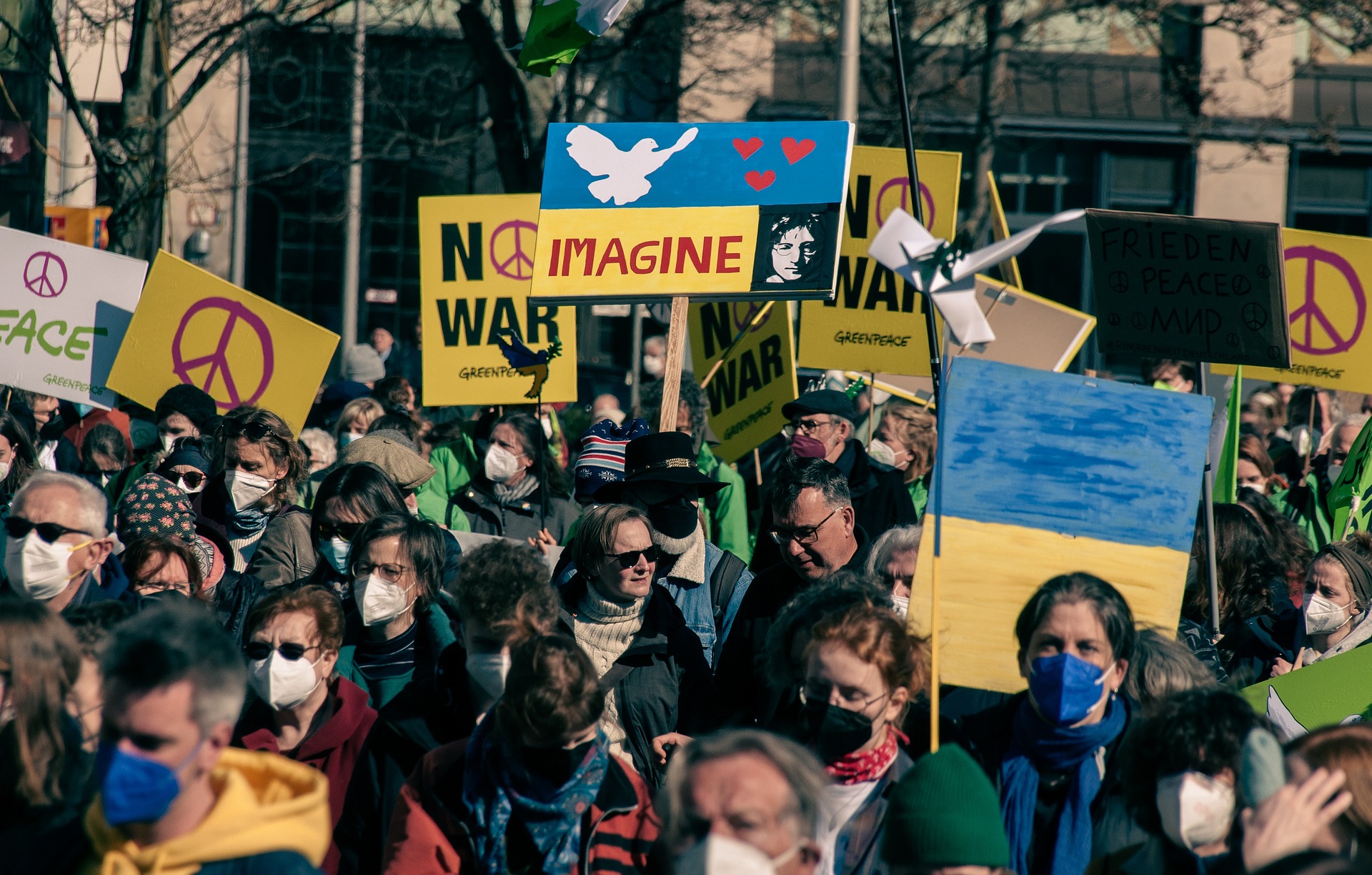

About C. Otto Scharmer
C. Otto Scharmer is a Senior Lecturer in the MIT Management Sloan School and co-founder of the Presencing Institute. He chairs the MIT IDEAS program for cross-sector innovation and introduced the concept of “presencing”—learning from the emerging future—in his bestselling books Theory U and Presence (the latter co-authored with P. Senge et al). He is co-author of Leading from the Emerging Future, which outlines eight acupuncture points for transforming capitalism. His most recent book, The Essentials of Theory U, summarizes the core principles and applications of awareness-based systems change.
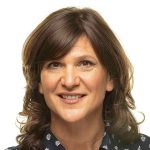
About Eva Pomeroy
Eva Pomeroy is Research Lead at the Presencing Institute and core faculty of u-lab, an online-to-offline change process offered on the MITx Online platform. She holds an Affiliate Faculty position in the Department of Applied Human Sciences, Concordia University, Montreal, Canada. Eva is Co-Founder and Managing Editor of the Journal of Awareness-Based Systems Change. Her action research focuses on social field approaches to transformative learning for individuals and systems.
Surrendering Wealth
Surrendering Wealth
featured photo | Matthew Henry
These are the questions that I am asking myself as a white wealth inheritor in the times of late-stage capitalism and ecological collapse:
- What happens to a psyche, to a soul, to a people acculturated into thriving on the suffering, abuse, and extraction of others?
- At what moral and spiritual cost has come to those of us beneficiaries of systems built on violence?
- What are the futures we enable when we do not face the truth of what has created this present meta-crisis?
- What possibilities emerge when we open to the truth of who we are and how we got here, and allow ourselves to be transformed through the process of reckoning?
- Who am I, who are my people, on the other side of whiteness and wealth accumulation?
- After capitalism, what will be the stories we tell about who we were, and who we’ve become? And what is the role of wealth to get from here to there?
These questions haunt me. They crack me open. They beckon me to dare to imagine the futures that are calling out to be born. They ask me to tell the truth.
The truth is, at 18 years old, I began to receive access to a multi-million dollar inheritance. It was not a surprise to me, as my parents had chosen to normalize the topic of money with me and my brother at a young age. Yet even as a child, I could feel the dynamics of power amidst my classmates, in our neighborhood, with the people (often people of color, often immigrants) who came to clean our home, tend our garden, and care for us. I could feel the contradictions between what my family told me – it’s okay to talk about money, we have it, this isn’t something to be ashamed of or hide – and the unspoken cultural agreement I simply understood: maintain silence. It was thick in the air.
The money came from my father’s side of the family from a company founded by an ancestor six generations ago, now one of the world’s largest multinational publicly traded corporations. The wealth in my name is now housed and grown through a mixed portfolio of investments at a private wealth management office in a tangle of trusts, agreements, laws, and jargon that was set up to grow wealth in my family for generations to come. I was told, be grateful.
Writing this today, offering a glimpse into my unfolding orientation to money, wealth, reckoning and healing in a public way, I feel the voices telling me to keep quiet, to simply allow the system that has been working for my benefit to continue doing its job. I feel my belly tighten with the vulnerability of opening my mouth to question that system that has offered so much material power and privilege to myself and my family.
This speaking out is for me a choice – and also not a choice. I must weigh what is at stake in my silence: forests disappearing, oceans rising, bombs extinguishing entire families, languages and histories evaporating, children locked up, labor stolen for profit…
While I understand that as an individual I cannot claim to have created these systems of exploitation, I also cannot deny my complicity within them, both ancestrally and financially, and thus my responsibility to grieve, reckon, and reach towards the adjacent possibilities of healing, liberation and repair.
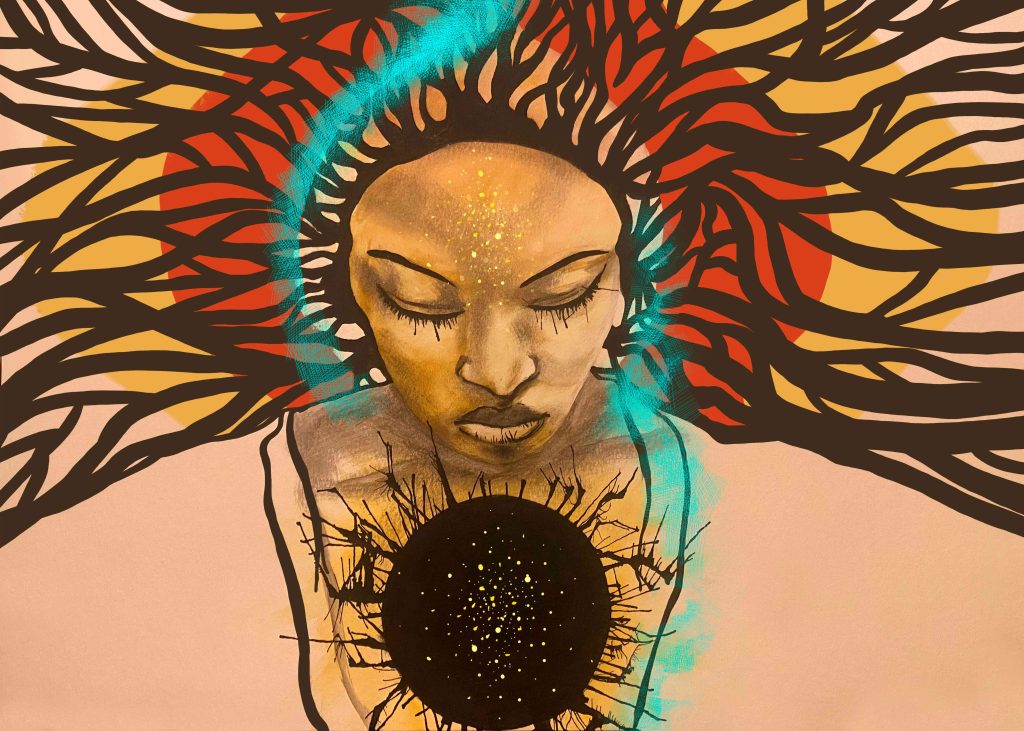
I began to be called by my friends and community members, and called into movements such as Stand with Standing Rock and Black Lives Matter, to look more deeply at both the legacies of my ancestors and also of the wealth in my name: to question it, to wrestle with it, to interrogate it, to understand it, and most importantly, to find ways to move it towards what my Jewish ancestors called tikkun olam, repairing the world.
I have found my map to this work in finding, learning and carrying the stories of my ancestors – a practice that poet and movement elder Aurora Levins Morales calls raícism. In the essay “Embracing Rootedness and Radical Genealogy” she writes, “Raícism, or rootedness, is the choice to bear witness to our specific, contradictory historical identities in relationship to one another. It is an accounting of the debts and assets we have inherited, and acknowledging the precise nature of that inheritance is an act of spiritual and political integrity.”
Through raícism, I come to understand that my lineage is not just one thing. It is a braid of stories that is both about hoarding wealth built off of extraction and about people doing their best to care for and provide for their families. It is both about dehumanization (a great-grandfather was involved in the eugenics movement in the early 1900s) and about care (the same great-grandfather began a movement in reproductive rights that has empowered hundreds of thousands of women around the world). Yes, my ancestors are early colonizers in Massachusetts, they were eugenicists, perhaps enslavers. My ancestors are also Jewish Yiddish-speaking shopkeepers, Irish working-class train conductors, abolitionist judges who opposed the Dred Scott decision. I have so much to learn from my people – from their mistakes and their crimes, and also from their love, their creativity, their dreams and their sacrifices.
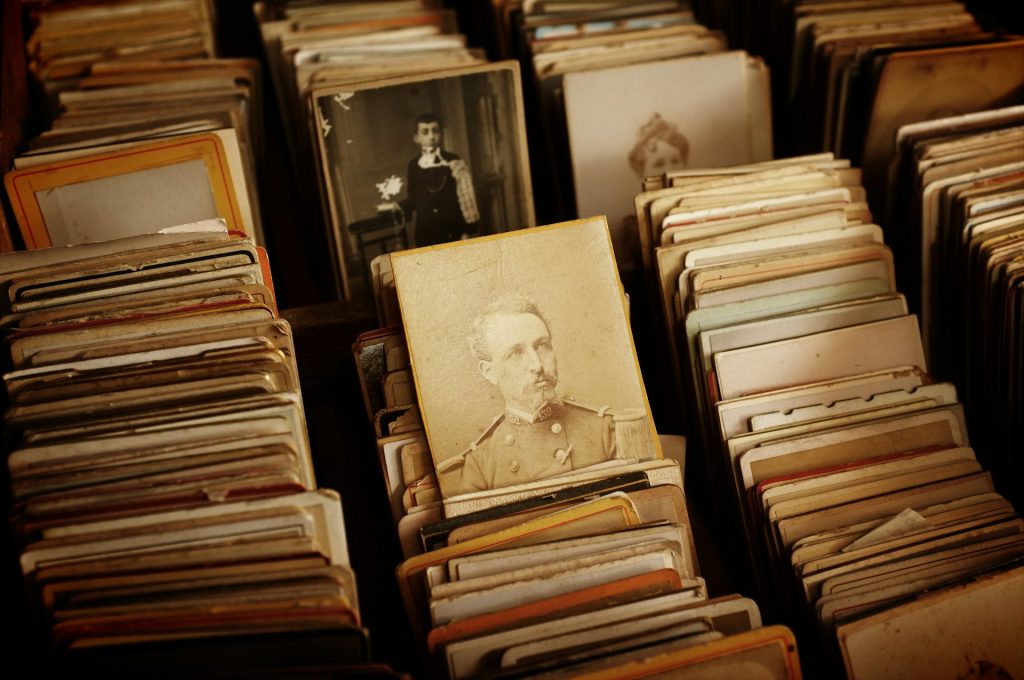
All these stories and their implications are not to be held alone. Communities like Resource Generation, Solidaire Network, and the Transition Resource Circle have been critical for rooting me in context and relationship. These comrades have rigorously and lovingly deepened my political analysis of the intersecting systems of domination, exploitation and separation and supported me to understand my story within a larger context of injustice that is both a moral imperative to repair and an invitation to heal. They have helped me recognize that together we can be part of a powerful grassroots social movement ecosystem organizing for justice, liberation, and remembering our human place with the earth again. Above all, these intergenerational, international, multi-racial, cross-class friendships are the ones I can lean on when it all feels impossible to hold alone. The more I surrender into deep, real, and honest relationships with those whose liberation is bound up in my own, and to the Earth, the more I trust in the person I am becoming, and the more I can let go — of money, of control, and the need to have it all figured out.
For years I wanted to hide from the money and the ancestral stories of harm, to bask in the ignorance of simply not understanding it, and leaving it be. Even in turning towards my ancestors and money, I cannot pretend that disentanglement with my inheritance is complete or straightforward. I have not given all the money away (yet) and sometimes crave, and sometimes surrender to the luxuries that this wealth offers — the phone, the car, the travel, the choice to learn, or work, or rest. Beyond narratives of moralism or redemption, I still find pleasures in the wealth, and gratitude for it, amidst the grief. I am learning to let them co-exist in a generative paradox – one that calls me, and my people, into something more fertile. I am learning to sink my roots, and reach.
My commitment is to stay with the trouble, with the wound, with the monsters and wonder into what kind of imperfect redemption might be sought for my lineage, for the futures of my descendants, beyond the conceptions of power and wealth we have been taught to accept as the only way. As Aurora Levins Morales so helpfully asks, “how [do we] transform shame and denial into wholeness”? I need all of it, the beauty and the brokenness, the grief and the gratitude, and the willingness to become someone worthy of offering forward a different kind of inheritance.
As I allow this inheritance to begin to flow in creative and responsive ways towards land rematriation, reparations movements, grassroots organizing, mutual aid, and the many forms of community-based experimentation towards post capitalist futures, I am discovering that the praxis of healing wealth and surrendering control requires the utmost humility.
It requires me to know, love and trust myself, and not take myself so seriously. It requires that I offer myself grace that the world around me might not. It requires joy, laughter, song and dance. It requires rituals, community, long walks, and critical conversations. It requires the reminder again and again that the definitions of wealth are not static – they are cultural, and therefore, everchanging. And it is time to engage in deep cultural renewal, remembering, and the redefinition of wealth through reparative actions that alchemize and transform wealth and the people who hoard it.
As the systems we have known collapse around us, I am asking:
What is ready to die?
What are the ceremonies and rituals of initiation we need to accompany us into this time of hospicing?
What is the Earth asking of us?
What shapes will our bodies, our relationships, our economies take as we surrender, as we remember, as we disintegrate, as we transform?
What is being born?
Where are we going?
Are you coming with me?
Return to Kosmos Edition 24, Issue 3, Healing Wealth
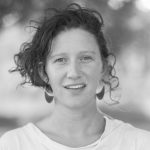
About Justine Epstein
Justine Epstein apprentices her longing for liberated post capitalist futures as an organizer, facilitator, rites of passage guide, mentor, naturalist, and lover of birds and wild things. She co-facilitates the Ancestors & Money Cohort – most recently as a class at Stanford University – and offers 1:1 mentoring on the same topics.
Summoned by the Earth | A Story of Healing and Protection
Summoned by the Earth | A Story of Healing and Protection
featured photo | Shashank Kumawat
Amid uncertainty, the crucial question arises: How can we bring healing and protection to the Earth? In 1990, Cynthia Jurs journeyed to the Himalayas holding this inquiry, seeking wisdom from a revered lama. Tasked with an ancient Tibetan practice, she embarked on a monumental mission: to carry Earth Treasure Vases filled with prayers and holy offerings and bury them in places around the world for healing. Her book, Summoned by the Earth – Becoming a Holy Vessel for Healing Our World, chronicles Cynthia’s journey – “sometimes harrowing, but always shining with beauty at the threshold between urgency and the timelessness of the sacred.” Through planting these humble vessels, an ancient sacred technology is revitalized, building a global community in its wake, dedicated to Earth’s protection. In this most critical hour, Cynthia’s story offers insight and inspiration, urging us to hear the cries of the Earth and answer our innermost calling as protectors of Gaia.
This brief video will familiarize you with Cynthia’s incredible journey.
Kosmos (R.Fabian) | So we’ve only met physically one time, and that was in Findhorn at the New Story Summit. I had fractured my knee and was hobbling around making movies. I remember regretting that I did not connect with you more deeply. You were already a dharma teacher in our tradition and knew our teacher, Thay (Thich Nhat Hanh) very well, while I had just begun traveling to retreats with him.
Cynthia | No worries. I felt you at that time and appreciated your presence very much at Findhorn. My life totally changed when I met Thay, but that’s another story.
Kosmos | I love this book; so many vivid scenes. There is a passage in Australia, where you describe how all the places you had planted the treasure vases, up to that point, lit up for you as a mandala.
Cynthia | Going to Australia was significant because the aboriginal culture is so amazing – their perspective, their awareness, their consciousness. You probably have seen the artwork with the songlines on the landscape depicting the country, the territory, the land, in between locations and the dreaming stories. So that whole notion became integrated into this idea of the treasure vases forming a global mandala, connecting places where things happen on the land.
When we meet for meditation every full moon, we invoke all the locations where the Earth Treasure Vases have gone, we name them, which takes a good amount of time! You get a feeling for each node over time, and it’s a way of keeping them alive. And then we imagine radiating our love and our healing intentions and all that is being carried into those nodes in the form of light as a technology of the sacred.
Through Joanna Macy, I also came to realize we are all holy vessels. It’s one thing to take this little clay pot and place it somewhere that needs healing, but we all have that capacity as holy vessels. So, then we imagine ourselves or our location as a node on the mandala too.
Each one of those places where a treasure vase has been planted is like an acupuncture needle. It’s a spot where those energies are going into the body of Mother Earth and doing whatever they’re going to do. And the rational mind can’t figure it out. There’s no way because it’s operating on another level. But that’s how acupuncture operates also, right? And the things that have happened are so miraculous and synchronous that you can’t not say, ‘oh wow, this is having an effect on some level’.
Kosmos | Yes, it is fascinating that in many places the treasure vases have catalyzed transformation. I’m thinking of your stories from Africa, in particular.
Cynthia | Yes. One was going to Liberia, which we described in a previous article for Kosmos and in the book. After it was planted in this village, the elders said, we have just come out of this civil war and peace is our most important prayer. And an ex-combatant, rebel general suggested building a peace hut in the village, a traditional round structure where people come to resolve conflict and work through issues and cultivate the sacred. So, we raised the money, and they built a peace hut.
Since then, we’ve built four peace huts with the help mainly of Sister Chang Kong in Plum Village. She’s been so generous with supporting the work because that particular Liberian, the former general, came to live at Plum Village for three years, and then some of his colleagues did too.
Taking the treasure vase to Liberia, into the worst fought area of the war, resulted in people realizing that they wanted to sustain those prayers. And so what did they do? They started a whole peace building program. We were working with the women who stopped the war, who are natural peace builders as well as ex-combatants and former child soldiers and community members in four regions.. So that is a huge outcome.
In Congo, a similar thing happened. I met Neema Namadamu through an organization called World Pulse. I wanted to go to Congo and needed some kind of connection to go there. And Neema said, ‘oh, yes, my sister come’. And so, we took a treasure vase there.
I ended up doing media training with women in Eastern Congo to get them to tell their stories. And then Neema got them online – teaching them how to get connected to World Pulse. It was very powerful. That was the beginning of what turned out to be her organization called Hero Women Rising when she came to the US.
I had this flag of the whole Earth that was kind of my altar cloth, and I set it out when we were completing the ceremony to bury a vase in the forest. I wanted to take it to the rainforest and work with the indigenous people, the Pygmy people of Congo, which Neema arranged. And when I held up the flag I said, ‘here’s Congo and here’s the United States, and the air that we breathe is generated in your forests’.
They didn’t know that. So, I connected Neema with Osprey Orielle Lake of the Women Earth and Climate Action Network, (WECAN). They started a tree planting program that is still going on in Eastern Congo.
Neema came to the US after that trip and stayed with us off and on for a pretty long time, and she used our nonprofit as her umbrella for a while until she got Hero Women Rising started. I consider her a living treasure.
These were the seeds that were planted and carried on. And that’s what happens, is that people discover their own deep calling, their own summons. And that’s what I feel I’m most interested in supporting. The treasure vases are filled with all these alchemical offerings and who knows? We can’t really know, but we see what happens when people take them where they need to go, and the inspiration that arises.
Kosmos | How many vases total?
Cynthia | Thirty originally. And at a certain point another forty. I call that the first and second generation. They were all made at the same time in Nepal. And I still have about five of these on the altar. In the meantime, I have gotten to know a woman from the Santa Clara Pueblo, in the Tewa world here in northern New Mexico. She is an activist, but she’s also an acclaimed potter. She agreed to lead a retreat to teach us how to craft earth treasure vases in the tradition of her people.
We used the clay from this land in the coil method, and everyone who came to the retreat had identified a location where they wanted to take a treasure vase. There were about 30 people at that retreat. And those are still in process, the treasure vases of the third generation. So that’s our focus now.
The two most recent ones are Washington, DC which is going to happen soon, and one that is just being dedicated to Auschwitz coming later on this year. Last year I led a retreat in Italy and its steward buried one of the second-generation vases there recently. Also, last year we did a pilgrimage to Greece and planted it on the mountain above Delphi. That story is also at the end of the book because it was a very powerful kind of culmination that happened for me while making the offering to Gaia at Delphi.
click each image below for captions
For All Locations of the Earth Treasure Vases, click here
Read stories from selected pilgrimages below
Original ETVs
- The Dtao Dum Forest, on the border of Thailand and Burma
- Hiroshima, Japan
- The Biosphere 2, in Oracle, Arizona
- The Source of the Ganges in India
- The Source of the Amazon in Peru
- The Arctic Circle, Alaska, in connection to the G’witch’in People
- The Kogi lands of the Sierra Nevada de Santa Marta, Colombia
- Telowoyan Village, Lofa County, Voinjama District, Liberia, West Africa
- The Blyde River Canyon, Limpopo Province, South Africa
- The Giza Plateau, Egypt
- Haleakala, Maui, Hawaii
- The Itombwe Forest, South Kivu Province, Democratic Republic of Congo
- Avebury, England
- Bindaluk, Jawoyn Country, Katherine, Northern Territory, Australia
Second Generation ETVs
- Gabarnmang, Arnhem Land, Australia
- The Original Garden in Findhorn, Scotland
- The Great Stupa of Boudhanath in Kathmandu, Nepal
- The Flint Hills of Kansas in the heartland of America
- The Santa Cruz Mountains near Silicon Valley, California
- Purnululu (Bungle Bungles), the Kimberley’s, Australia
- The village of Utiagvik at the edge of the sea in northernmost Arctic Alaska
- The Hanford nuclear reservation on the shores of the Columbia River in the state of Oregon
- Mount Ryosen above Fukushima, Japan
- Back to where it all began at the cave hermitage of Charok, Nepal
- Margibi County, Liberia
- Didthul Mountain in the Budawang wilderness of Walbunja Country, Yuin Nation, Southeastern Australia
- Our root temple Tolu Gompa, in Nepal
- Serpent Mound in Ohio, USA
Kosmos | You really had a deep insight of Gaia being an embodiment of the Three Jewels.
Cynthia | I’ve been practicing the dharma since the eighties, and have such a deep connection to the Buddhist teachings, but I always struggled a bit because the connection to the Earth seemed to be kind of a missing piece in the Dharma. I mean, not so much with Thay and all of his efforts in that direction, but with the Tibetans it’s a little bit of a missing piece. There’s also the issues that I bring up in the book about some of the outdated, hierarchical aspects of the Dharma and the way it’s passed on, and the abuses inside the tradition. To me, the abuse of women is parallel to the abuse of the Earth. So that was a big thread for me personally. I had to grapple with a lot of things, and it was the Earth Treasure Vase practice and my connection to the Earth that was the biggest healing. Venerating Tara was a very important practice for a long time, but as I kept going with the treasure vases, I kept feeling the need to have a more personal connection to Gaia.
And then one day, as I describe in the book, I was in retreat, and the mantra for Gaia came to me and then the visualization of the evolution of Tara into a manifestation of the Sublime Mother Gaia! But even before that, long ago, I was writing and reflecting on how the Earth is such an incredible embodiment of the Three Jewels because you have the teacher, the teachings and the community all woven into this incredible web of Life. I adapted these Refuge Verses to express this:
Perfection of Wisdom; Mother of Buddhas, bodhisattvas, and
all beings; nourishing, holding, and healing all; Great Mother
Earth, precious jewel of the cosmos, to you we bow in gratitude.
We take refuge in the Earth as our teacher, the one who shows us
the Way in this life.
We take refuge in the Earth as an expression of the dharma, the
teachings of interbeing, understanding, and love.
We take refuge in the Earth as an embodiment of the sangha, the
vast interdependent community of life in balance and harmony.Living within the web of life on Earth, we dedicate ourselves to
embodying awakened awareness on the path of healing in service to
all beings.We dedicate our lives to realizing our oneness with Gaia.
Gaia is such an amazing teacher, filled with so many remarkable teachings about being and interconnection with all the different communities of life on Earth. So that has been something I have carried for a long time, and it’s just grown. I feel the Earth is a really reliable source of refuge. Every time we go out in nature, we’re restored to our true self, we’re brought home.
The other key moment was in Nepal when I went back to where it all began and I had been made a lama, which I was somewhat conflicted about, because I really felt by that point that my source of refuge was Gaia. And then I fell off the mountain!
Afterwards, I was struggling to understand how my life had been spared, because really it was a near death experience. But when I relived it, which I did over and over again, I had the sensation of the Earth grabbing me and holding me to the slope of that mountain and literally saying, ‘not yet, you’re mine’! I survived, and I felt like I had to bring out this practice of the Sublime Mother Gaia after that because I had kept it to myself. The Earth was talking to me. Then, when I was writing the book, I recalled the whole story of the Buddha summoning the Earth to witness his moment of enlightenment under the Bodhi tree, which is an image I always loved. And the fact that he touched the Earth in that moment is so significant. It is the only story where you have an awakened being relating to the Earth as the witness. Calling upon and recognizing Earth as the ground for this experience.
Kosmos | It’s beautiful – from the question you formulated going up the mountain the first time, “How can I protect the Earth”, and then falling into the arms of the Earth as you came full circle. As with most profound insights, it really is so obvious. The Earth is an awakened being and Her natural laws and rhythms reflect the Dharma. She is a vast and diverse ‘sangha’ of interconnected life forms. This is a tremendous contribution you’ve made through your lived experience and service. And I really hope this insight rings out beyond the book and beyond our lifetimes. I consider it such a profound offering, and I thank you.
I only have one final question. What does it mean, in your view, to protect?
Cynthia | Well, the words I most often use in this practice are protection, healing, and restoration.
Protection is called for in certain places. Healing is called for in certain places, and restoration is called for as well. So when you look deeply at what’s happened to the web of life, to Mother Earth, you can see that there actually are very few places left that need protection. Most of them need restoration and healing, but there are some that are still in need of protection. And so when we connect with what we love and care about most in our precious human life on Earth, (which is in relationship to the One who gave us Life), and if we look deeply at all of the cultures and ecosystems that are part of the web of life, it’s within the context of a whole living system, that everything is interrelated, interdependent, every single aspect of it is important. Before there was such destruction and such unraveling of this interconnected web of life, these living systems worked in harmony, whether they be human, animal, plants, minerals, waters, or all the elemental energies and ecosystems.
So, the aspiration and the wish to bring protection I take very seriously. This is life and death. But I don’t think that it’s appropriate to create more conflict in the world. So, if we are defending some of these things in an adversarial way, that’s only going to create more conflict. We have to find a way to carry out this task that is not going to create more problems. That’s where practice comes in. That’s where the practice of mindfulness or the practice of cultivating awareness and deep listening and calm abiding, comes in. Because when we practice cultivating our wisdom and compassion, what happens naturally is that our reactivity settles down and our capacity to respond is enhanced. And we see the way to respond much more clearly. We see the way to respond that is skillful and effective, and it’s not contributing to more, you could say, samsara, because we operate out of our reactivity all the time. We’re just spinning that wheel, the wheel of cyclic existence. It just doesn’t go anywhere constructive. And we know this in our own lives.
So, as Thay would say, we have to stop. Even if it’s for 10 minutes a day, and just take another breath and come back to our true nature. That gets back to our connection with the Earth. It is when we stop and come back to our true nature, we’re also connecting to this larger, interconnected web of life that is also our true nature. There’s no separation between us and Gaia.
Kosmos | I have to tell you – before this interview, just closing my eyes for a few seconds, I had an image of you. It was an image of you as this rainbow, flying around and wrapping the Earth in rainbow energy and light. I never really had an image of somebody show up like that!
Cynthia | Well, that’s exactly the visualization, not that it’s me, but the visualization that we do with the full moon meditation, visualizing this light going around the planet and bringing restoration and healing and protection to all the places that it’s called for in all the ways that it’s called for.
Each of us has an individual role to play, and each of us is a tiny little node on the whole web of life, the whole mandala. We each have our part within the whole. And so, it’s important to find our gifts, to find our offering. And it doesn’t have to be some big thing. It’s when we are acting in our lives from that place of deep caring, that is the summons, the calling that we are hearing.
Kosmos | Many blessings for your journey, Cynthia.
Cynthia | Thank you. And for yours.
Excerpt from Summoned by the Earth, Becoming a Holy Vessel for Healing Our World
The next day, the rains came. Most of the group left early to walk the final leg of the journey with Lama Tsultrim and make sure we had seats on the plane back to Kathmandu. But on this misty morning, I walked alone, slowly, contemplating what had happened to bring my global healing journey full circle. I was still wrestling with my conflicted feelings about being made a lineage lama when Gaia was calling to me now.
And then, my ankle turned on a slippery rock. Suddenly I lost my balance and went over the edge of the mountainside. It was a sheer, steep drop-off, and the moment I fell I left my body. As I was tumbling head over heels down the slippery slope, I momentarily returned to consciousness, realized what was happening, and told myself, Cynthia, you are falling head over heels down the mountain, and there is nothing to stop you. I was acutely aware that it was several thousand feet straight down to the raging river and boulder-strewn canyon far below, and I left my body again.
An eternity seemed to pass when suddenly I came to an abrupt stop. I opened my eyes and found myself spread-eagled, backpack on my head, water bottles and trekking poles strewn here and there, but alive. I had no idea how I could have come to such a sudden stop. There was nothing but slippery wet grass on the steep mountainside in every direction. I checked my body and found no major injuries. A little banged up but not paralyzed and no broken bones. Alive.
I tried to stand up but was shaking. The terrain was so terribly steep and slippery I could not find firm ground to stand on. A wave of panic passed through me. I could not get a foothold and was deathly afraid that if I tried to move, I would slip and fall again, and then it really would be the end. I looked up to see the edge of the trail a hundred feet straight up. I had no idea how I was to get from here to there. The only thing to do was to start calling for help as I wondered if I would ever be heard and looked up into empty space.
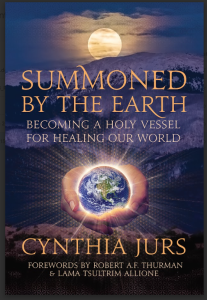
Excerpt courtesy Prospecta Press
Summoned by the Earth: Becoming a Holy Vessel for Healing Our World, by Cynthia Jurs (Author), Lama Tsultrim Allione (Foreword), Robert A.F. Thurman (Foreword)
For more about Cynthia’s work of sacred activism, subscribe to the newsletter, join the Full Moon Earth Treasure Vase Global Healing Meditation or learn the Sadhana of the Sublime Mother Gaia, go to: www.gaiamandala.net
Return to Kosmos Edition 24, Issue 2, The Call of Your Heart
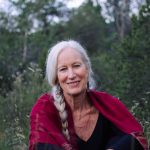
About Cynthia Jurs
Cynthia Jurs became a dharma teacher (Dharmacharya) in the Order of Interbeing of Zen Master Thich Nhat Hanh in 1994 and in 2018, was made an honorary lama in the Vajrayana tradition of Tibetan Buddhism in recognition of her dedication in carrying out the Earth Treasure Vase practice. Inspired by thirty years of pilgrimage into diverse communities and ecosystems, today Cynthia is forging a new path of dharma in service to Gaia—a path deeply rooted in the feminine, honoring indigenous cultures, and devoted to collective awakening. Cynthia leads meditations, retreats, courses, and pilgrimages to support the emergence of a global community of engaged and embodied sacred activists. She lives at the foot of the Sangre de Cristo Mountains in northern New Mexico where she is often found walking in the wilderness with her dog or gardening with her husband. You can find her offerings and join the global healing community at: www.GaiaMandala.net
(photo: Rachel Bliven)
Vessels
Vessels
Colors In Motion is excited to share a ‘Touchstone’, one of our artworks in motion, called Vessels, as a way to introduce the Kosmos community to our work, and to invite us all to open our eyes, ears and hearts to this experience. Vessels captures the essence of shape, form, and transformation.
It is a human reaction that when we see something we love we want to hold on to it. When it falls or fades away we feel it as a loss, rather than an expansion to include. We can practice ‘unlearning’ grasping and clinging by using the beauty of Colors In Motion to entrain our minds and our nervous systems to accept flow. Flow is a healthy approach to the rapid changes humans are experiencing, and can expand our capacity to be present in every precious moment.
Instruction | Turn off all artificial lighting. Take several slow deep breaths and relax the tension in your body. Find a comfortable viewing position in a quiet place, (headphones preferred), Start the video and expand to full screen size. Experience what comes, maintaining focus on the sounds and images. When your thoughts stray, simply return to your breathing and refocus your attention. Enjoy.
Artists’ Statement:
The theme of this inaugural edition of Kosmos Quarterly- Unlearning Together- is a necessary one. As co-creators of the world around us, we must look to ways we can evolve with all Life: ways that require us to collectively form new pathways and leave old ones that no longer serve us behind.
Colors In Motion develops digital artworks-in-motion with the intention of bringing beauty and centered calm into our busy lives, to public spaces and to our homes. For a decade, we have been working to shift our culture away from assumptions about digital technology, the purpose of art, and factors in our environment that drive us to increased levels of speed, stress, and anxiety.
Our first goal is to challenge the notion that ‘screens’ in our environments are negative influences. Certainly, we have all experienced aggressive news shows and disturbing images coming from televisions in public places and waiting rooms that we could not control. What if these same technologies could provide a sanctuary, inspire delight, and create a sense of simple play for our minds at moments when we need them most- a panoply of slowly-moving colors and shapes with gentle music and soundscapes, to soothe our mind, body, and spirit?
Colors In Motion was born in an interest to help us collectively unlearn limiting assumptions such as these:
We have a limitless capacity to handle ‘messages’. Instead, we acknowledge that we have already reached a tipping point at which too much input from our devices and our screens is causing great emotional and physical stress in our lives.
Technology makes everything faster. Instead, we open ourselves to opportunities where technology can be used to slow us down.
Special skills are needed to ‘play’ with technology. Instead, we revel in dynamic artistic expression that enables us to play, simply by being present.
The experts know what we want to watch. Instead, we realize that just because programming exists does not mean all people enjoy watching it. In many cases, the opposite is true.
Art must be permanent. Instead, we embrace the notion that experiencing art that is constantly changing, trains us to delight in the unexpected and to find comfort and beauty in the shifting and unpredictable moments of our lives.

About Colors in Motion
Christopher Graefe and Linda DeHart are Colors in Motion. Colors in Motion is dedicated to bringing beauty and centered calm to our busy lives by providing cutting-edge environmental display content, which calms people in public spaces, to help forward-looking facilities reach new audiences and clientele.
Explore ColorsInMotion.com to view our installations, experience the transformative qualities and imagine and consider where and how Colors In Motion can enrich your life. For licensing content for large screens in public spaces, contact Colors In Motion at info@colorsinmotion.com.
Glide
Glide
Glide
In the checkout line at the supermarket
I spot a man I recognize from years ago
when I was in my twenties. Back then
he was the boyfriend of a girl I knew.
They used to skate together at the local mall,
she in one of those red velvet dresses
you’d see in the Ice Capades, her leggings
white and studded with sequins, a tiara
in her tied-back black hair. He wore
ordinary street clothes: bluejeans
and some unremarkable sweater,
which let her stand out even more,
as though she were a woman
a man like him could only
dream into being.
Today he’s stooped and gray.
His raincoat so large, it drapes
over his shoulders making him look
like an afterthought beneath it.
In his shopping cart only milk, eggs.
On the ice he was the one I’d watch,
so unlike other boys, other men.
How unobtrusively he’d glide,
maneuver his partner as though his job
was to appear to disappear beside her.
I wish I could remember his name.
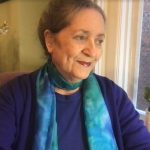
About Andrea Hollander
Andrea Hollander is the author of five full-length poetry collections and three chapbooks. Her many honors include two Pushcart Prizes (poetry and literary nonfiction) and two poetry fellowships from the National Endowment for the Arts. Several years after her move in 2011 from the Arkansas Ozark Mountains to Portland, Oregon, she established The Ambassador Writing Seminars, which she conducts in her home and, since the pandemic, through Zoom. Her website is www.andreahollander.net.


